Art and expression
Kula Manu p. 36
Overcoming challenges through art p. 32















Kula Manu p. 36
Overcoming challenges through art p. 32
















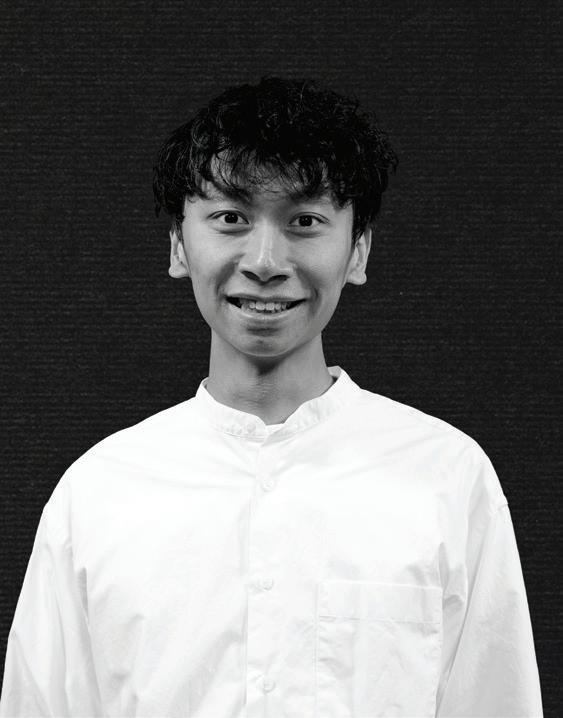
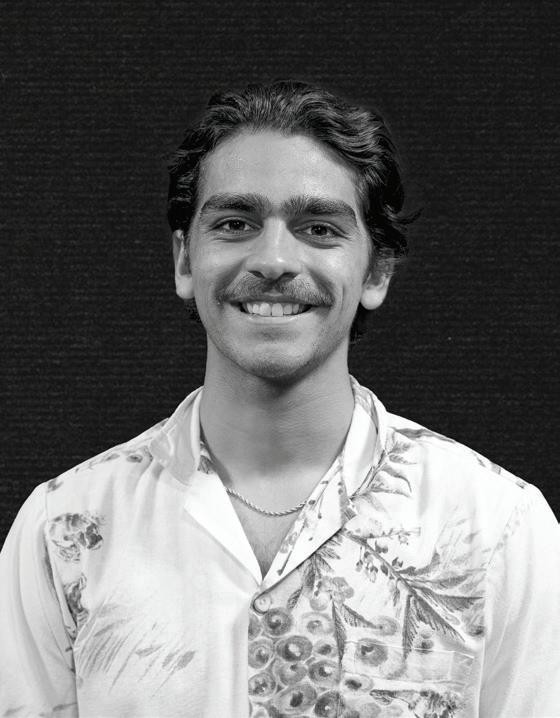
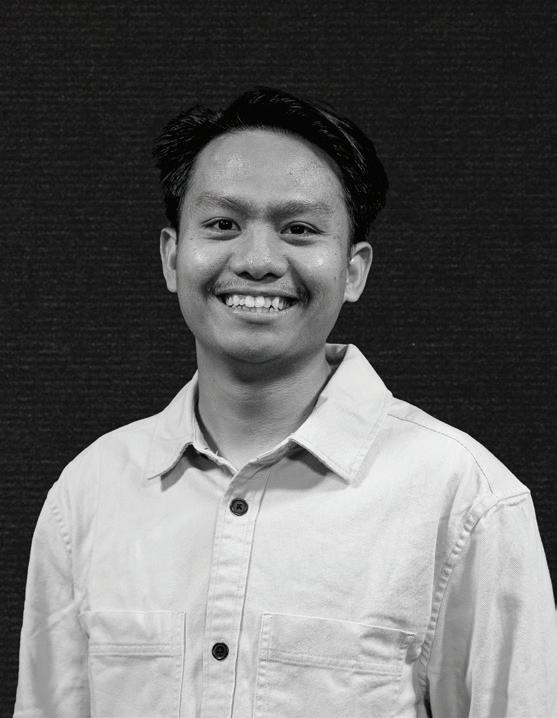

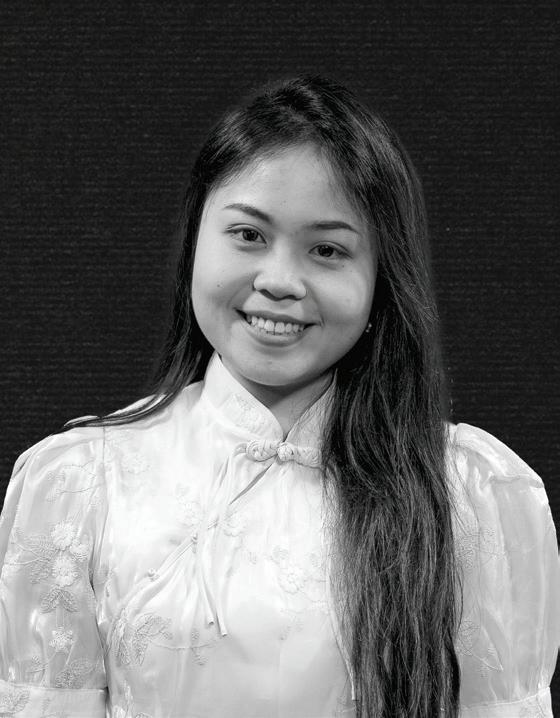


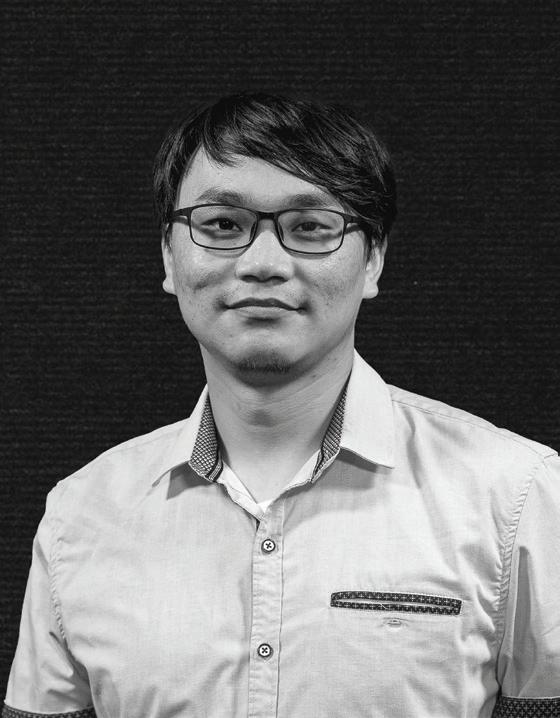
NEWS CENTER: Box 1920 BYUH
Laie, HI 96762
Editorial, photo submissions & distribution inquires: kealakai@byuh.edu
To view additional articles go to kealakai.byuh.edu
CONTACT: Email: kealakai@byuh.edu

Phone: (808) 675-3694
Office: BYU–Hawaii
Aloha Center 134
ON THE COVERS:
Front: Student Ya Yun Lin, the first-place winner of the 2023 Kula Manu’s art division, sits beside her self portrait she painted of herself. Back: Close up of her painting. Photos by Sugarmaa Bataa (Kendra).
The Ke Alaka‘i began publishing the same year the University, then called Church College of Hawaii, opened. It has continued printing for more than 65 years.

The name means “the leader” in Hawaiian.What began as a monthly newsletter, evolved into a weekly newspaper, then a weekly magazine and is now a monthly news magazine with a website and a social media presence.Today, a staff of more than 25 students work to provide information for BYU–Hawaii’s campus ohana and Laie’s community.
© 2023 Ke Alaka‘i BYU–Hawaii All Rights Reserved
During my time at BYU–Hawaii I have come to gain a passion for making art and an appreciation for art history. Art is not just about creating visually appealing images, but it is a medium of communication that expresses emotions, ideas and experiences. It is a way of telling stories, sparking conversations, and encouraging new ways of thinking. You will get a glimpse into the artists’ minds as you read through the stories in this issue and look at the photographs of their art. As a graphic designer and artist myself, I have come to learn that we can communicate through expressing ourselves in art.
In this issue, I hope as you look through the art works that the creative people here at this BYUH have created, that you will be as amazed at their talent as I am.
I urge you to take the time to appreciate art and learn about its history. Take the time to attend exhibitions, visit museums, support small art businesses and read about the works of great artists. It may inspire you in ways you never thought possible and enrich your life in ways you never imagined. Until then, let this issue inspire you. Check out some pieces at the Honolulu Museum of Arts (p. 42), learn about a cool method of printmaking called lithography (p. 26), see who your fellow classmates’ favorite artists are (p. 8), and check out some of the work that our very own professors make (p.16).
I hope you enjoy this issue that is art themed and it inspires you to create! Our team had a fun time photographing, observing, creating and writing about the art made at BYUH. Everyone has the capacity to make something beautiful!
Marlee Palmer, Graphic Designer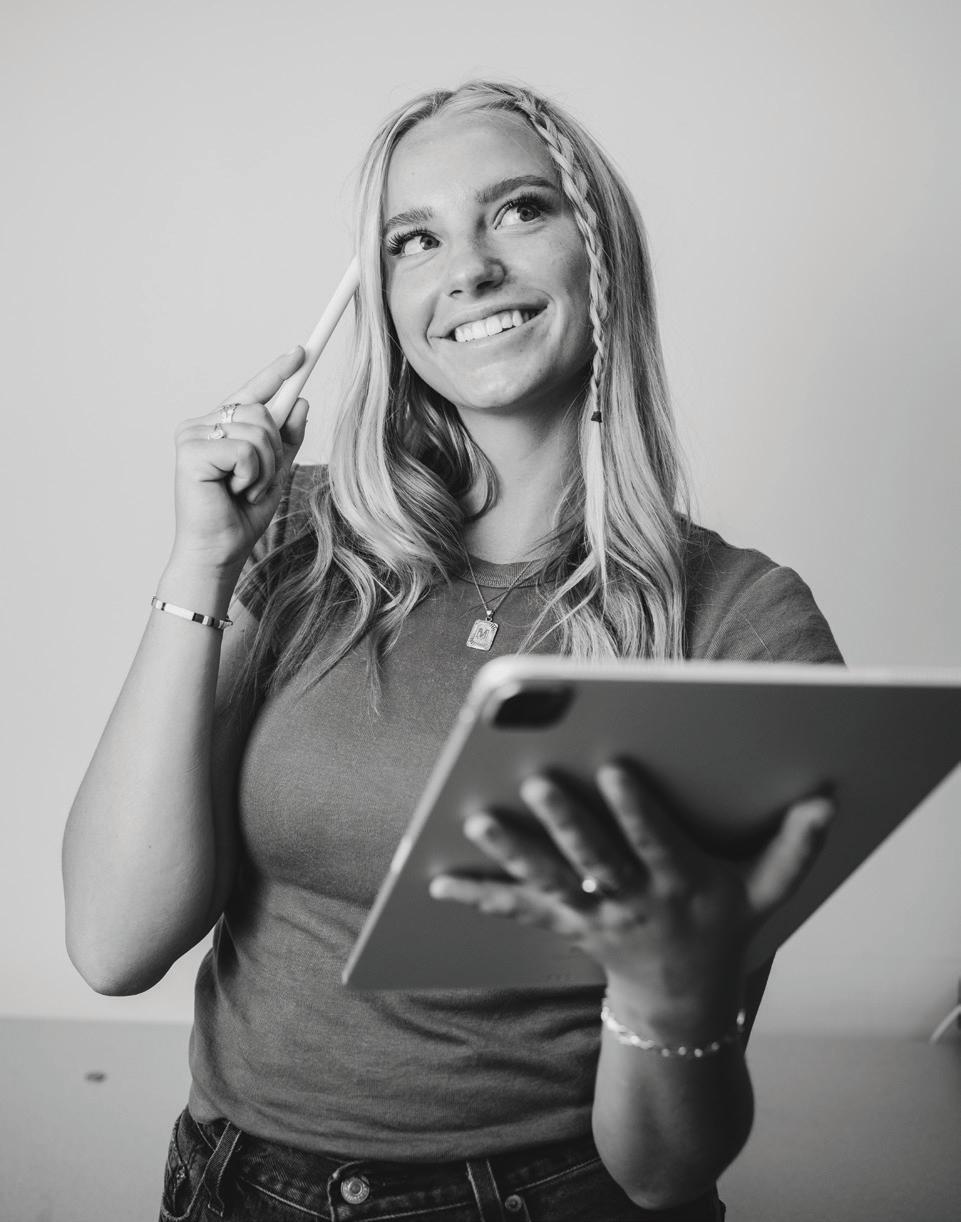
Who is your

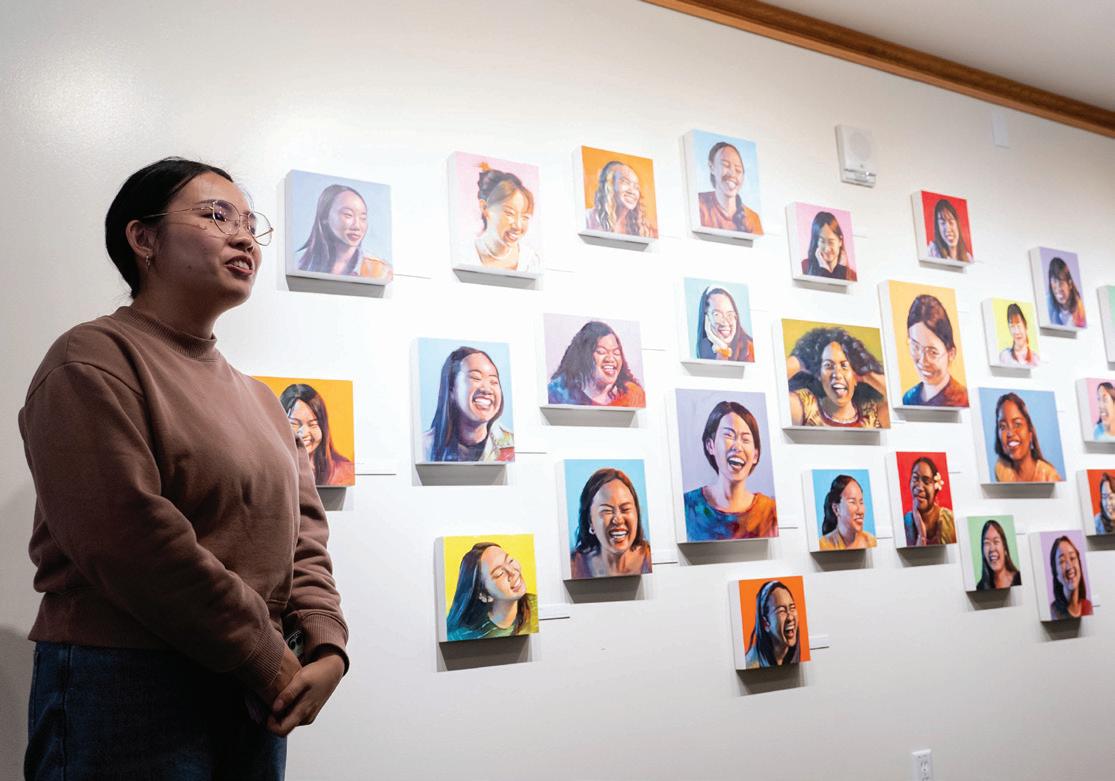

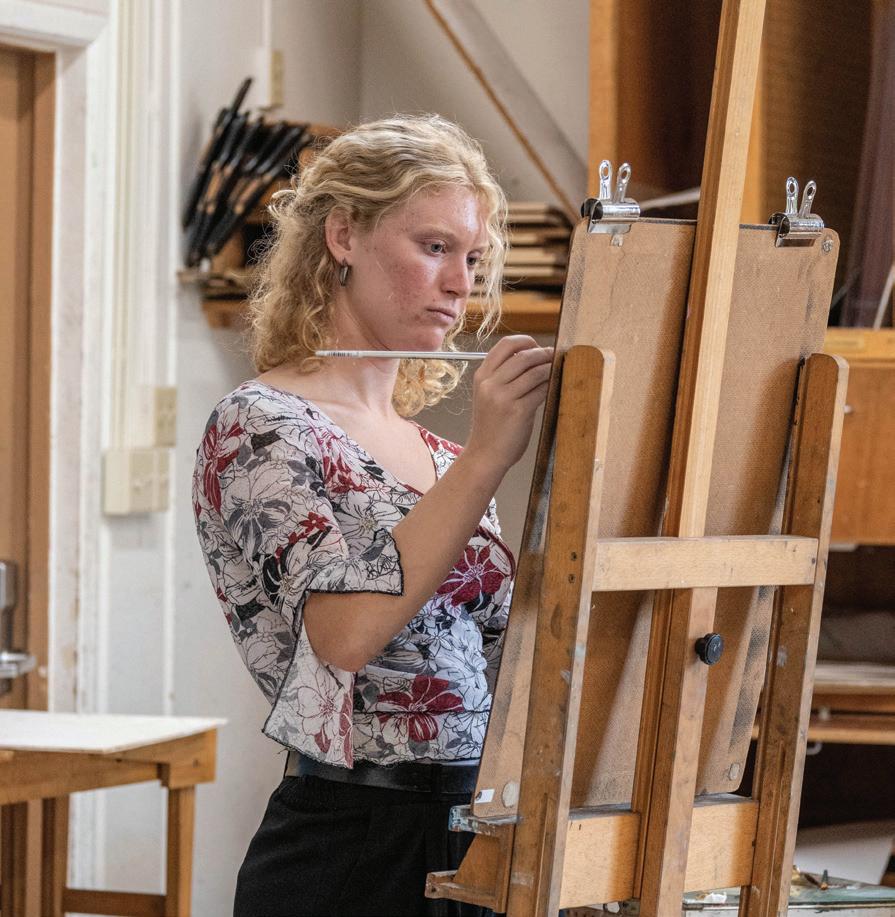
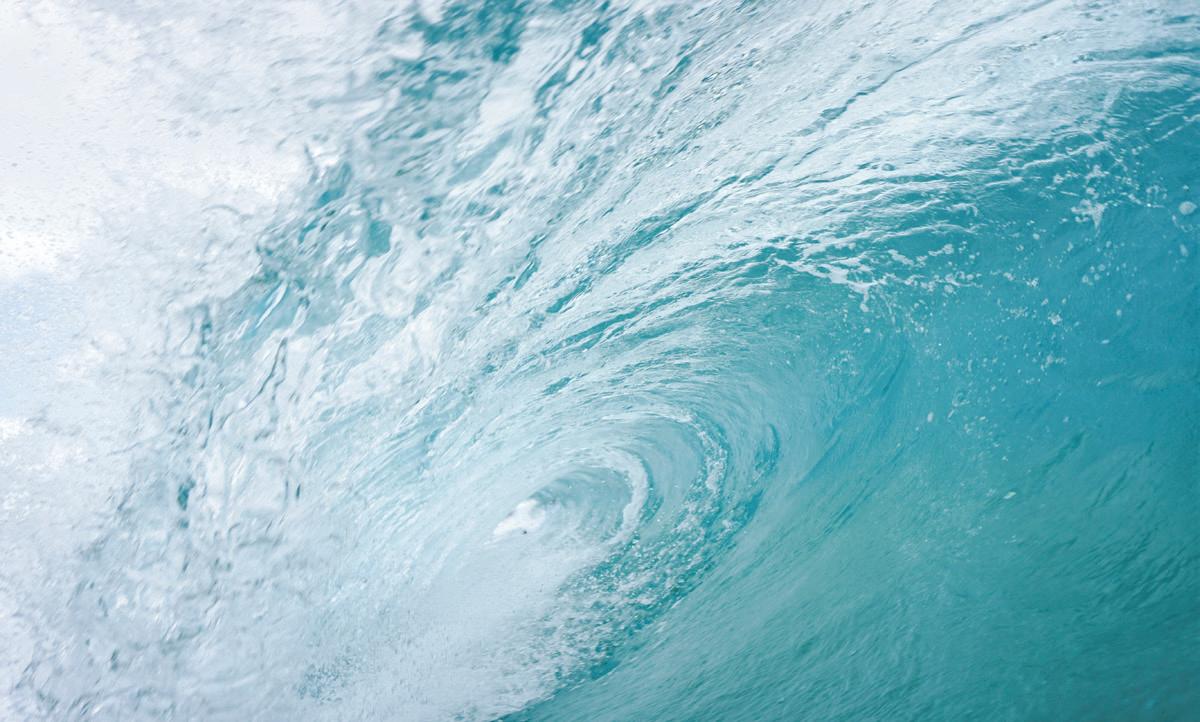

BYU–Hawaii students, with a love for art, said their favorite artists served as inspiration for them as they continued to hone their creative skills. Although they all felt they had things to improve creatively, the students said they are able to stand on the shoulders of giants, using great historical artists’ examples, as they developed their individual styles and techniques.
Jay-R Gallano, a freshman from the Philippines majoring in graphic design, said his favorite artist is Vincent van Gogh. He said, “His painting is more abstract. ... I feel like his paintings are moving sometimes.” Gallano said he sometimes looked at van Gogh’s artwork as a personal therapy when he was stressed out. “I look at his painting, and I just appreciate those kinds of things, like the details and pretty much the outcome of his paintings,” explained Gallano.

Gallano, whose favorite painting from van Gogh is “The Starry Night,” said everyone can learn to bring more life into their world. “If you feel like your world is very messy, just make yourself a way to go with the flow,” said Gallano.
Genevieve De La Cruz, an alumna from Kentucky who graduated with a degree in art education, said one of her favorite artists is Claude Monet. According to the Monet Gallery website, he was a French painter who lived from 1840 to 1926 and was one of the founders of the Impressionist movement, which began around 1860.

According to the United Kingdom Tate website, Impressionist artists, did not have the goal of painting things exactly as they appeared, but rather an “impression” of what the person, light, atmosphere, object or landscape looked like to them. They often painted with thick, messy brush strokes, to capture the spontaneous feelings of whatever they were looking at, and often did so outdoors with natural light, the website explained.
“I love how he captures light through strokes of various colors. Truthfully, it’s hard to pick just one Impressionist artist, because I love almost all the artists from that movement.” De La Cruz said she loves the Rouen Cathedral series by Monet in which in each painting he focused on the study of light. “He painted in the same spot and painted the changes in light as they happened. I love to see how the colors change and how he captures that moment in time,” she explained.
“Since I’m mostly a 2D artist, I really like to emulate that impressionist style with colorful brush strokes and broad shapes that give the suggestion of light and the objects. I try not to go for super realistic. Since cameras exist, that’s not my purpose. I want it to look beautiful and painterly, even if it is just a still life,” said De La Cruz.
Jimboy Fajardo, a senior from the Philippines majoring in fine arts, is a sculptor and painter but said he prefers sculpting. He said his favorite sculptor is Gian Lorenzo Bernini, who lived during the Baroque period, which lasted from the early 17th century to the middle of the 18th century.
The statue of the biblical figure David, by the Renaissance artist Michelangelo, is well-known throughout the world and is displayed in Italy. “Michelangelo’s David is really good. It’s really huge and the proportions are very accurate. … Bernini actually made his own version of David that really attracted me as an artist. For me, it’s more dynamic,” said Fajardo.
He continued, “If you would see the photo of Bernini’s sculpture of David, you would think, ‘Wow!’ It’s very alive and active. Not like Michelangelo’s. The reason why I like Bernini a lot is because of his dynamic action poses every time he does
a sculpture. So the muscles are very proportionate. The twisting bodies make you think it’s alive.
“That’s the main reason why, in the sculptures I’m making, I want to show my viewers that sculpture’s are meant to seem like a live object. So I am making sure my sculptures do not just look good, but the viewers will feel something from the sculpture’s emotion and posture. It’s very dynamic, and you can feel the emotion of the sculpture. That’s one of the best things I learned from Bernini in doing sculpture.”
Fajardo said he will continue to follow Bernini’s example in his future art by working to master sculpting the finer details of the human body, such as the muscles. “Even though it’s just a sculpture, I want to master how to make it really look like a real person. That takes a lot of training and studying.”
De La Cruz said she also loved Bernini and his sculptures. “His work in marble is incredible. He made marble look like billowing fabric and supple skin. I especially love ‘Ecstasy of Saint Teresa’ and ‘Apollo and Daphne.’ I love how you can see Daphne’s fingers transform into branches and leaves. It’s so delicate. It’s hard to believe that it’s marble. [As a 2D artist,] I find it amazing that he was able to make sculptures like that from a subtractive medium,” said De La Cruz.
As for painters, Fajardo said his favorite was Caravaggio. “Caravaggio likes very proportionate, accurate, realistic paintings. … What attracts me to Caravaggio is the way he uses black backgrounds. … It looks like the subject of the painting is inside of a dark room and there’s a light shining, reflecting the subject’s skin.” Caravaggio’s use of the dark background prevents any background objects from being a distraction to the viewer, helping them focus on the human figures who are draped in shadows, he explained.
He continued, “It’s just very interesting for me that Caravaggio’s style is speaking to me, that makes me appreciate more the subject matter and gives more emotion to the subject,” described Fajardo.
Ya Yun Lin, a senior from Taiwan majoring in painting, said one of her favorite artists is a Korean artist named Zin Lim. “I first heard about him through Professor [Jeff] Merrill. Most of his artworks are created with charcoal or oil paint.”
Lin said Lim’s series “ID” is her favorite of his paintings. She explained, “It’s a portrait of half-human body paintings with very unique colors, such as blue and green, that creates mystical feelings. I would like to create something that shows my emotion as well. So in his artworks, there is something that I would like to learn and apply. How to control the brush strokes, and what colors go well together.” •
Painting titled “Les Coquelicots,” meaning “poppies,”by Claude Monet.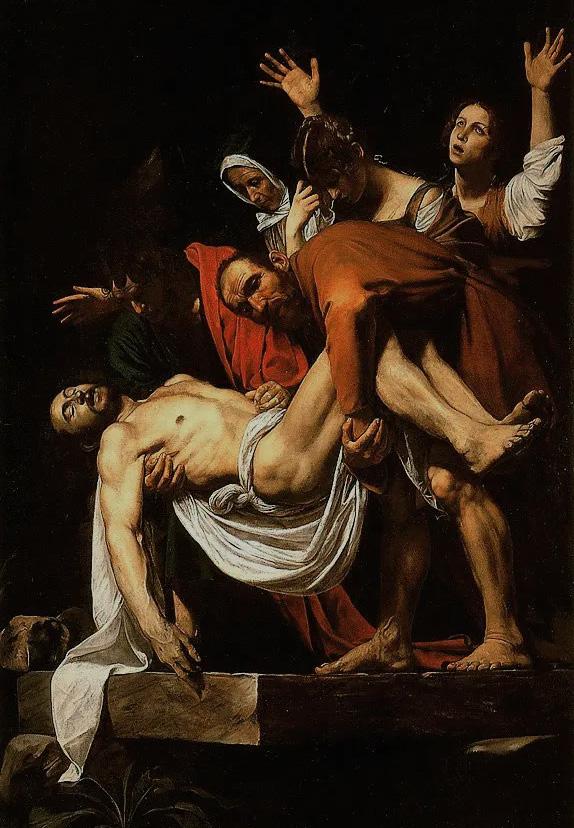
 BY ABIGAIL HARPER
BY ABIGAIL HARPER
From monthly art subscription boxes to paintings, sculptures and video games, nine bachelor’s of Fine Arts students showed off the creativity of their senior projects. The annual BFA Show was held in the Mckay Auditorium Foyer.
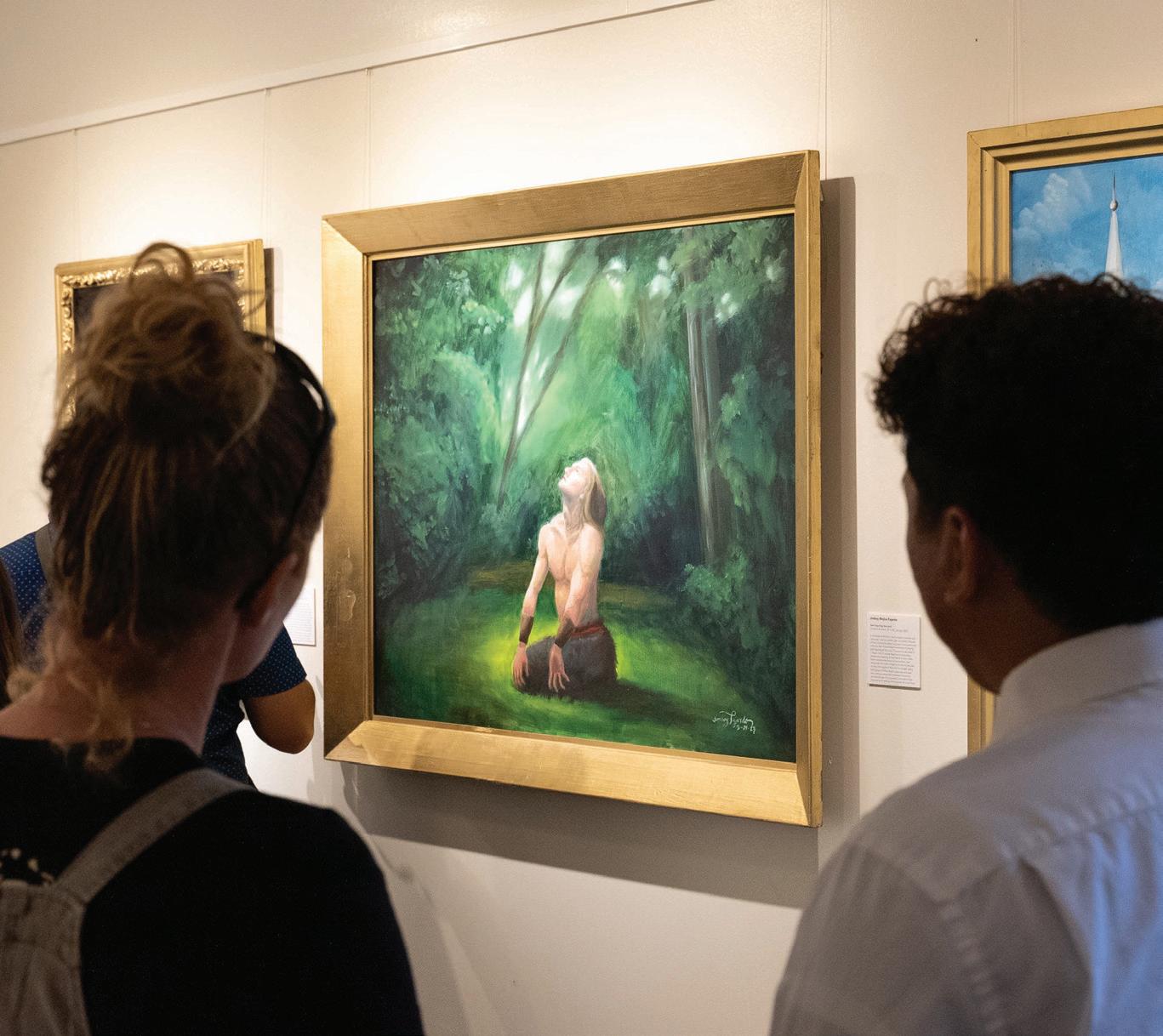
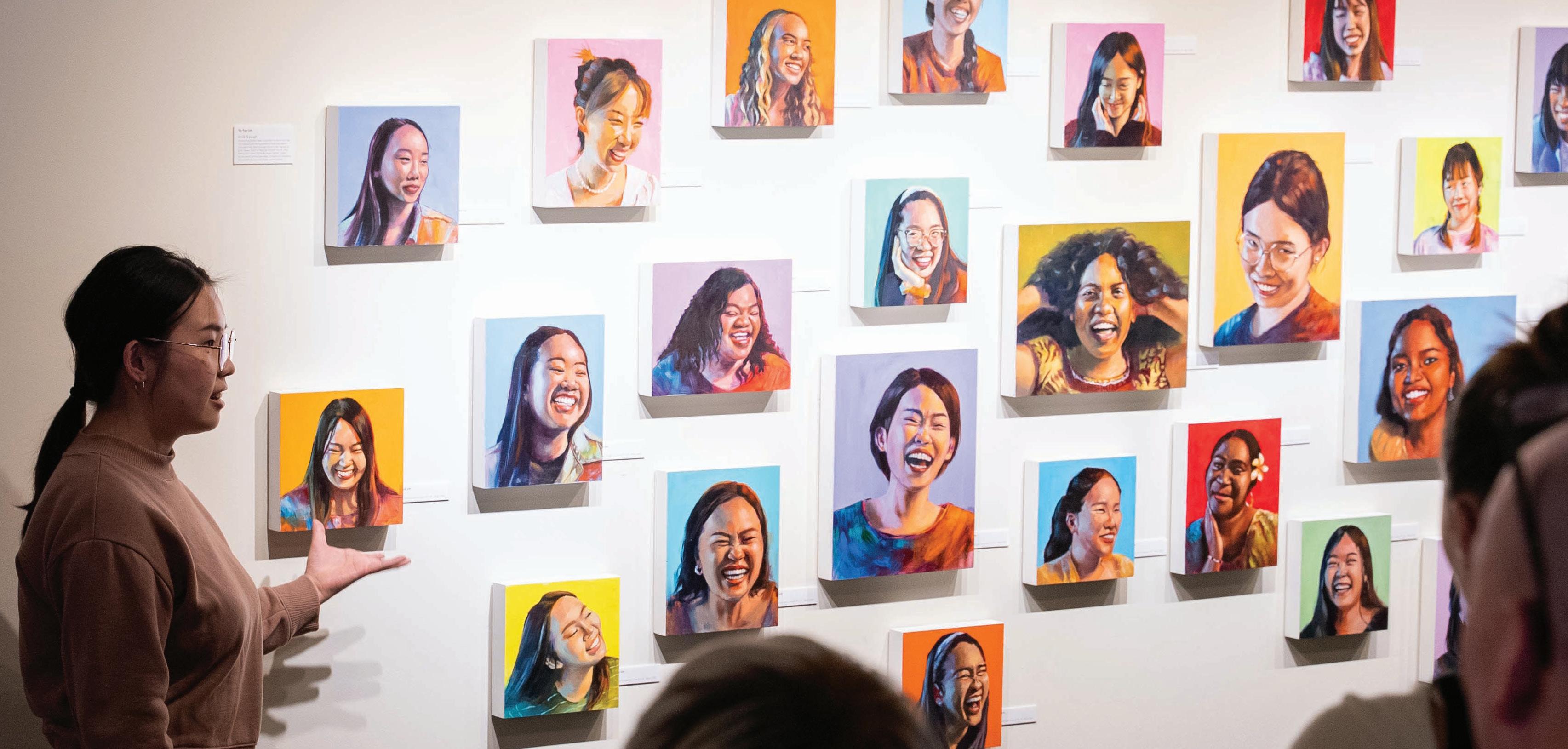
Students and teachers mingled around as the artists explained their work. Ya Yun Lin, a senior majoring in fine arts from Taiwan, painted 29 portraits of varying sizes of girls smiling. Combining both acrylic and oil paints to create the finished work, Lin said, “I am hoping to give viewers positive feelings through my art.”
Marlee Palmer, a senior fine arts major from Utah, created a brand called “Art with a Capital A” and monthly subscription boxes. Inside each box was a zine explaining an art movement, some supplies to complete an art prompt in that style and a tote bag. As of right now, she is not selling them, but she said she hopes she reaches a large following on the Instagram account @artwithacapital.a.
Another senior fine arts student, Heidi Hayden from Washington state, created a video game called Lights on Disability. Hayden said the video game is meant to shed some light on disablilites that aren’t often represented in games. She said she was inspired by her brother. “He has a rare heart condition,” she explained, “but he loves to play and beat me in any video game.”
Reagan Weston from Oregon and Janely Dioquino from Utah, who are both seniors majoring in fine arts, created projects to help empower girls in different ways. Weston’s project focused on creating space for college-aged females to find support and belonging through social media. Dioquino’s work was aimed at 13-year-old Guatemalan girls to help them further their educations. •
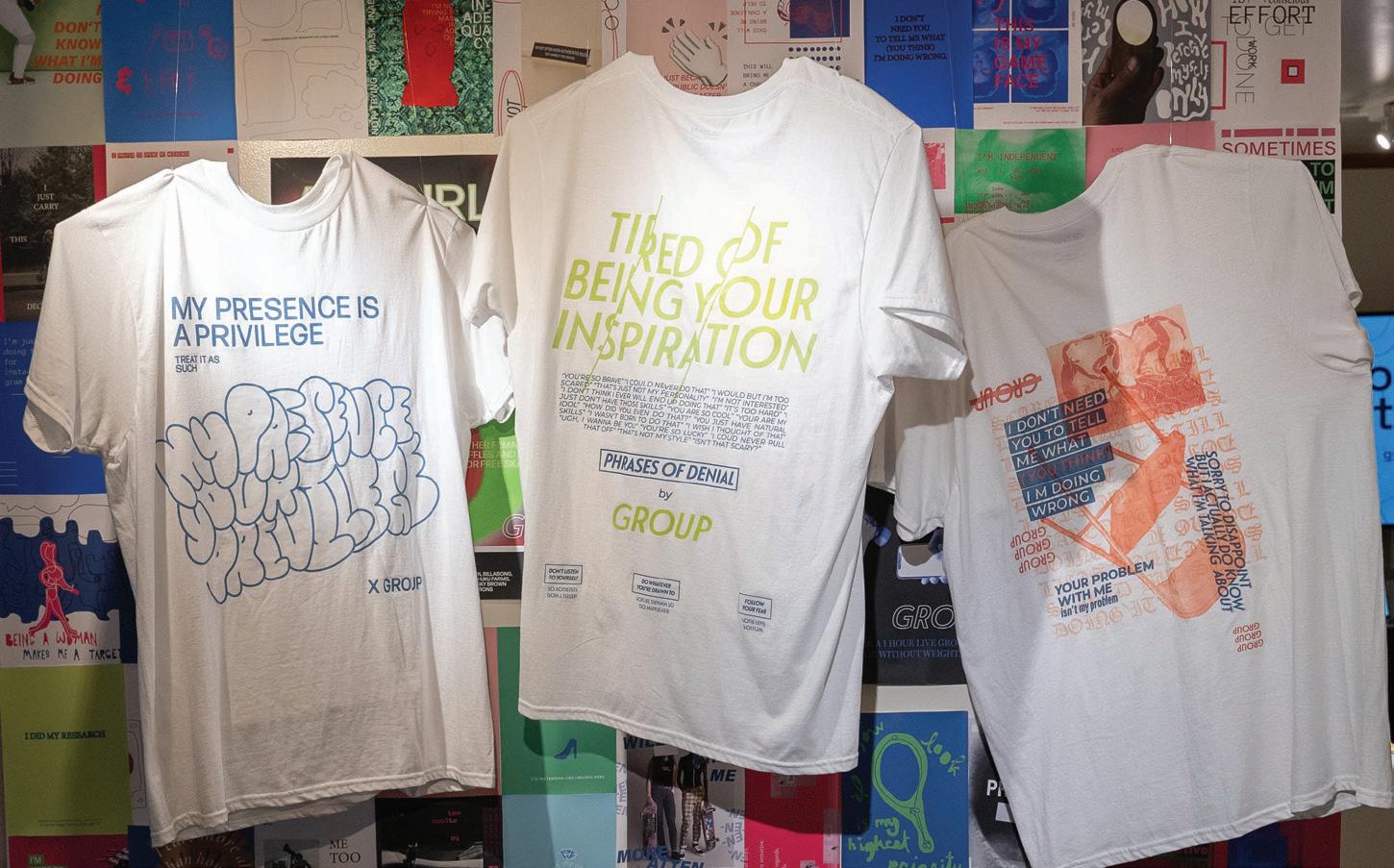
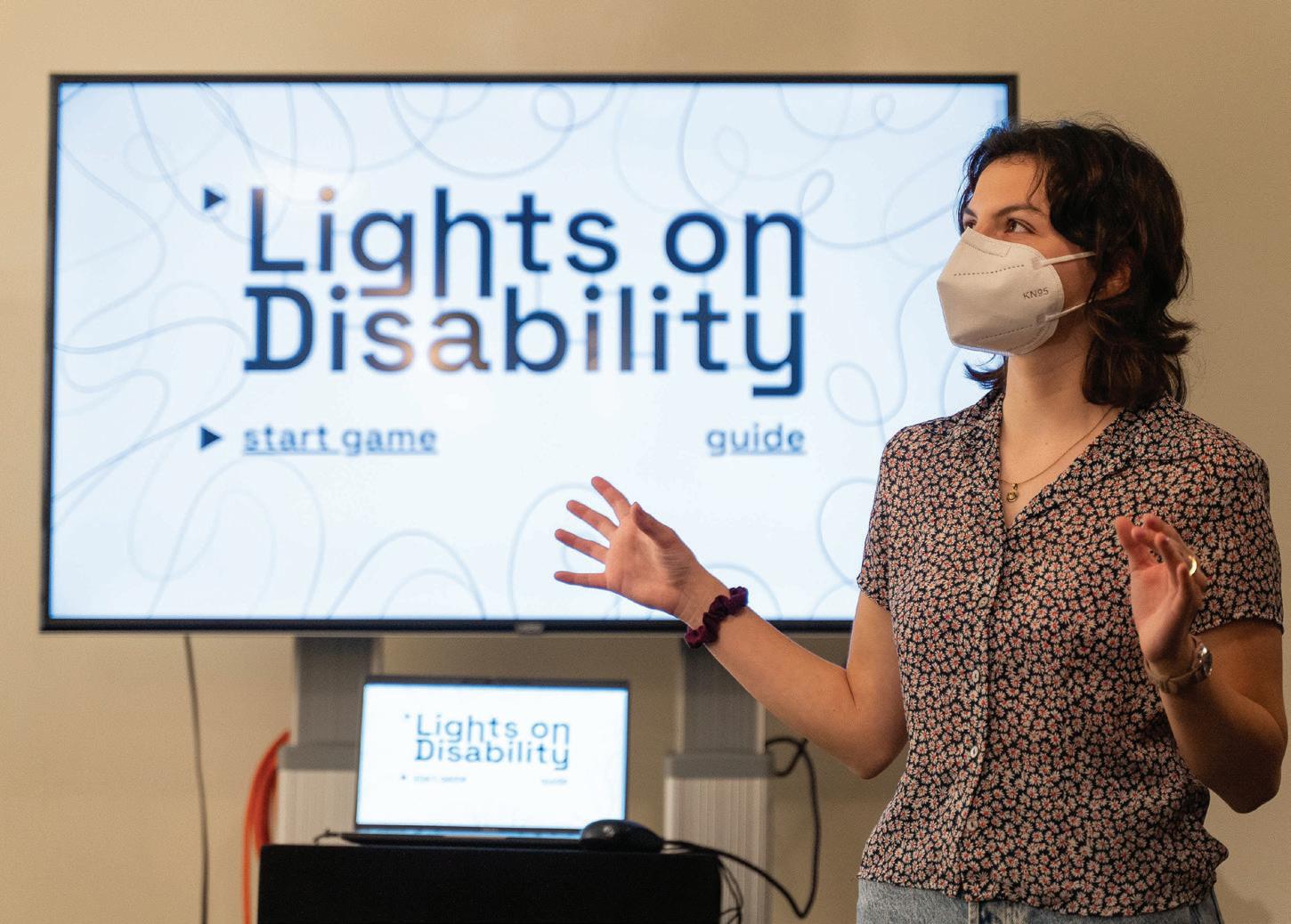
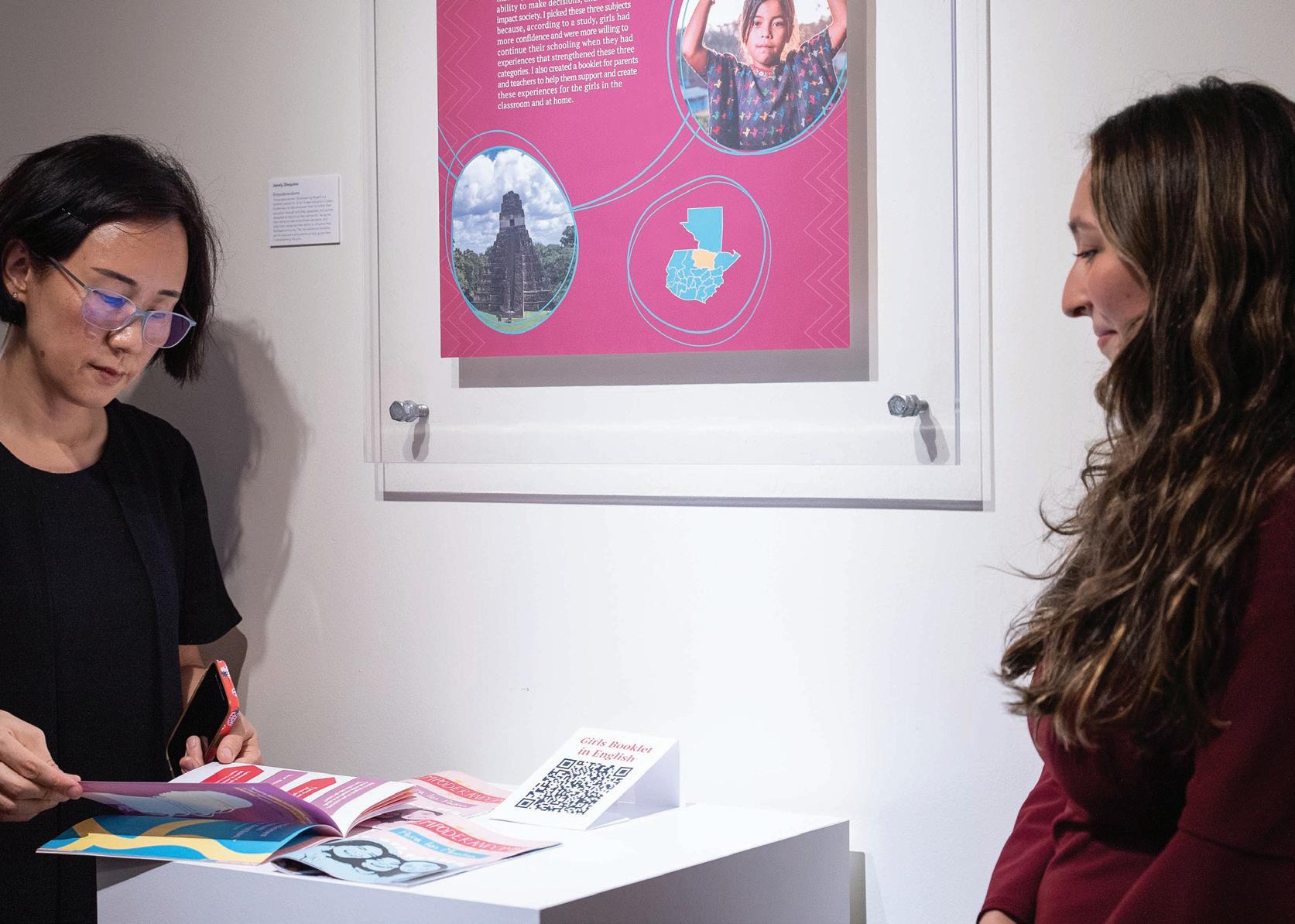

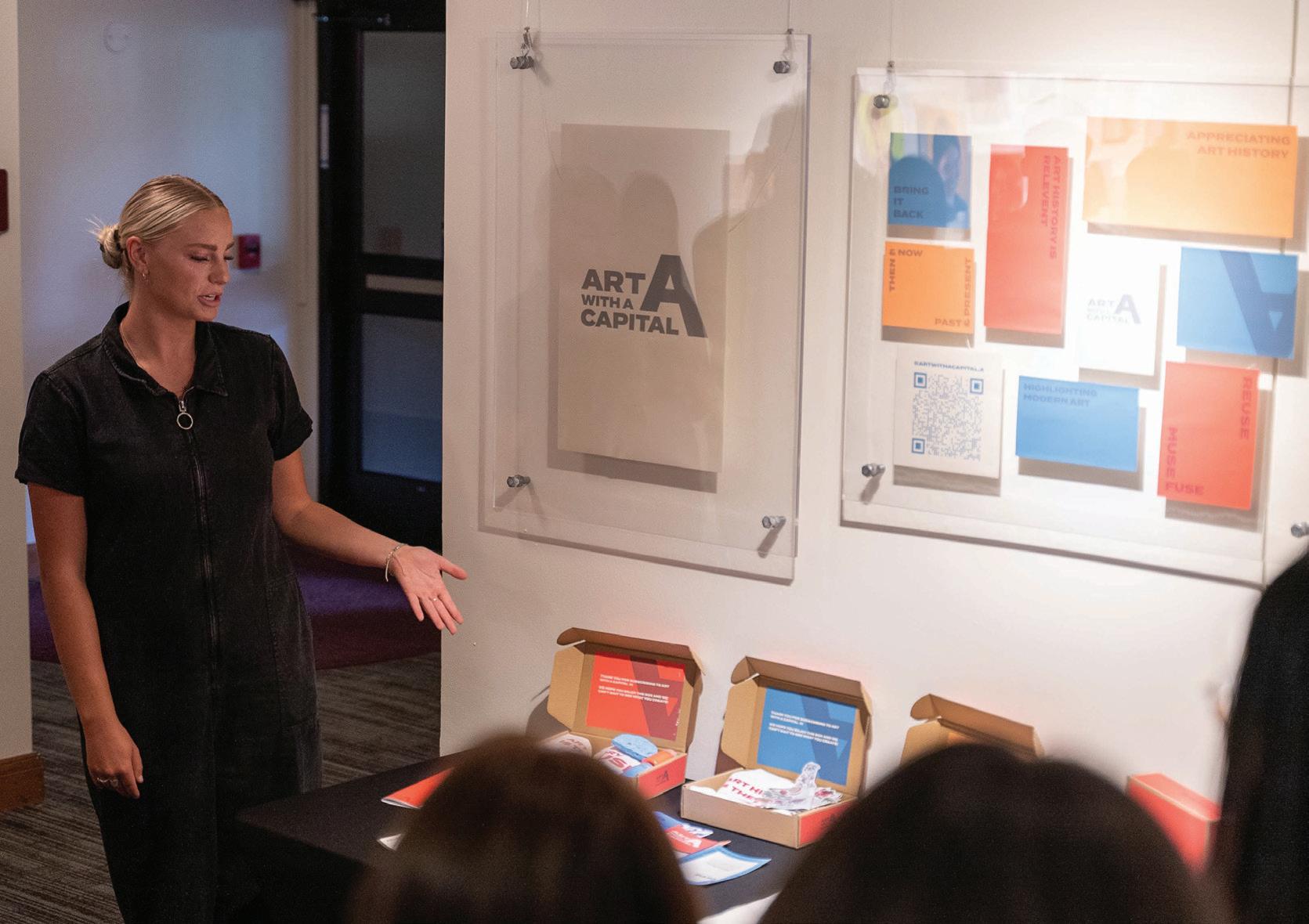
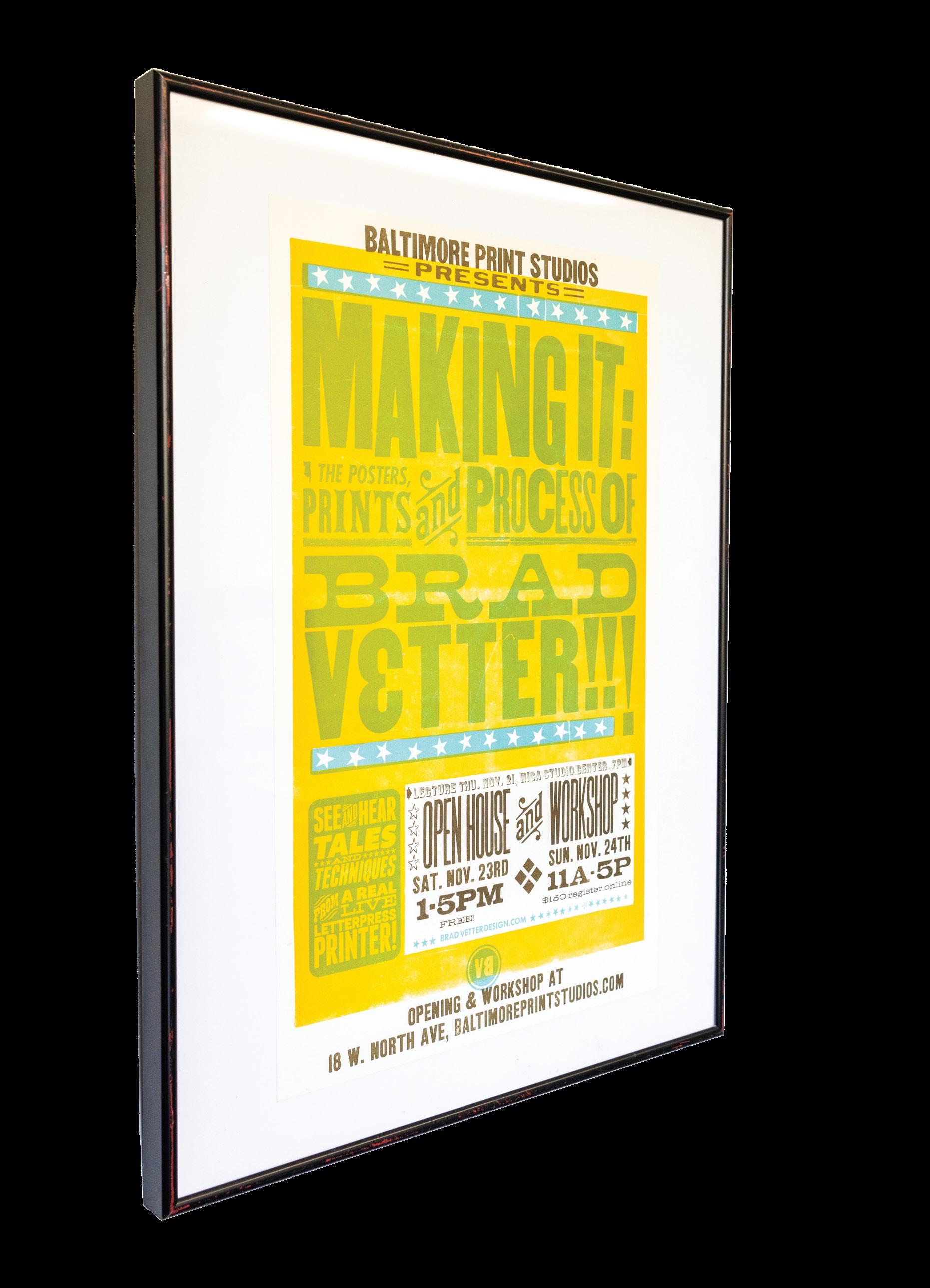
Jacob Jackson said he knew he wanted to make 3D art, specifically pottery and sculpture, since he was a child. Growing up in Laie, Jackson, an associate professor in the Faculty of Arts & Letters, said, “The art program has been important to me my whole life.” He said he has worked with clay since the age of 4 and would sneak into his neighbor’s backyard to watch him make pottery.
Jackson graduated from BYU–Hawaii and got his master’s of fine arts at University of Hawaii at Manoa. After this, he said he started working and selling his artwork in galleries around Honolulu. Starting in 2005, he also taught part-time art classes at BYUH until he got the full-time position in 2019. Jackson said his love of water and the way it interacts with the land has inspired him to represent the ocean and mountains of Hawaii in his artwork.
When working on pottery, Jackson said, “I think of the outer surface of the vessel as being like a canvas to paint on.” He described the process as treating the outer surface of the ceramic vessel as an abstract painting before using colors and forms borrowed from the land and the ocean.

Reflecting on his career, Jackson said, “It’s normal for people in the arts to struggle when they first finish with the school, to try to find a way to sell their work. I wish I put more time and effort into selling my work.”
 Jacob Jackson’s piece titled “Ocean Rhythm.”
Photo provided by Jacob Jackson.
Jacob Jackson’s piece titled “Ocean Rhythm.”
Photo provided by Jacob Jackson.
Robert McConnell, an associate professor in the Faculty of Arts & Letters, said he explored different paths before settling into one category. “I took art in high school and in college. It was industrial design at first. Then I tried an engineering class, and I didn’t like it, so I went back to artmostly art education because I like teaching.” He continued, “There is nothing wrong with taking time to figure out what you really want to do.”
McConnell graduated with a master’s of fine arts from the Maryland Institute College of Art in Baltimore with an emphasis in graphic design. There he said he started to make his first couple of projects. His work is mostly focused on screen printing, typography and lettering. He explained typography has letters that are already made or are created for other people to use. In creating typography, McConnell said, “You have to make sure all the little pieces work so that it’s useful for other designers.”
He said he was drawn to typography because of the way “it communicates a message or a certain tone, something beyond just the words or the letters that they say.” He said the look, shape and size of typography serve as forms of visual communication.
In helping art students with their choices, McConnell said, “We expose them to different projects and teach them different skills [to help them] find something they enjoy and know [so] when they graduate, [they can] make a living from doing that.” •
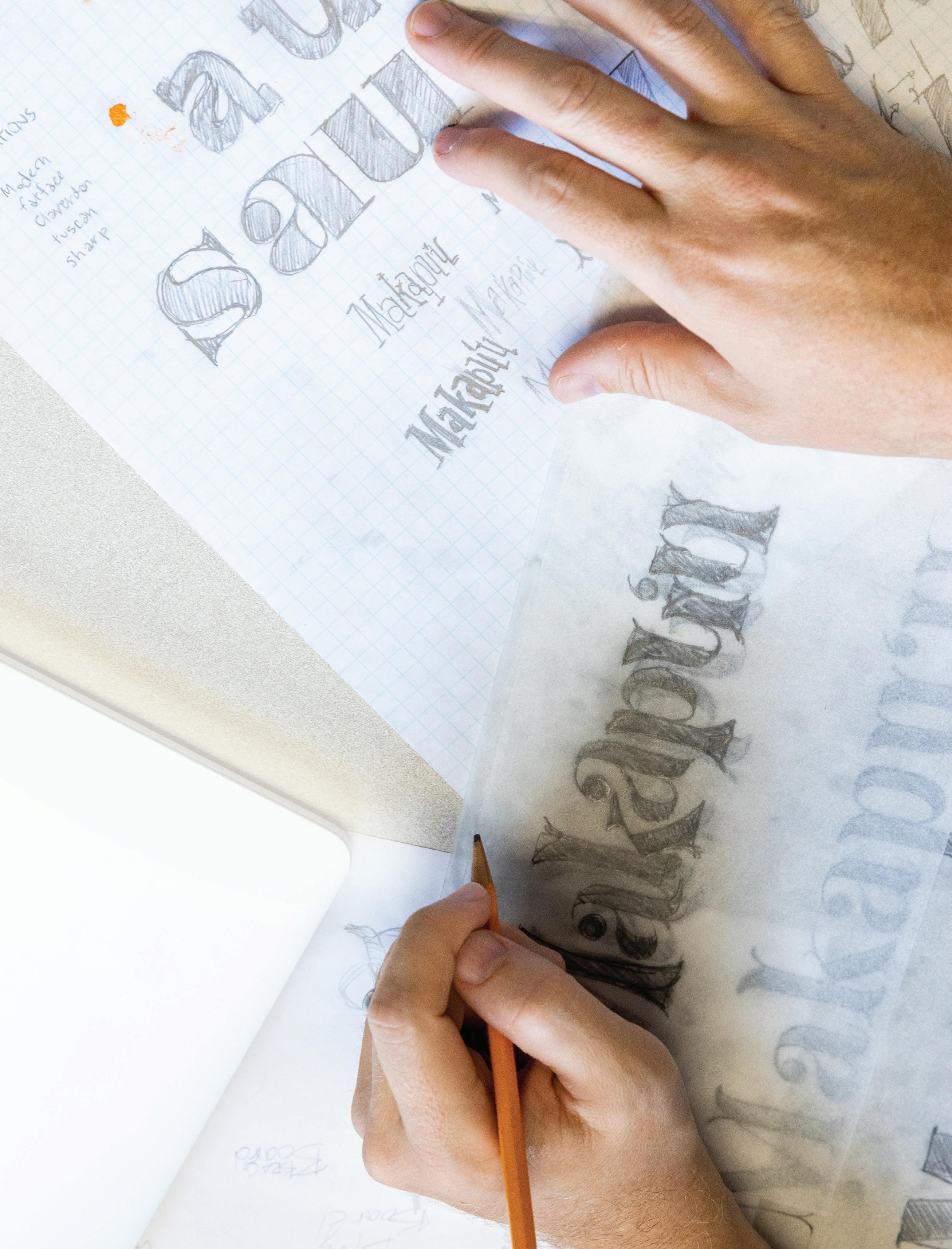 Typography relays a certain tone beyond words says Robert McConnell. Photo by Yui Leung.
Typography relays a certain tone beyond words says Robert McConnell. Photo by Yui Leung.
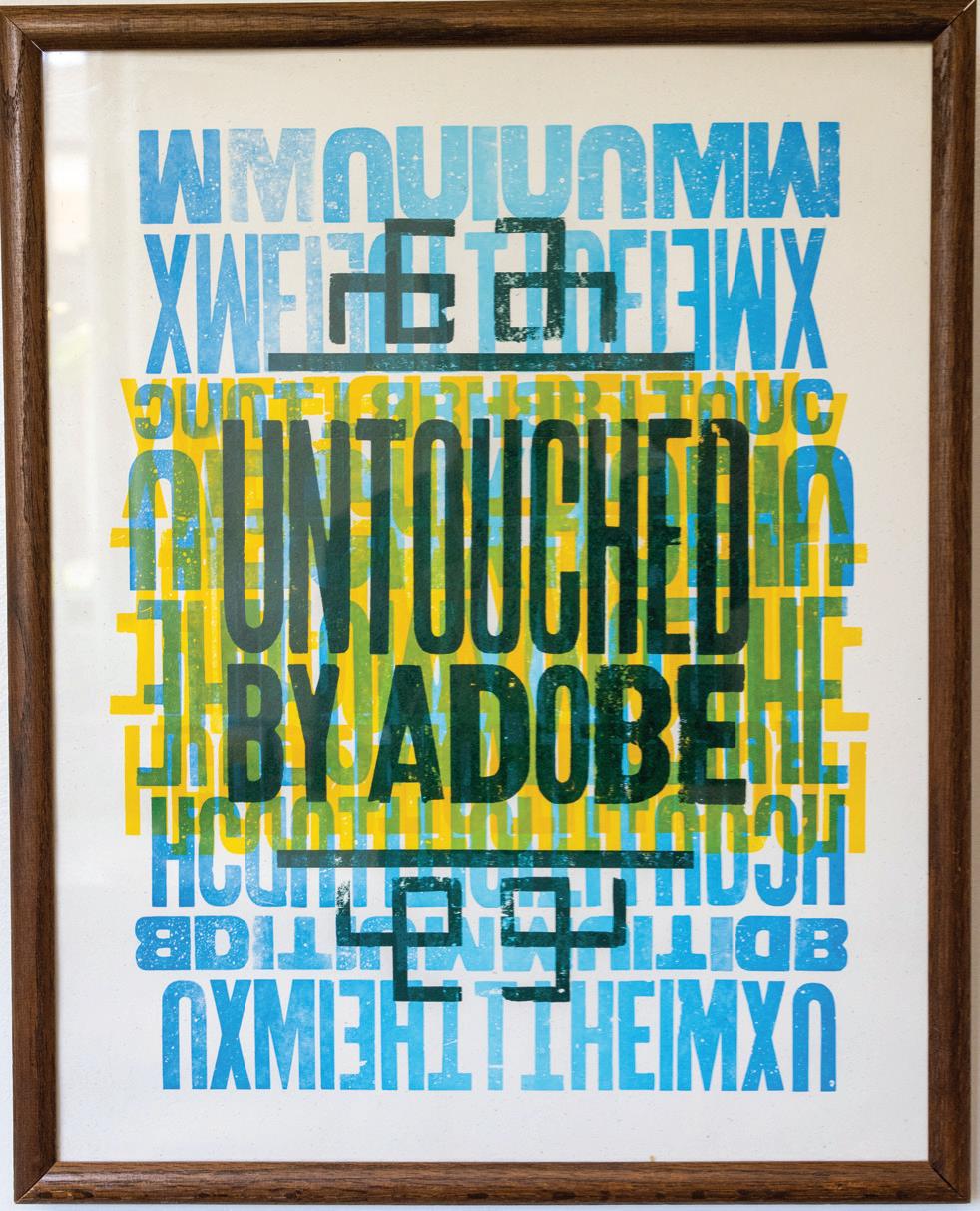

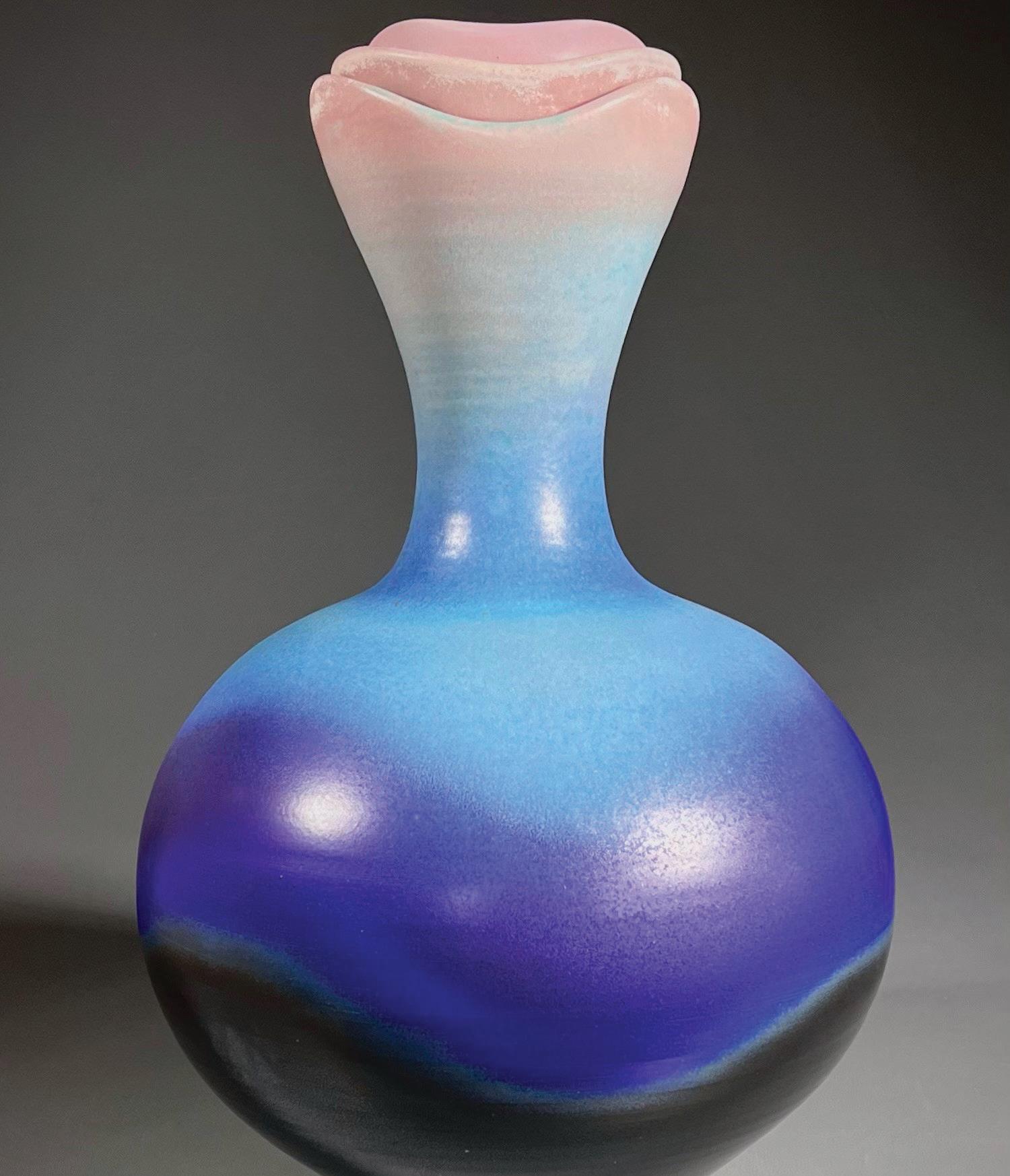
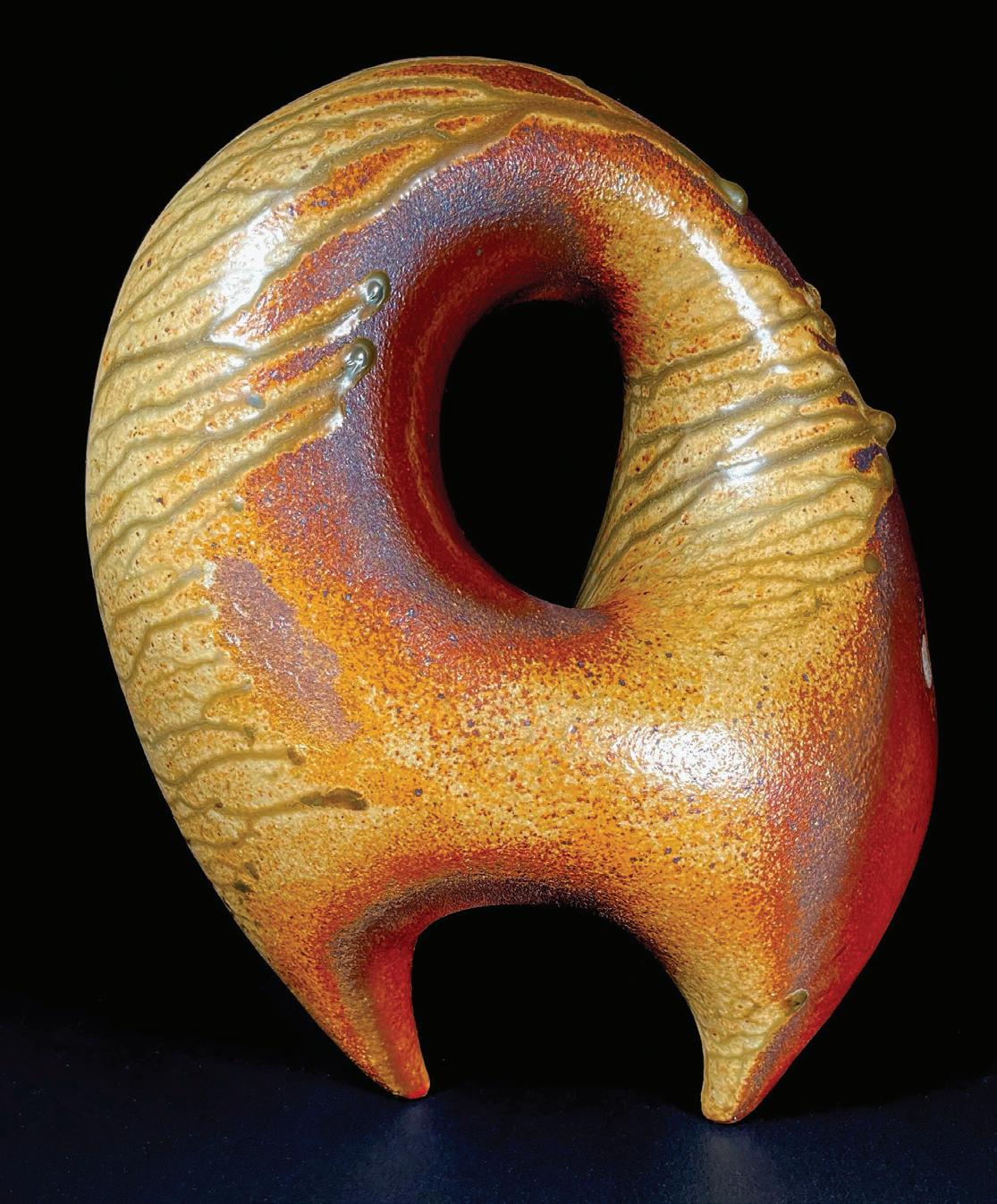
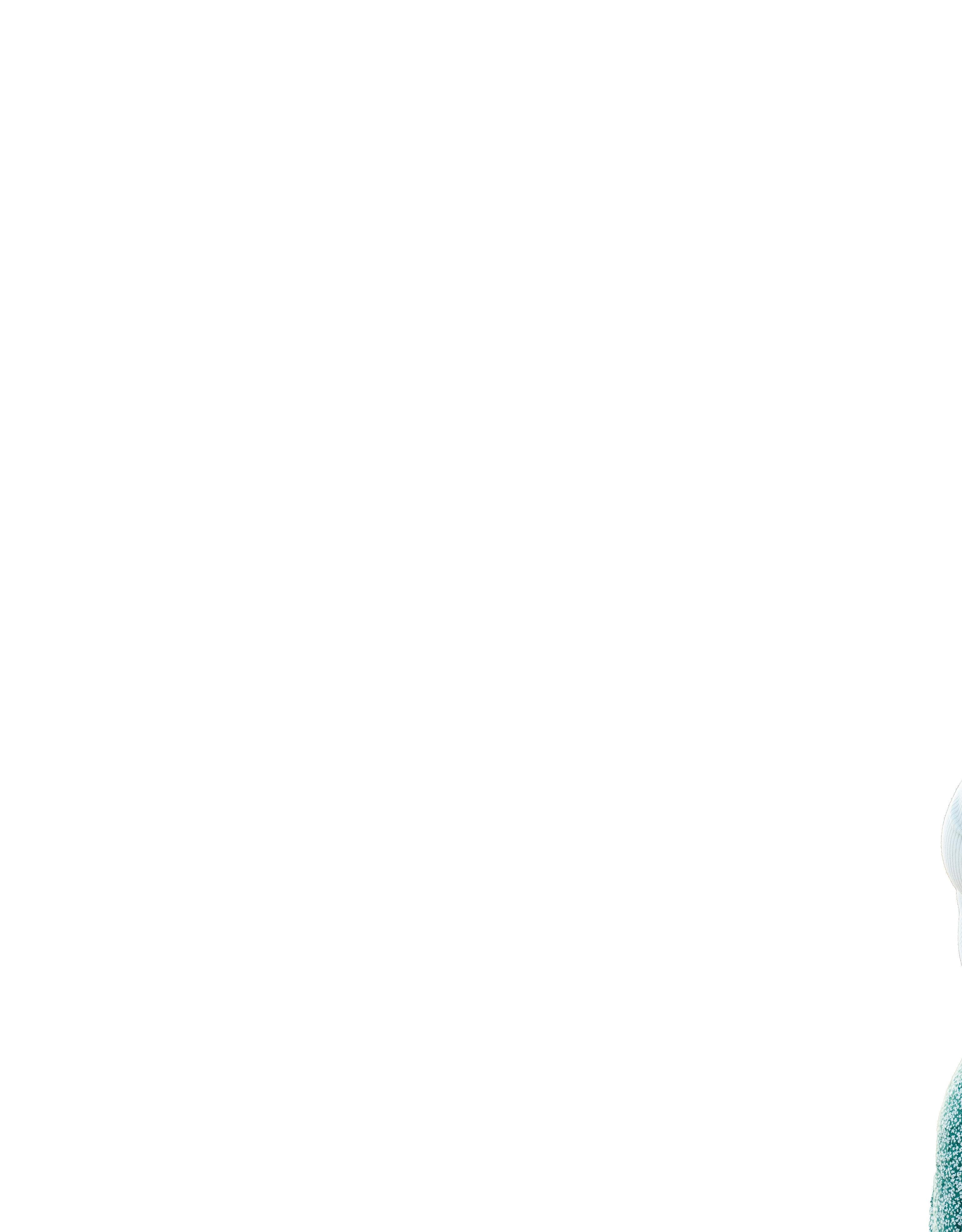
word has also been applied to the finished works. She added, “I love looking at the pink clouds when I go to watch [the] sunrise in the morning. I specifically wanted to paint the clouds because when the sun first hits, it’s so beautiful. That was also when I decided to take risks, have fun and not be so worried about if I was making it look right. It was more about the process than about the finished result.”
Jones said she feels grounded and at peace by creating art from scratch. For her, it is a way of escape from social media and realization of how much time has passed, making her feel more connected to herself.
“Growing up, I didn’t have lot of ways to healthily express my anger. After taking the creative arts therapy class with Dr. [Eric] Orr, I realized I can use art as an outlet to release catharsis, and it is very therapeutic. It is so relieving to let out all my bottled-up emotions
and anger. [I can] create something beautiful or not even beautiful, but just aesthetic to look at,” expressed Jones.
Tabitha Hanson, a best friend of Jones and a senior from Florida double majoring in psychology and intercultural peace building, said Jones embodies kindness and love in everything she does. Hanson said, “She is always willing to lend a helping hand or offer words of encouragement. Her artistic talents are nothing short of astounding, bringing life to her creations with a vibrant palette and meticulous attention to detail. Her art is not only visually captivating but also possesses a depth that resonates with all of us. [It leaves] a lasting impact on anyone fortunate enough to experience it. She continues to inspire me every day by expressing herself through her beautiful art.”
Sierra Dawn, an alumna of BYUH said, “[Jones’] art highlights the beauty and diversity of the natural world as well as the wide range of people that inhabit it. Her work inspires me because she is not afraid to depict the realities of being a woman in a patriarchal society.”
Painting is her primary medium of choice, which allowed her to create vibrant and evocative works of art that speak directly to the viewer’s soul, Jones said. She explained she liked to work with oil painting, charcoal and pastels, which are chalks.
Jones was a part of the Women’s History Month Art Exhibition that honored women from the past, present and future. She also won second place for her art piece in the artwork section for the BYU–Hawaii Kula
Manu Journal. Her brush danced across the canvas, it released her innermost emotions and experiences onto the surface, she shared.
Through the vivid interplay of colors and textures, Jones said she communicated her joys, her sorrows, her triumphs and her vulnerabilities. “My favorite thing is that it’s thick, and it brings a lot of texture. I get to use a palette knife and carve stuff in really thick paper. It feels cool.” Each brushstroke represented a step towards healing, an act of self-discovery and a celebration of the human spirit, expressed Jones.
“My older brother, Daniel, was an artist in high school. I remember always watching him sit on our kitchen counter, and I’d be watching him paint. My grandmother paints as well. So as soon as I got older, I actually started doing art. My dad used to paint too, and he would take me to my grandmother’s house. We would go and do drawing together. It was fun because I got to bond with my dad,” said Jones.
Art has become a cathartic process said Jones. She said it was a way to confront her inner demons, embrace her vulnerabilities and channel her energy towards personal growth. Throughout the years and her artistic endeavors, she said she found liberation, a release from the shackles of everyday life, and an avenue to express her true self.
The creative process became a form of meditation and is a means to navigate the labyrinth of her thoughts and emotions, she said. She explained, ultimately, it is to find a sense of harmony and wholeness.
“I want to learn as much as I can. I don’t think I’d actually want to make a career of it, because I feel as soon as you try to start profiting off of something you love, it takes away that desire. I’ve done commissions in the past and it suddenly turned into work ,and it’s no longer something I love. So if anything, I would still want to be surrounded by art,” said Jones.
 Arylue Jones painting by the ocean.
Photo by Yui Leung. Graphics by Yichi Lu.
Arylue Jones painting by the ocean.
Photo by Yui Leung. Graphics by Yichi Lu.


For a long time, the plan has been to go to graduate school said Jones. “I want to get my master’s at Florence Academy of Art, Italy. I eventually want to live in Greece and have my own little studio and just paint,” Jones said.
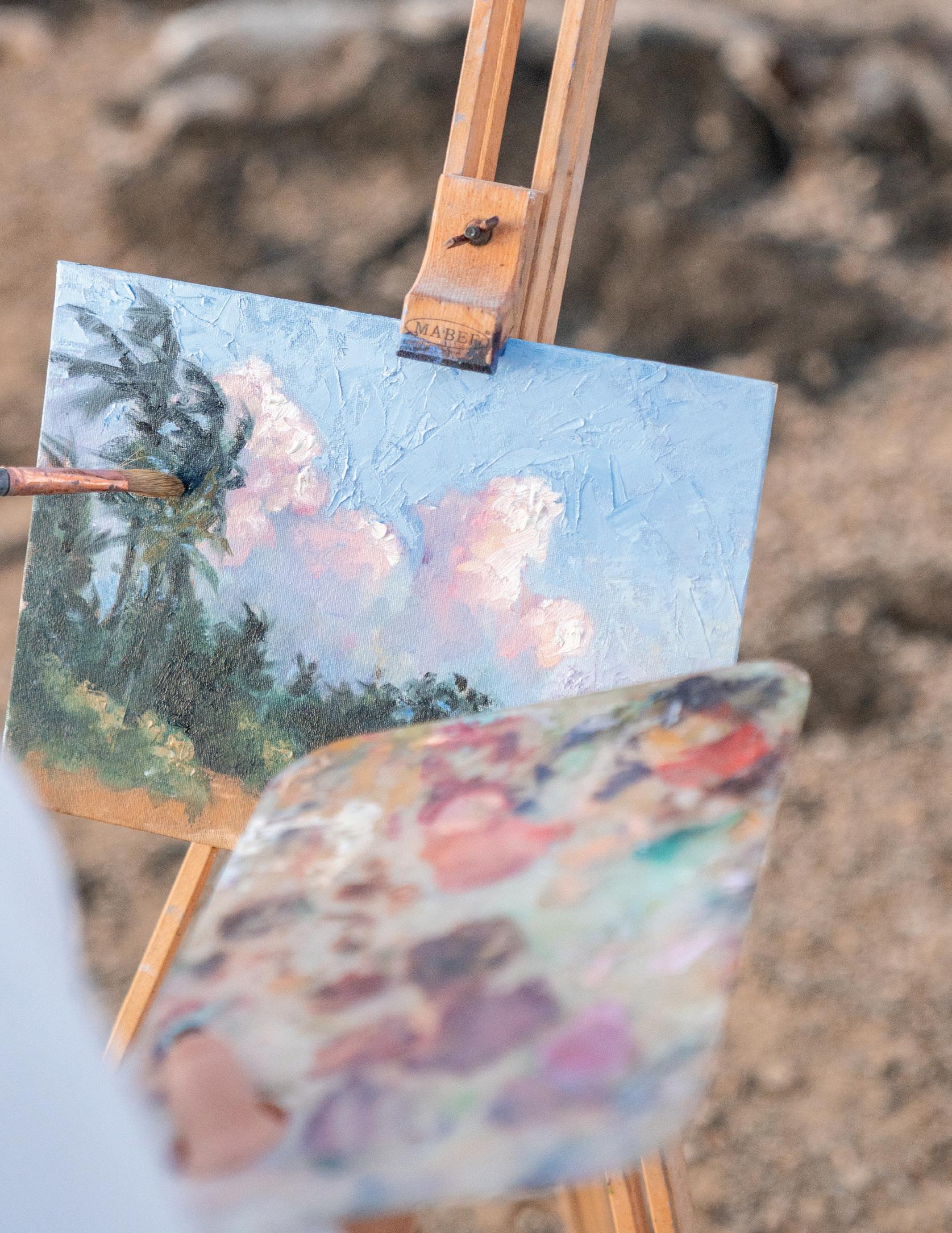
“I think anybody can be an artist. Art speaks for you. It’s just about how much work you put in. Some people may have more talent than others, but that doesn’t mean talent can’t be developed,” emphasized Jones. She said she is a lot more experimental, impulsive and carefree. Jones added she is an artist who take risks and does something even if it turns out badly. She said she’d rather take risks instead of being afraid. “Life is a journey, and I’m constantly exposing myself to new things and not holding myself back [out] of fear.
“I am willing to change. I always want to be growing. I don’t ever want to be stagnant. I think it’s really important for us to grow and change and to constantly be trying new things,” said Jones. •

 Graphics by Marlee Palmer.
Graphics by Marlee Palmer.



Three BYU–Hawaii students who said they loved art and were seeking to learn new skills took the first lithography class offered at BYUH. Although they said it challenged them with where they were artistically, the students explained it helped them use their creativity to succeed, drawing inspiration from things they loved to make their projects.
According to the Metropolitan Museum of Art in New York City, lithography is, “a printmaking process in which a design is drawn onto a flat stone (or prepared metal plate, usually zinc or aluminum) and affixed by means of a chemical reaction.”
Iris Player, a junior from California majoring in visual arts, shared the story behind the prints she made for her lithography final project. Feeling overwhelmed and overtaken by the inspiration of nature, Player said, “The old will always overcome the new.” For her final project, she said she wanted to create pieces with giant robots in really large nature scenes. She added how she had inspiration from an artist she admired who drew robots with interesting shapes and designs.
Player created a set of two pieces that accompany each other. She said she started with one titled “Going Somewhere.” “I wanted to take inspiration from nature in these settings, and I learned that apparently flamingos live near volcanoes , which I thought was funny. They are called ‘Volcano Flamingos.’” The head
of the robot depicted in the lithograph has the shape of a flamingo head. Player said she called it “Going Somewhere” because the flamingo robot is looking to get somewhere and get its hand, which is broken, fixed. The second print in the set contrasts heavily with the first, entitled “Going Nowhere.” The robot in this piece appears dead-eyed and a little bit hopeless, placed in the middle of the ocean. Player said she based its design on a deep-sea diver. Player’s prints are pictured on pages 30 and 31.
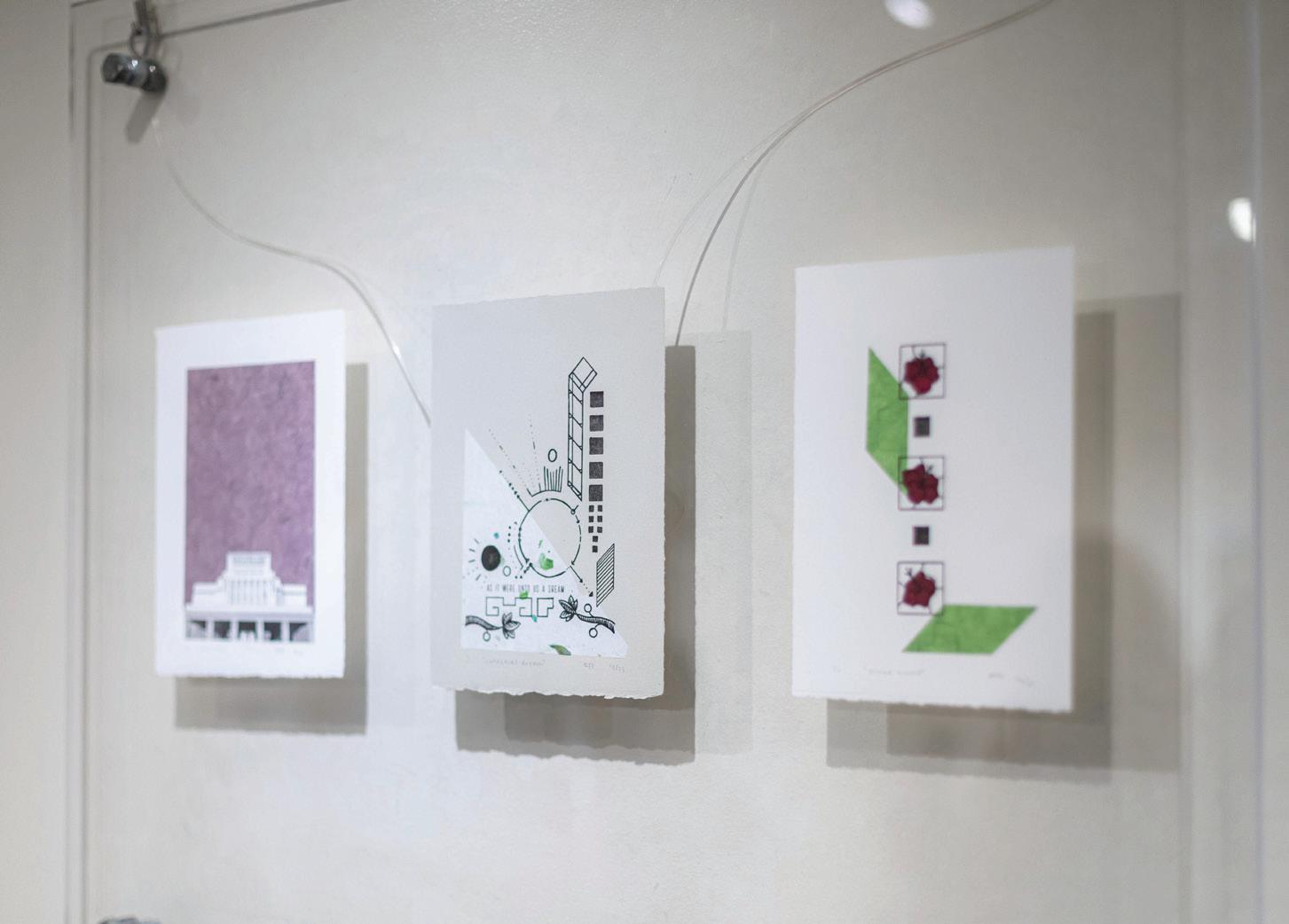
Elinor Cash, a junior from Illinois majoring in graphic design, said she created a set of prints inspired by a Latin phrase “Adastra Peraspa” which translates to, “to the stars through difficulty.” Cash said she really likes fantasy and was inspired by locations and fantastical elements from “Dungeons and Dragons.” “I’m a huge nerd,” Cash explained. Through this inspiration and her creativity, she created fantasy ships and said she thought it would be interesting to have one ship represent ocean and space and the other represent earth. The first print, “Adastra,” includes whales, water and the sky. The other print, titled “Peraspa,” features mushrooms and mountains. Cash’s prints are pictured on the right.
Ally Pack, a senior double-majoring in graphic design and marketing from Idaho, said she often feels imposter syndrome when it comes to studio-based art classes due to contrast between the hands-on nature of the projects and her usual graphic design projects. Pack said wanted to try lithography to overcome some of those fears she had based in perfectionism. She said lithography in general has taught her patience, peace and fulfillment.
When choosing what to do for her final lithography project, Pack said she kept coming back to her love of the gospel and the Savior and how living in Laie filled gaps in her soul through the Holy Spirit. Pack said, “Before coming back to school after my mission, I struggled with change and leaving the mainland, and I decided to pray to find ways to make Laie more of my home. My Heavenly Father led me to seek His light and love from within His holy house.”

For this reason, Pack said she wanted to draw attention to the history behind the Laie Hawaii Temple and the beauty found in its design and architectural elements. She said she felt as if researching the community and the history of its people would contribute to the significance of her prints. She explained, Laie is a sacred place of fellowship and belonging for many nations and has also become her place of peace. Of the sacredness of the Laie Hawaii Temple, architect Harold Burton said, “I was 29 years old when I designed that. With all the experience I’ve had, I couldn’t add one thing to that building. Not one thing. I was inspired, pure inspiration. That was way over my head.”
Pack said, “Spending quite a bit of time researching led me to a design process that involved collaging multiple precious indigenous flowers and other motifs prevalent throughout the building. I chose to draw attention to the structural elements by adding chine collé as the negative space to my first print and tie this unique temple back to the loving people of Laie.” Chine collé, according to the 15th Street Gallery website is “a special printmaking technique in which paper of a different color or texture is adhered to the overall piece.” The directional elements are meant to remind us of our journey to our real home and the covenants we make in the temple to help us get there, Pack said. The final print, titled “Divine Motif,” is a reminder to endure to the end and enjoy the experience, she said, particularly in regards to this bountiful planet and the nature that surrounds us. According to Pack, this project was a reaffirmation to her, as the artist, of the divine artistic nature of our Heavenly Father and His desire to inspire His children.
Pack said she would highly recommend any artist to take the class to experience a new form of art and improve their composition and drawing skills. She added, “It’s such a fun way to do hands-on art as a graphic designer and paves the way for more in-depth exploration of publication.” Pack’s prints are pictured on the left.
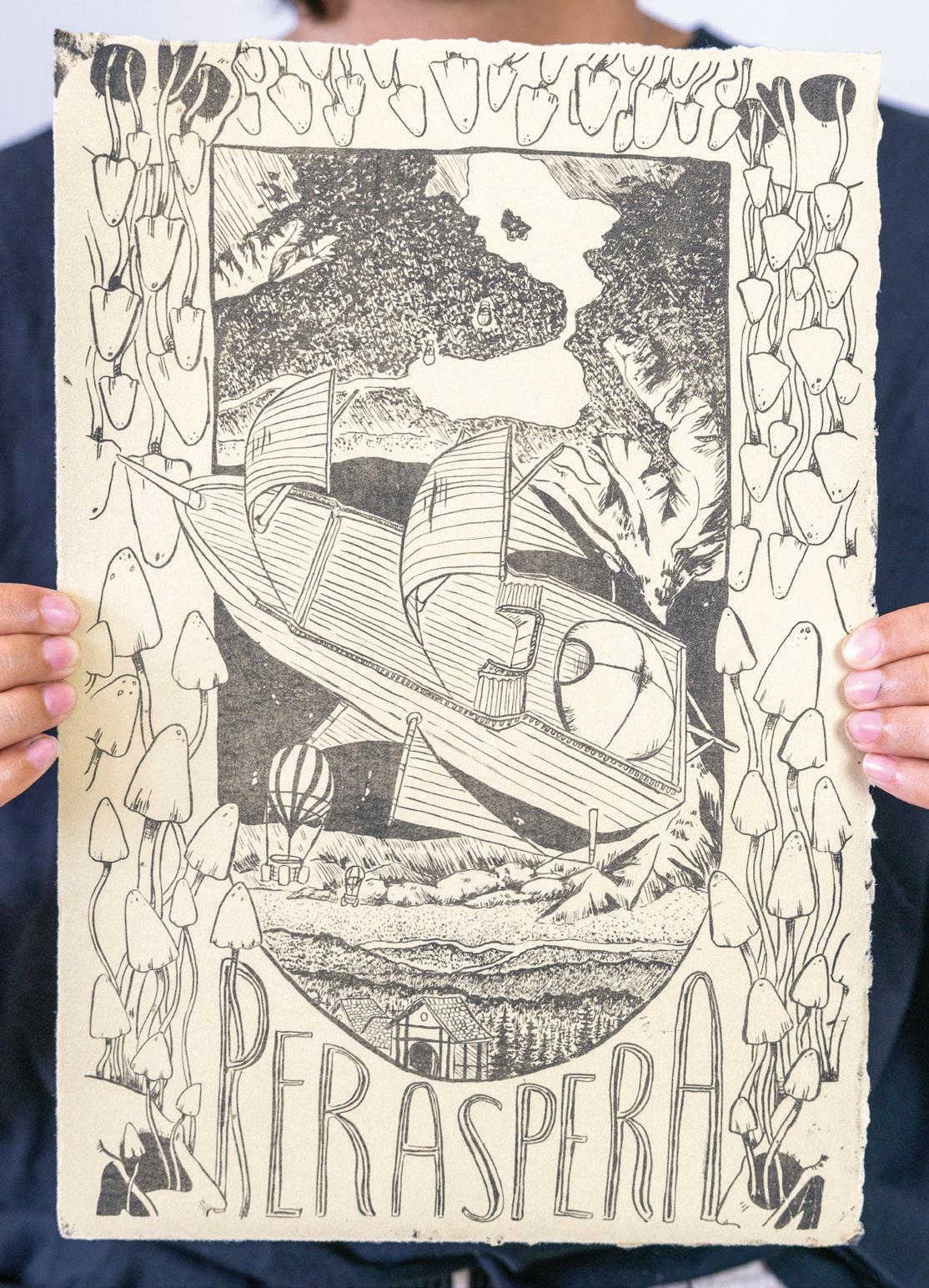
Player said her friend had asked her if the two of them should take the lithography class, even though they were a little bit skeptical because it is a new class. Player said she assured him he should and that the class was really laid back. “There’s only 10 people in the class. We could do basically whatever we wanted. It’s more of learning techniques and that’s the only hard part.” She said Associate Professor Jihae Kwon, the lithography instructor from the Faculty of Arts & Letters, was great, and Player always looked forward to going to class. Player said the three-hour class allowed her to see progress during each class period. Although the class was at 8 a.m., she said she enjoyed getting up in the morning, getting something done and feeling productive.
Cash said she also highly recommends taking the lithography class. “It’s a very different experience. I had never even heard of lithography before taking it and I kind of took it on a whim, but I want to take it again if possible.” Cash said it was a big challenge, but a unique one. She specifically recommends it for people who love art and want to try something new, explaining it has opened her eyes to the possibilities of what she can do in the art industry. •

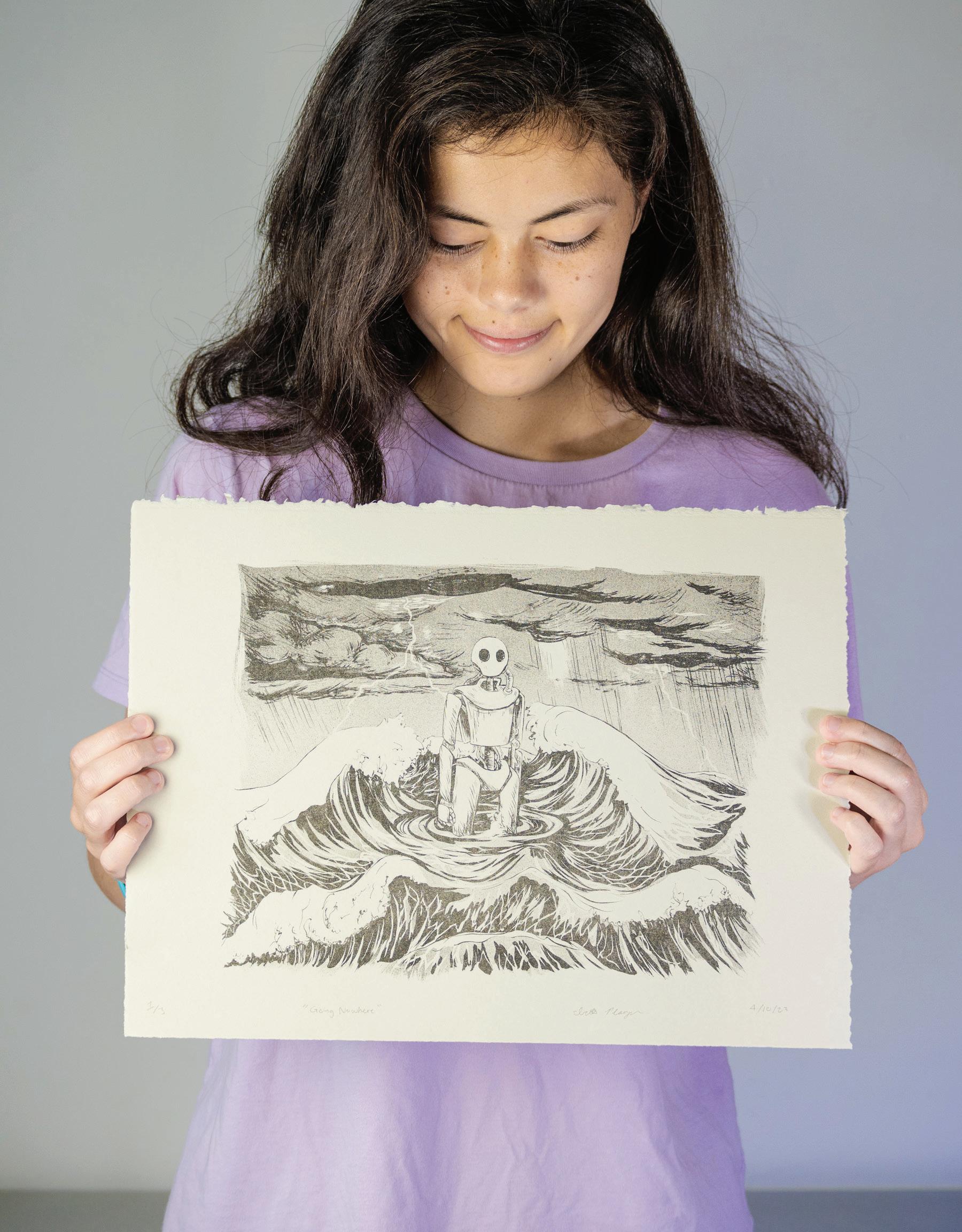

Ya Yun Lin, the first-place winner of the Kula Manu’s art division, said her confidence to submit her art to the journal’s competition didn’t come as instantly as it seemed. After studying as a visual art student at BYU–Hawaii for nearly four years, she said she gradually felt more secure displaying some of her art to the public in her senior year.
Lin grew up with her family in Taiwan and said she has loved drawing since she was 12 years old. She said she wanted to draw on the wall and paper at any time, and as soon as she recognized her passion for art, she said knew she needed to focus on painting
in her education. Instead of going to a regular high school, she said she decided to attend a professional art school in Taiwan and take her passion to another level.
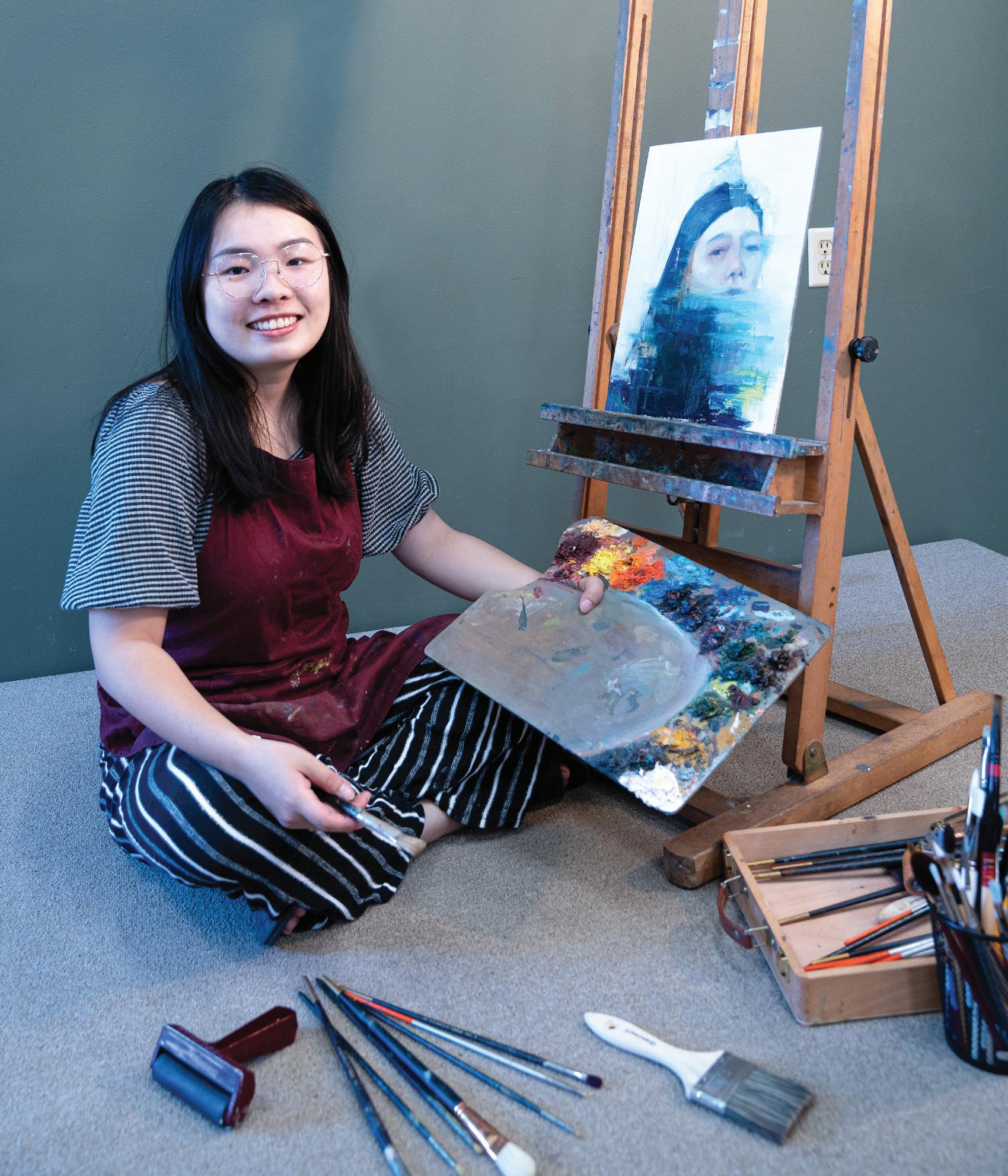
Lin said the decision she made during her early years raised several questions among those she met and even her closest relatives such as, “What do you want to do in your life with your art? Is there any future career for you?”
She said many people tried to convince her to change her direction because they thought her future career would not be stable.
During these challenging stages of her life, she said the younger version of her could easily be overwhelmed by the negative opinions from people. Lin recalled she would easily lose her desire to paint when she compared her artwork to her peers. She said she felt inadequate and didn’t measure up with the other 50 students in her class.


“I felt I had lost my interest back then. I lost my confidence and I didn’t know why I was there,” said Lin about that time in her life.
Despite the discouragement she received from others, Lin said she moved forward and continued to learn more about the art of painting at BYUH. Because of her past experiences, she said she sometimes felt insecure about how people interpreted her art.
Although the feeling of insecurity still comes and goes, Lin explained she strived to change her point of view and be more selective in her reactions to people’s responses. “Now I listen to my professors the most,” she shared. “I need to humble myself because sometimes I won’t know what problems I have until someone tells me. That’s why I need to follow what my professor tells me to improve.”
As she became more mature in her experiences, Lin said her attitude toward competition changed, and as she improved her skills, the feelings of insecurity started to dissolve. She said she no longer sees competition as a damaging experience, but instead sees it as an exciting challenge to accept. She said through the learning experiences she had at BYUH, she was able to see everyone has the same opportunity to grow.
In her last year of college, Lin said she opened up to participating in more competitions and exhibitions. The first competition she participated in was BYUH’s on-campus literary journal, the Kula Manu, and she won first place.
She submitted one of her masterpiece self-portraits that was inspired by Zin Lim, an artist and instructor from Korea who pursued his art education in the United States. She named the painting “Who am I?,” which she said answers an overarching question she has had in her life. Lin said the painting depicts herself at a point in her life when she felt like she was stuck somewhere and not sure where to go.
Lin said she learned that answers will come as people move forward, just like how she made progress in painting. She said she found joy when she received a reward for her first oil painting from the Kula Manu. She would not have experienced this feeling if she had given up on her passion for painting, Lin said.
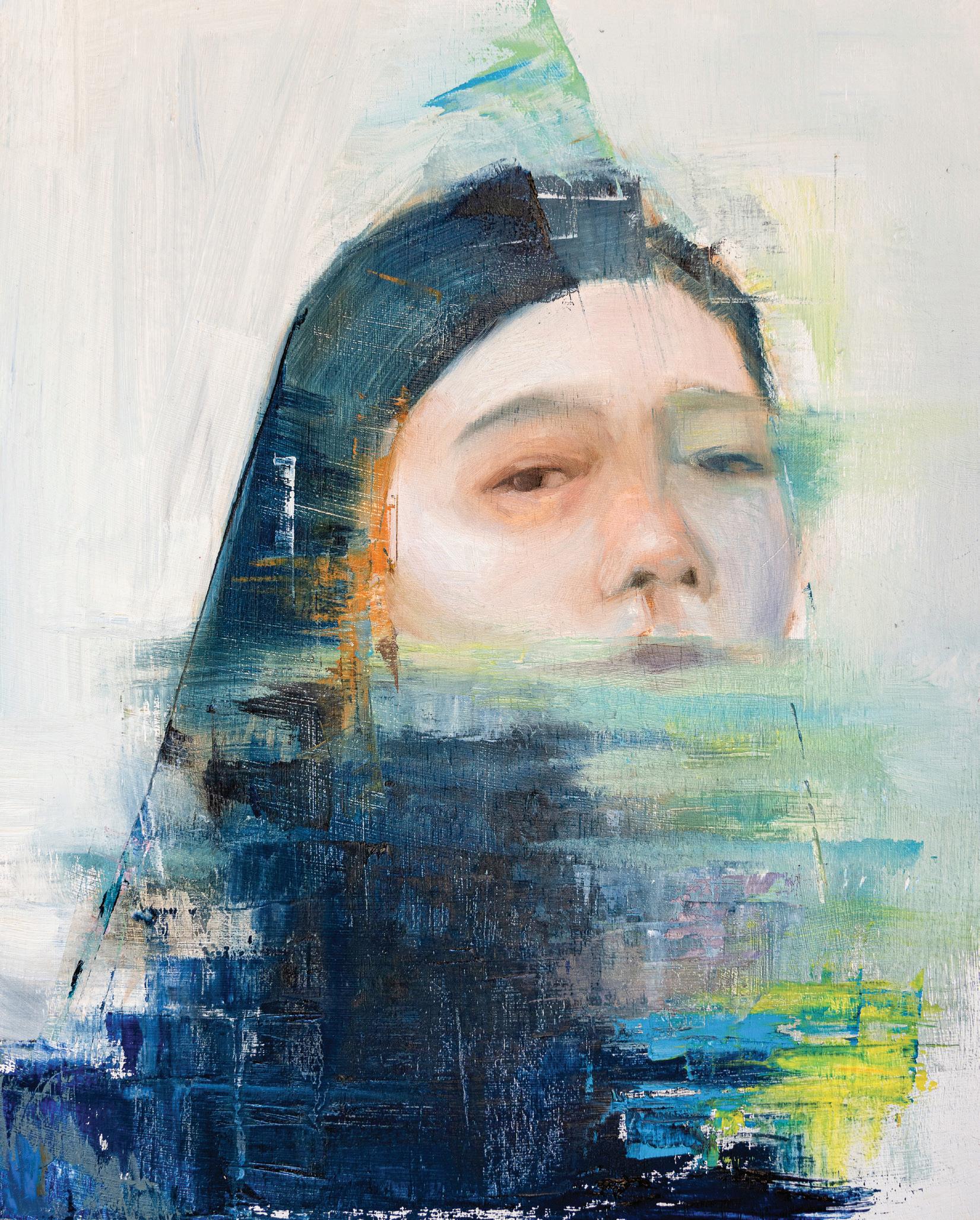
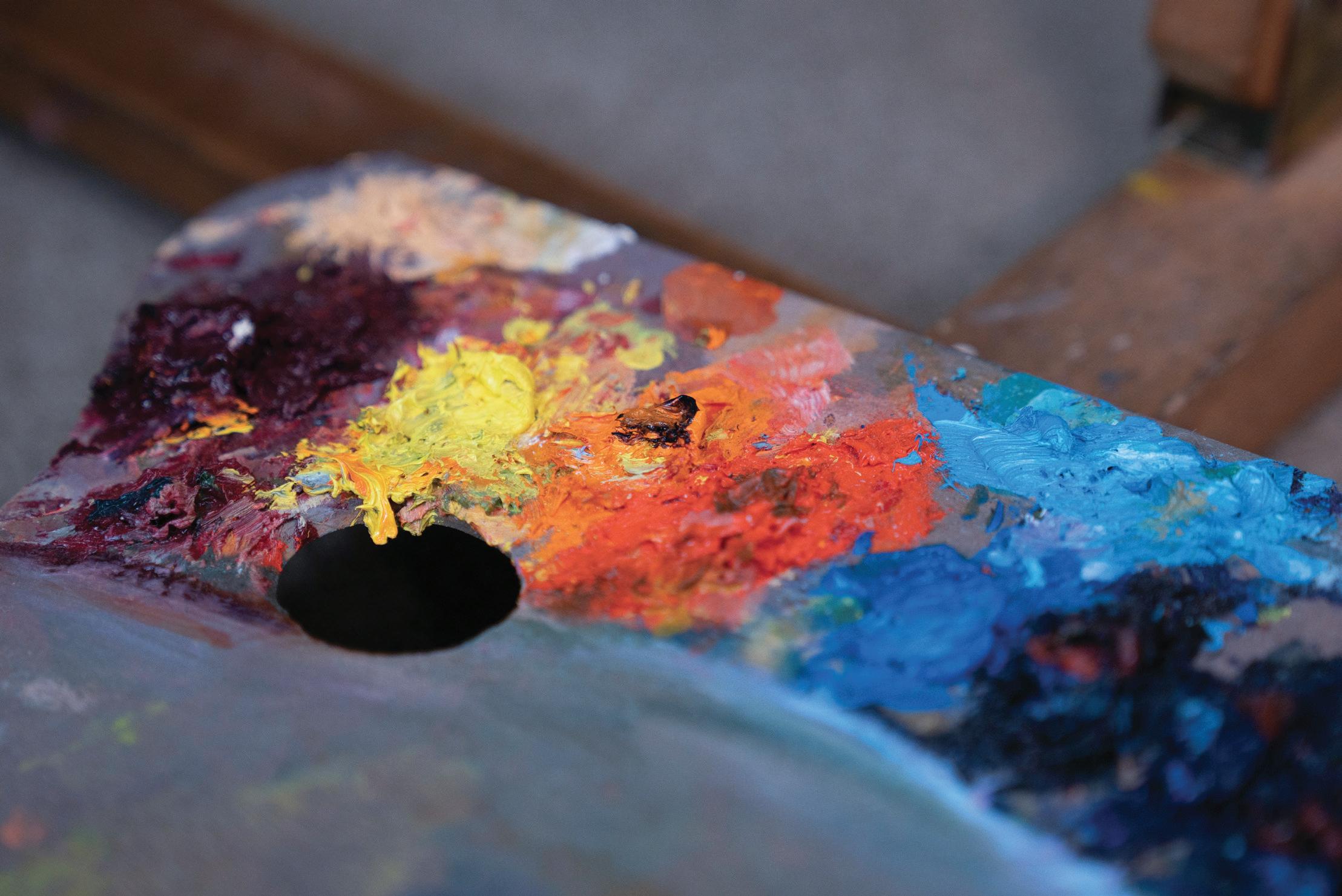
Her confidence continued to grow after being placed in this competition and as she makes more and more paintings, she said. During the final project, for the Bachelor’s of Fine Art Show, she was able to make 50 other small portraits of her friends. She said it enabled her to be more familiar with the pattern of painting people’s portraits. Lin said, “I felt touched by the people’s reactions and excitement when they saw their self-portraits I painted. They said they felt they matter.” As an introverted person, she said she finally found a more intimate connection with people by painting their portraits. Lin said she felt accomplished when people could feel the joy that she portrayed in her painting.
Zhiyun Zhang, a friend of Lin majoring in visual arts from Taiwan, said doing oil painting is really time consuming because it takes a long time to dry and layer. Zhang said regarding Lin’s dedication to her artwork, “I can see Lin has a lot of patience in her personality because most of her paintings take a month to finish, and she always completes it.” Zhang
said she was able to witness Lin’s effort when she created the 50 portraits for the BFA exhibit, from the time she made the chart for people to sign up for modeling until the final display of her work.
Jeff Merrill, an associate professor in the Faculty of Arts & Letters, said, “[Lin has] always been one of the most joyful students to teach. She is really eager to learn, and if you give her critique, she never gets discouraged. Even if it’s hard, she’ll laugh and go for it.”
Merrill said her progress partially comes from her humility in learning, and he said that’s the mentality every artist should have.
Merrill continued, “There is a barrier between amateur work and professional work. Because she was willing to put in the time and effort and do a lot of work, I think that propelled her past the [barrier]. She’s in the realm of professionalism now. I would just congratulate her and let her know what a great job she’s done.” •
Closer to Us Non-fiction
Mother Medusa Poetry
Where Our Fathers Were Photography
Pearl Fiction
The twinkling lights contrast starkly with the snow capped mountains as I walk the streets we used to wander at night. My mouth now silent as my mind wanders in contemplation of us, when it used to be full of words that would pour into you and our future together. The snow crunches where our hearts used to flutter and I think of you as a distant memory.
Over the years, you’ve become a concept that I can’t quite formulate. I used to trace your face from brow to chin with my finger tips, but now you’re married to a stranger. Has your face changed, too? Does your face still soften when you sleep? Does your mouth still twitch into a smile when you wake up?
We used to linger at my doorstep for hours trying to procrastinate saying “Goodnight,” but now all you are to me is our last “Good-bye.” I don’t really remember the last time I saw you or the first time I was able to think of you and feel nothing, but being without you has shifted from my greatest fear to my reality.
You’re out there somewhere with someone else unaware of how close to you I am, while I’m here contemplating what life would’ve been like if I had stayed with you.
I didn’t have to bust my head on a textbook for four years on an island. It could’ve been us against the world. It could’ve been my child in your arms or even my cooking that you are eating (for better or for worse). Maybe I could’ve been a better person or perhaps a better friend if I had given up my plans for you.
Instead, I chose to drift away from you. Instead, I went to France. Instead, I went to school in Hawaii and didn’t transfer with you. Instead, I chose to give up on us. Each time I said good-bye to you, I thought that was it for me. I thought I wouldn’t be happy without you, but I couldn’t settle for you either.
My laughter echoes on the empty street where we used to be as I think of the new plans that I have made independently. The life I’ve made for myself. The accomplishments I’ve had in my own struggles and academic success. We are so close in this moment, but you don’t know where I am or who I’ve become. There’s a liberation of the soul knowing how much I have become. I am free because the plans we had together on this silly, empty street never happened.
The lights are twinkling, the street is glowing and I’m wearing my own coat to keep me warm. The street fades as my mind fills with what my reality is now. I think we are both closer to us now than we were when we were together. I’m closer to me and you’re closer to you; we are closer to us and who God wants us to be. •
“Villain,” they called her. “Monster” before “woman.” Before “victim.” Before “mother.” Who made that choice? Who said what her identity would be, what the image in a mind would be when her name was spoken? A woman who was a victim or a survivor and another who was scorned or upset or maybe just protective but who were both seen as the villains. Both seen as the ones who had a problem. So when the protector said, “Here, take these snakes for hair. Take these eyes that will turn a man to stone,” the woman said she would go away and find a place of solitude and the man found her and said, “Villain. Monster.” and made her a mother but never called her mother.
 Graphics by Yichi Lu and Sugarmaa Bataa (Kendra).
Graphics by Yichi Lu and Sugarmaa Bataa (Kendra).
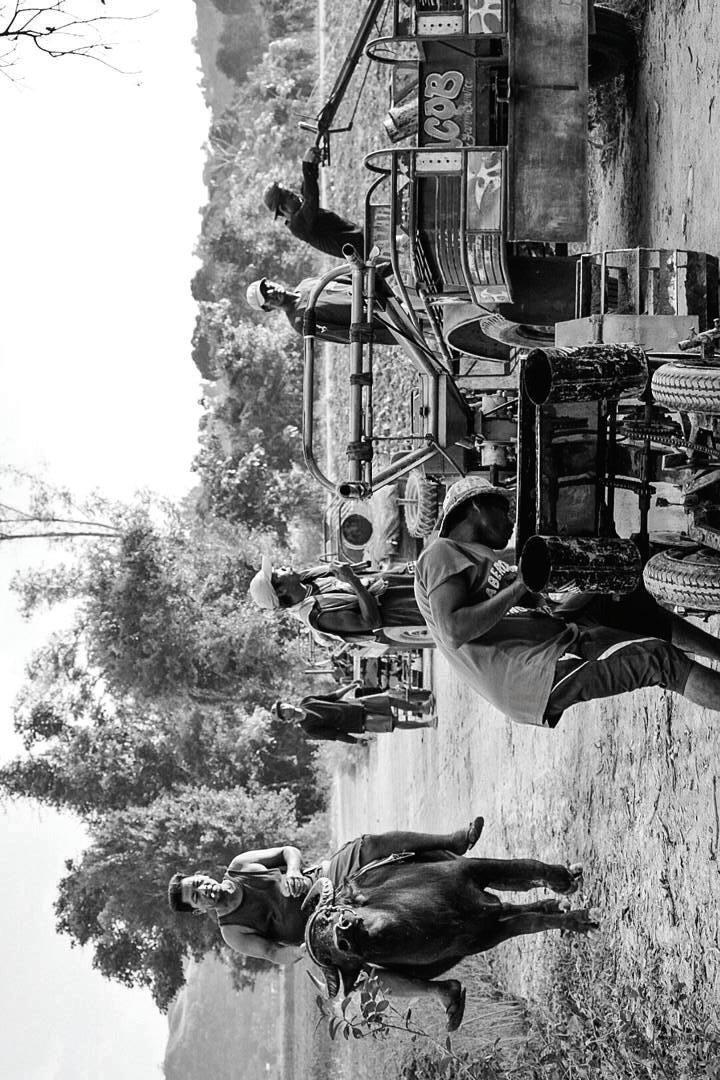 BY RIANNE SEREENE BAYSA
BY RIANNE SEREENE BAYSA
Afish outta water. That’s how she was known. Raised on the coast and taught how to swim before she could walk. Her grandfather called her his little kumu due to how she looked the moment she was born. Red, slimy, and squirming like a fish with a hook in it’s mouth. “It took everything the doctors had just to getcha to breathe,” he would remind her. “Your gills just weren’t used to suckin’ air yet!” She believed his story longer than she believed in Santa Clause.
The only daughter of an avid surfer and champion freediver, the ocean was her home. She loved the feeling of the Pacific sun on her back, and liked the way her skin tingled when ripples of wind tore across the surface of the ocean and sprayed her with a salty mist. Just adjacent to the ocean was a freshwater faucet where sea goers would rinse after a day at the beach. Only a few paces from the main spigot was a small bubbling fountain, the porous outer edges of its granite bowl eaten by years of billowing sand. Within the crystal waters was a crowd of coins that tourists had contributed, along with shell fragments, bottlecaps, and shimmering shards of glass. Unable to see over the wall of the fountain, her father would hoist her up, where her eyes leaped on the hoard of trinkets and abandoned treasures. Her little hands would grope vainly in the air, and occasionally splash stubbornly in the water, her fortune just out of reach.
“Kumu listen,” her father would intervene. “They’re in the fountain already. They belong to the water now.”
Her fondest childhood memories were of chasing sandcrabs, blowing rings of ascending bubbles, and sleeping on sunset kissed beaches between her parents as the tide played its steady and comforting rhythm.
It was that same ocean melody that lured her into the ocean year after year. Her head was buried just beneath the surface, the faint whistle of her breathing echoed through her snorkel tube. The sparkling, bitter taste of saltwater was familiar to her, as was the steady swell of the waves. Her chest rose once more, this time inflating like the beach balls which lined the shore, before she pivoted at the waist, and dove effortlessly underwater.
Suspended in the blue horizon, she felt as if she was flying. She was the most alive when she couldn’t breathe. Here, she was limitless. Here, her arms and legs combined with the current, and she danced to the tune of crashing waves. Here, she felt free. There was a deep and distant rumble rising from the unexplored depths of the volcanic trenches. It blended together with the prickly sound of sediment being swept over the reef, which sounded almost like tv static. The choir of oceanic voices was music to her, and she found that the bellowing rumble of the water drove any remnant of the outside world from her mind. Everything seemed to slow down, the earth itself hovering on its axle. She retreated inward, allowing her thoughts to settle like calm water, and her soul to rest like an anchor. She let her eyes slowly roll backwards, feeling the deep and dark embrace of the ocean.
But there!
Her eyes shot open, captivated instantly by a flash of white light. There!

Through a small crack in the reef below, a single ray of sunlight illuminated a single pearl, glimmering with temptation. Immediately, without thought or hesitation, she dove out of her meditation deeper towards the pearl. She felt a building pressure in her ears and behind her eyes as she inched closer. Finding the crack too small to fit so much as her finger, her hands gripped the coarse, prehistoric clumps of reef as she crawled along the ocean floor, her head swiveling left and right like a lighthouse. Wrenched from her inner sanctuary, her body began to protest her movements, each one sapping her of precious oxygen. The steady tension in her chest had begun to feel heavy, and a primal voice from somewhere within her frame pleaded for air. Her brow furrowed, her grip on the rocks tightened, and she shook the voice away.
Creeping along the bottom, she came to a cliff which sank another 15 feet into a pacific plain of white sand, which spanned for as far as she could see. Peering along the edge, she found what she was looking for. Not any bigger than herself was a crevice which split from the lip of the rock. Shrugging off another petition to breathe, she poured her head into the crack, and saw that it yielded a cave in the same direction of the pearl.
She paused, peering once to the blinding light of the sky above her. At this point she reckoned she was 30 feet below the surface, and she knew she was approaching her limit. The charming rumble had transformed into an ominous cathedral chant, and her heartbeat rang in her ears like the merciless pounding of war drums. She felt something almost pulling her into the cave, as if the pearl itself had a gravitational field. Lowering her head and fluttering her legs, she resolutely disappeared into the jaws of the coral cave.
She used her hands to propel herself deeper into the dark, only barely perceiving the black silhouettes of fish lurking beneath the structure. They looked at her with large and indifferent eyes, void of sympathy, concern, or malignance. Drifting forward, she placed her right hand against the wall, her fingertips sweeping for any sort of opening that would lead her to her objective. The wall withdrew from her hand and retreated into a crooked and narrow crack which she could see opened into a thin horizontal cavern. Through the gnarled vent she could see weak beams of light falling from holes in the ceiling, one of which rested upon her coveted pearl.
Already, she had been underwater longer than she ever had before. Her sides ached intensely, and her lungs felt as if they were about to burst. The water in the cave felt ice cold, and her arms felt like they had weights chained to them. The ancient voice within her head was screaming now, wailing inconsolably like an infant temper tantrum, begging desperately for air. Unable to ignore the voice any longer, she
twisted and contorted her body, wriggling vigorously to reach the cavern. The beating in her ears quickened and intensified with every moment. The graceful water dance she had performed only minutes earlier had been replaced by reckless abandon, and she raced deeper, feeling the crushing weight of the pacific ocean behind her sternum. Her fingers wrapped around the pearl and snatched it from its resting place, before whipping around, hitting the crown of her skull against an unforgiving rock ledge. Blinking rapidly in recovery, she craned her head forward scanning for the fissure.
But it had disappeared.
Her rapid movements had sent pillars of mud and sediment into the water column, flooding the cave with a thick and impenetrable cloud of murk. It would only take a minute or two for it to settle down. But that was more time than she had. A dismal grunt of terror escaped her mouth, and an instant wave of panic swept over her. Dropping her prize, she plunged blindly into the smoke, waving her hands wildly through the water. Feeling. Hoping. Praying. Clutching. Her legs swung frantically, filling the entire cave with sediment. The deafening hammering of the drums made her head feel light, and she felt the roaring thunder of the deep swallowing her whole. There was a blinding pressure in the back of her head. She had lost control of the inner voice, which shrieked and clawed and gnashed its teeth with the vengeance of a damned soul. She sucked in any dead air from the nose pocket of her mask, and felt it grip her face like a wet cat clings to a log. Everywhere she looked now she saw nothing. Disoriented, defeated, and drowning, she pawed aimlessly at the walls of the tomb. Her diaphragm contracted violently, beating against the walls of her chest cavity with the poison and ferocity of a bucking horse. Stars mingled themselves among the floating particles of sand, and she felt herself helplessly sinking into a narrow chasm, the dark walls closing her field of vision while the sound of booming drums cudgeled her between the eyes.
And then.
Slowly.
She began to settle…the same way the disturbed sand gradually sank back to the ocean floor. The drums receded like a falling tide, and the pressure leaked like a deflating balloon. The ocean pulled her deeper into its arms with its lullaby, and her body rested lifelessly on the snowy white bottom of her coral coffin.
Even from above the water, one could see her golden hair glimmering on the ocean floor through a slit in the reef, like a nickel in a fountain. •

Located near downtown Honolulu, The Honolulu Museum of Art sits across from Thomas Square. According to The HoMA website, the museum highlights collections of art from Africa, Pan-Asia, Hawaii and the Pacific and the Americas and Europe. The museum also features decorative arts, ancient art, contemporary art, photography and works on paper, textiles and more. The HoMA is open Sunday , Wednesday and Thursday from 10 a.m. to 6 p.m. and Friday and Saturday from 10 a.m. to 6 p.m.. The museum is closed on Monday and Tuesday. General admission is $20, with a discount for Hawaii residents totaling $10. Visitors 18 and younger and students with a valid school ID can enter for free. For more information visit honolulumuseum.org.
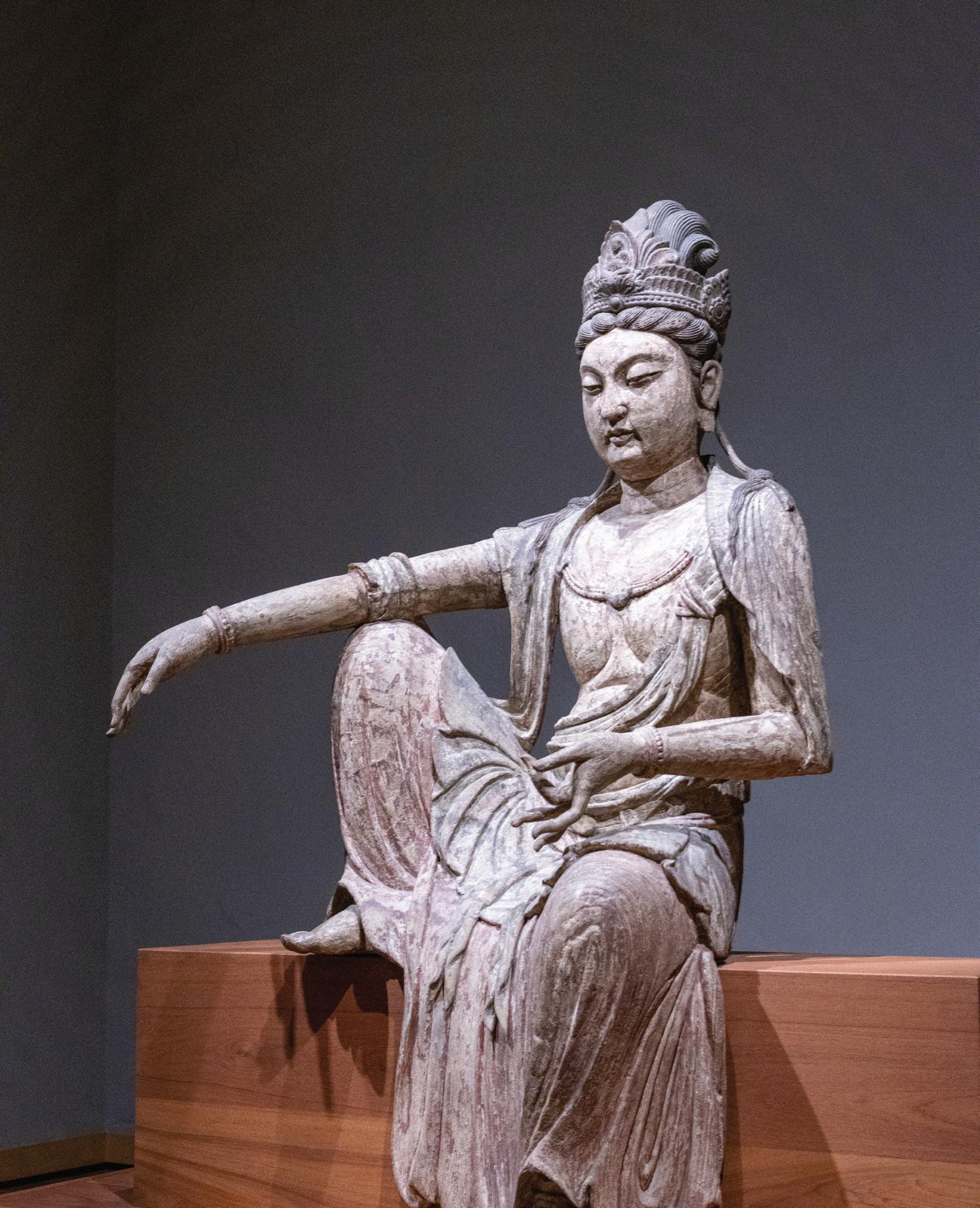

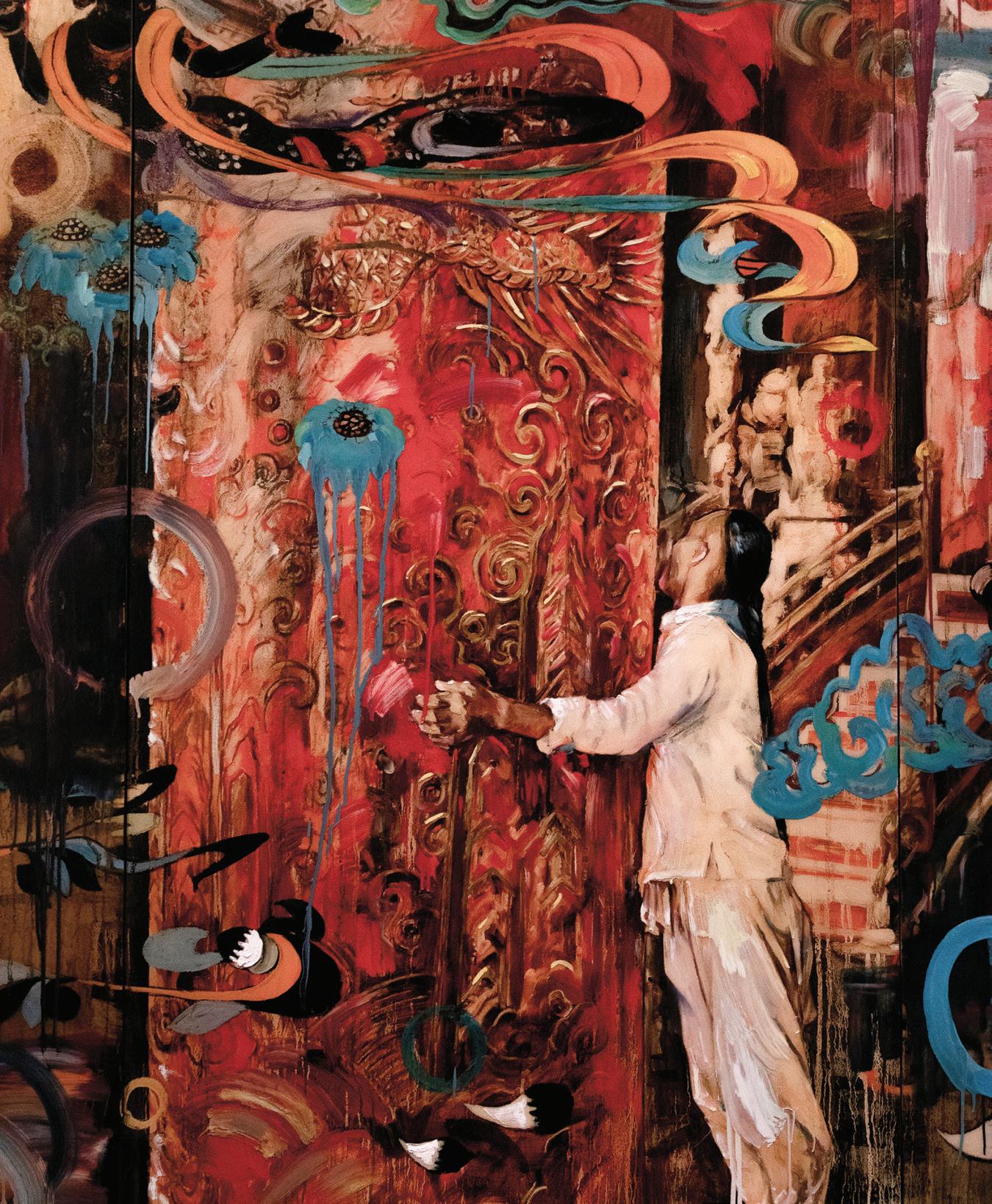

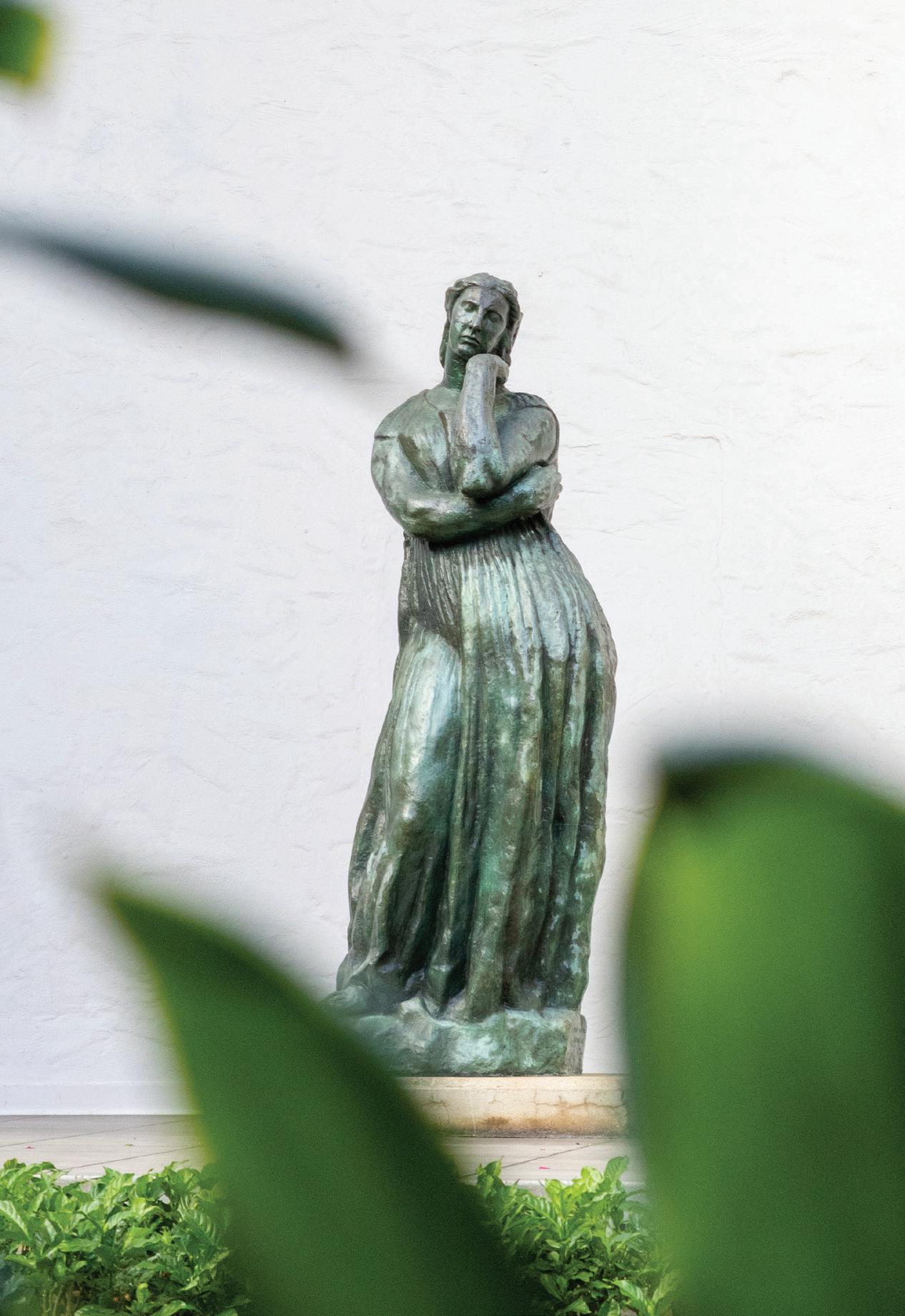
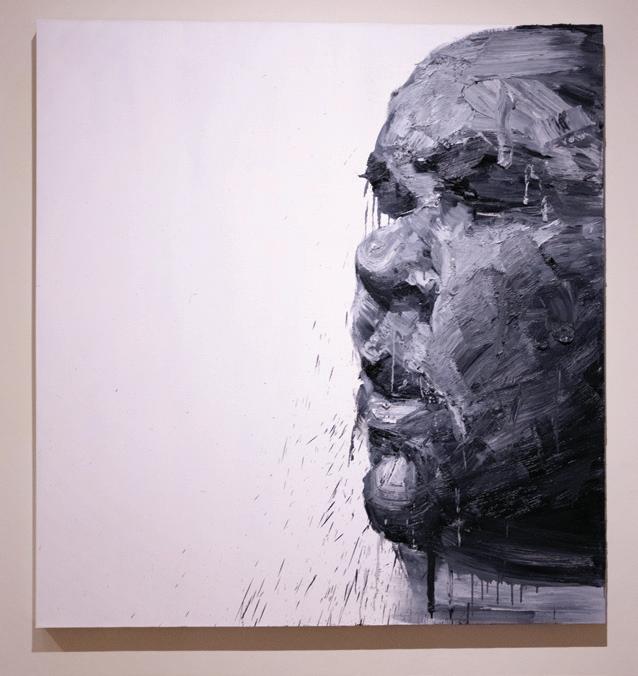
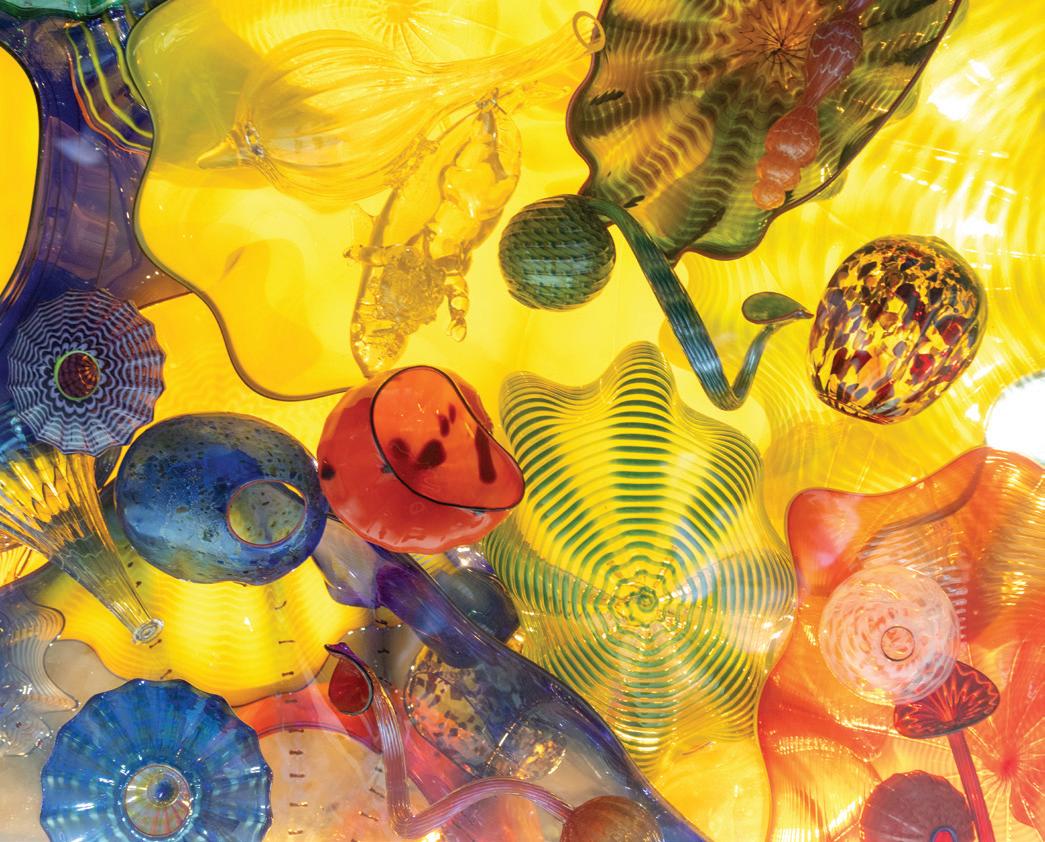
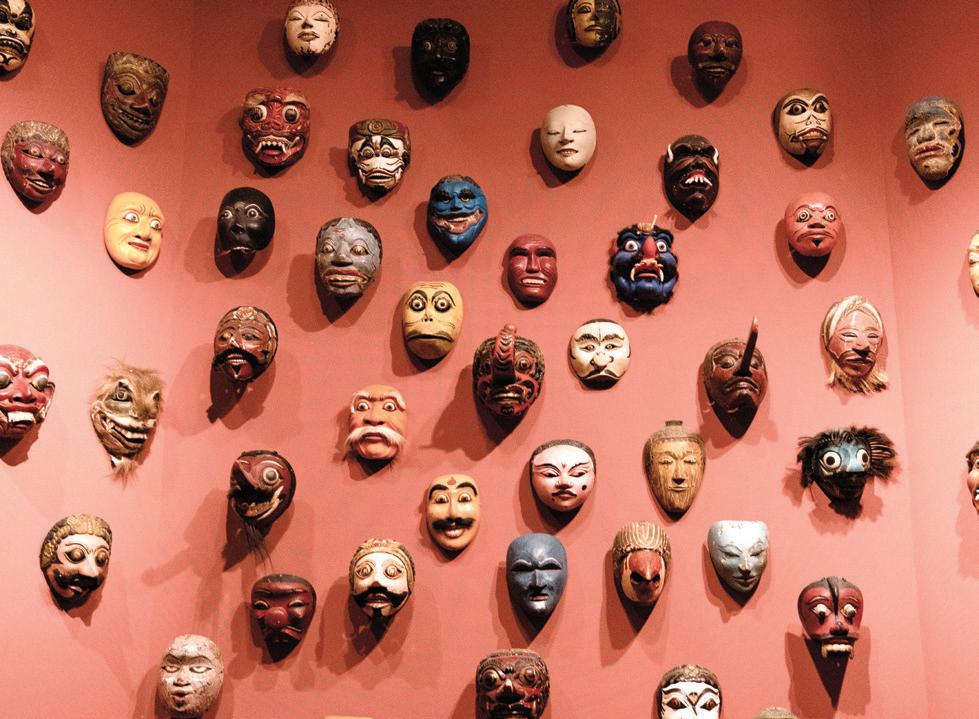


From a young age, Mya Thornton, a freshman double majoring in communications and intercultural peacebuilding from Kailua, said she has immersed herself in the world of gymnastics, developing strength, flexibility and an innate sense of body awareness. However, she said it was through her exploration of dance that she found a means of healing and self-discovery.
As a gymnast since the age of 3, Thornton said she has cultivated a connection with her body, sharpening her physical abilities and pushing the boundaries of what she thought possible. This laid the groundwork for her to embark on a new artistic journey into dance. One that would extend beyond athleticism and into the realm of grace, fluidity and emotional release, she said.
BY SHARINI SHANMUGANATHANThornton said she discovered dance merged athleticism with artistry. The precision of each movement, the extension of limbs and the alignment of the body allowed her to express her emotions in a way words alone could not capture, said Thornton.
Thornton said her love for dance expanded to include couple dancing, or partner dancing. The enchantment of partnering with another dancer, she said, created a beautiful dialogue of movement and connection.
Through the art of couple dancing, Thornton said she discovered a sense of trust, vulnerability and harmony. In the embrace of her dance partner and childhood friend, Evan Foster, she said she found solace. It was a space where she said she could surrender to the music and let her body respond intuitively. She explained it allowed her to release any emotional burdens and find a sense of liberation.
“Evan was the person who brought me into dance, and I had no idea his mom was a dance teacher,” Thornton said of her best friend. “There are times I would be having a really hard time, and Evan would come knock on my window and be like, ‘Maya,
BYUH student shares the extraordinary healing power of movement and expression
I’m teaching you a new lift. So get out of bed right now.’ It’s just been so amazing. It’s something that’s really been able to help keep me going, and I am super grateful for him,” said Thornton.
Thornton said she has been attending dance classes since Fall 2022. “Dance teaches me a lot of patience and helps me get over stage fright. I wasn’t working out a lot because I was busy with classes, but I always had weekly time for a ridiculous amount of exercise. It felt like cardio for six hours, [with all the] dancing around and getting thrown in the air. It’s always been super fun,” said Thornton. In the midst of struggling with midterms or finals, she said dance saved her.
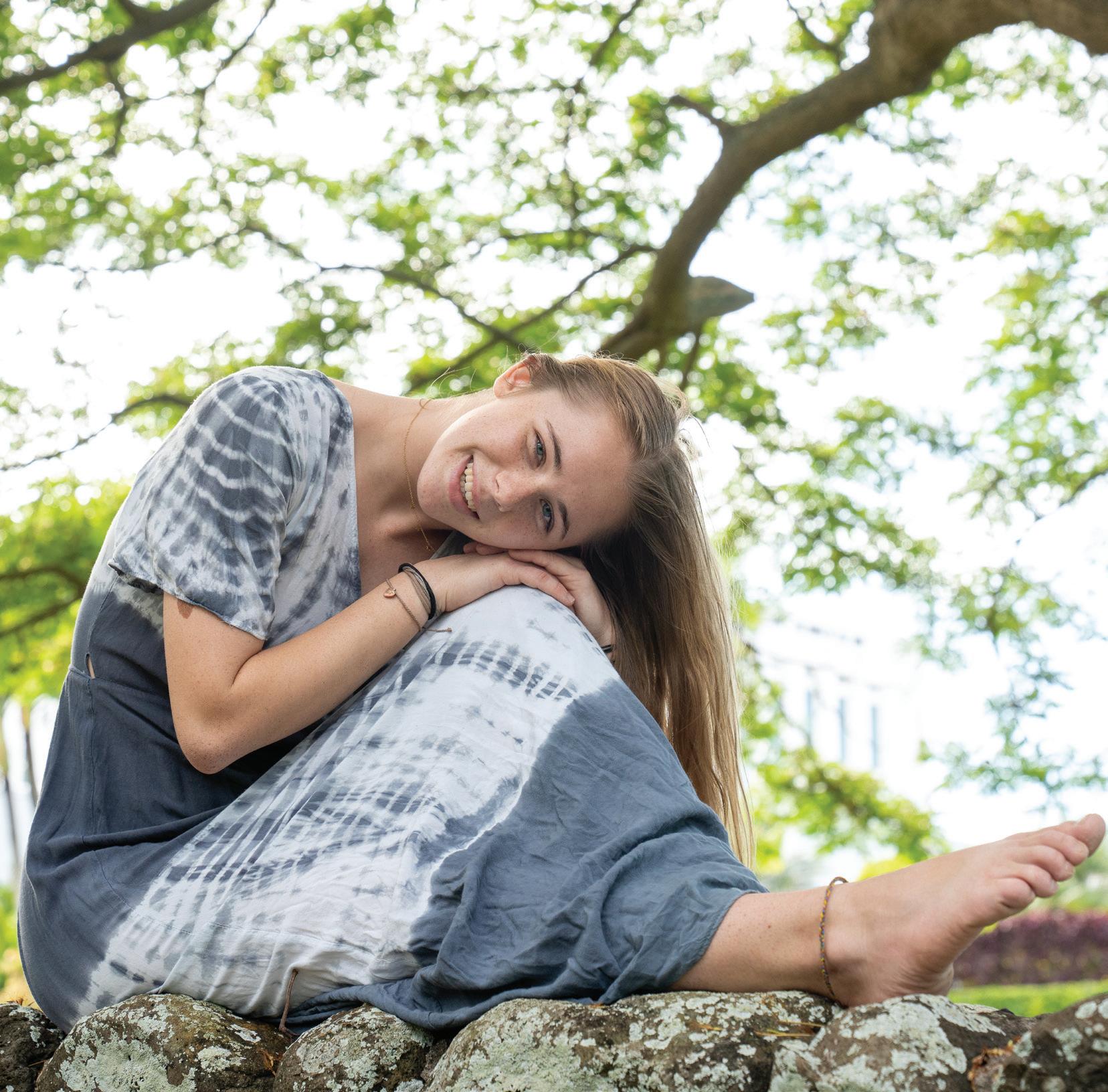
“Dancing with my best friend was such an incredible experience,” Thornton said about being partnered with Evan Foster. “We would have moments where we would pause and just make the worst eye contact, which was absolutely hilarious. When we’re on stage dancing, I think about all the memories I have

gone through, especially during the dance concert in the fall. ... It was just a really nice moment of reminiscing that [Evan Foster] is a good person and this is a good moment.”
Evan Foster, Thornton’s best friend from Kapolei, said, “She is an angel on earth [who] strongly believes in the power of friendships. Her infectious smile and unwavering positivity make her a cornerstone of love. I feel incredibly fortunate to have met her during ninth grade seminary, and I am forever grateful for the immense personal growth she has facilitated in me.”
Thornton shared she previously struggled with self-harm. She explained how she would wear long sleeves and bandages for six hours straight. Thornton said it was awful.
“I would wake up, lay in bed and cry. What really motivated me to stop selfharming was that I want to be able to dance without wearing long sleeves. I want to be able to have fun. I do not want to be worried about what people think. And so, after enough time, I was able to dance without long sleeves. It took a while, but I got there by the end of the semester,” said Thornton.
Thornton said dance became more than just physical movement. It became a form of therapy, a means to heal her inner wounds. With every step, leap and turn, she said she channeled her emotions, fears and triumphs, allowing the rhythmic flow of dance to guide her on a transformative journey.

Thornton said her love for dance radiated through her every movement, captivating audiences and inspiring others to explore their own healing potential through movement and self-expression.
Her journey from gymnastics to dancing represents an evolution, she explained, a testament to the power of dance to unlock the depths of one’s soul and facilitate healing from within.
“Dance has helped me in a lot of ways. ... I think the real reason I really liked [dance] is it’s like gymnastics in the sense that I get to flip around and do spins. That’s something I haven’t done in a while, because I haven’t been doing gymnastics. So still being able to flip and do some routines to music is so fun and exciting,” said Thornton.
Thornton said it is uncommon for people her age to do gymnastics, so she has found a substitute through aerial silks. “It basically has two long pieces of fabric that hang from the ceiling. You go up and you get to tie yourself around,” she explained. “It’s also a form of dancing with music and routines.”
Thornton said she struggles with depression. She said most of the time she is either sad or just emotionless, numb to the world and zoned out. She explained dance has always been something that takes just enough brain power and energy that it doesn’t wear her down but instead, gives her more energy.
“It doesn’t matter how bad I feel. If I can get myself to start dancing, my mood gets 100 times better, and it’s really amazing what it does. I think it’s one of the few times where I really am truly happy,” expressed Thornton.
“[Thornton] is diligent, responsible and loving,” said Nina Foster, Thornton’s dance teacher, Evan Foster’s mother and an adjunct faculty member for Seasider Sports & Activities. “She loves to dance. She often spends extra time with her dance partner to take the dances to another level.
“She also loves to help others. I can feel when she dances, she feels free. I love her and her beautiful spirit. I wish dance will continue to bring joy to [Thornton’s] life.”
Thornton said she had many injuries from gymnastics. She broke her foot a couple of times and tore ligaments, which she said is the reason she stopped doing gymnastics. She said dance has helped her be more active, as well as helped her foot to heal.
“Art in general has been amazing for me,” Thornton said. “It has always helped when I went to the hospital due to my depression.” She said at one point she was hospitalized and there was nothing for her to do during that time. “My parents brought me a sketchbook and I was able to just draw and create art. ... I was able to listen to music on [my parents’] phone, imagine routines and come up with choreography in my head.”
Another time she was hospitalized, she said, “I had a lot of free time when I didn’t have meetings with therapists or counselors. They had coloring books and I would rip out pages of super intricate things and just draw and color. That’s really how I made it through,” she said.
Through her dedication, passion and unwavering commitment to self-expression, Thornton said she continues to dance her way toward personal growth, inspiring others to join her in the journey of healing through the art of dance. •

Inspiration for a floating forest of wildflowers in an exhibit at the Honolulu Museum of Art came from a small, thatched English cottage seven miles north of Cambridge. That was where Rebecca Louise Law, the artist behind the installation, grew up. Her father was the head gardener of an estate, she said in her book “Life in Death,” and would teach her and her siblings about horticulture, the practice of garden cultivation, and its history.
Her mother encouraged them to play outside, Law said. Inside play was saved for rainy days, she said, and would be in the attic where hundreds of hanging dried flowers lined the ceiling. “I can still remember the smell,” she said. Law said both indoor and outdoor play was foundational to her art practice.
Her installation art piece of thousands of dried, hanging flowers that create a tunnel to walk through will be at the Honolulu Art Museum until Sept. 10, 2023. The museum is free for students and $10 for kama’aina, or locals.
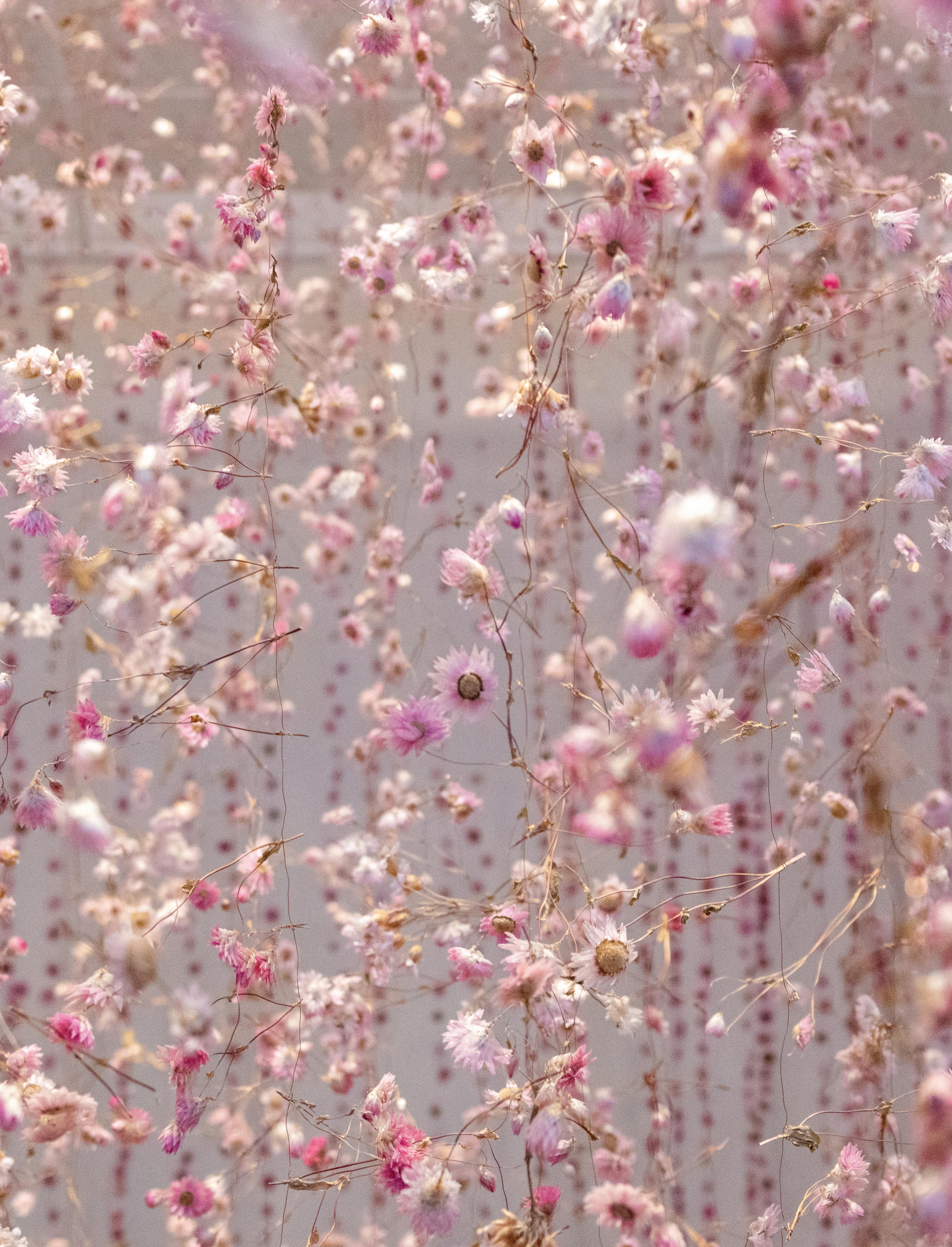
Law has installation art pieces across the world, but said she was excited to create one for Hawaii where the community is diverse. “I feel like that is what art is meant to be,” she said, “bringing everyone together.”
The exhibit is both inclusive and interactive. Law said people helped her string the flowers and she loves the symbolism of many hands working together to be a part of something bigger. There was a place at the museum for people to write down their impressions from the artwork. People rolled up notes and put them in holes of a circular,
BY ABIGAIL HARPERLaw’s message with the Hawaiian exhibit is very simple, she said. “There’s a necessity for us as human beings to look after each other and look after this earth.” Her hope is to create something that will transport people into a space without the constraints of time and where there is still life in death. •
honeycomb–textured display. One admirer left a poem they had written about the exhibit, saying:“A feeling to place belonging, stillness in being.
An ease to existence, effortless communication of meaning.
A public space for all to reside in, Yet, not another soul here to confide in.
A contemplative bench is worth a visit at the Rebecca Louise Law exhibit.”
“I felt like I was walking in a forest of flowers”

“I appreciated the use of natural materials. It reminds us that art and beauty is found naturally.”
“Thank you for transforming my perspective of recycled life. [I liked] being able to experience a grand piece of our collective.”
“Wow, malama da aina. I feel grateful for nature and [I] learned to stop and smell the roses”
“It reminded me of my loved ones that I gave [flowers to or who] gave me flowers”
Flowers hanging from the art exhibit. Photos by Yui Leung. Graphics by Marlee Palmer.Through the experience of art you can learn about yourself, who you are and what your passionate about, said Natalia Andrade, a senior studying communications, from Atlanta, Georgia.
“Art takes so many forms but personally I think art is anything that creatively inspires me to feel some kind of emotion and be myself,” she said. “Whether that’s through music, a painting, a book or a movie, art has a way of making me feel safe and loved, while another piece of art can simultaneously make me so sad it hurts, which is what I think is the purpose of it, to make us feel.”
Senior, Joe Powell from Arizona majoring in music, similarly said, “Art is the ability to express emotions and feelings, or even to be able to inflict emotions or feelings in other people through the means of visual, audio or [our] senses.” Powell explained music is a form of rhetoric, and it’s the whole idea of expression. In music, you have it strictly educational or logical, while the other one is
built specifically for emotion. Powell said, “Music is the manipulating or controlling sound for those purposes of inflicting some sort of rhetoric, some sort of emotion onto other people.”
Andrade said similar to how art moves people, music does the same job. It can make people feel all of the emotions. “One song has the power to enhance my emotions or completely change my mood. The [impact] music has on me, and many people, is so special.”
She explained she has multiple playlists created with the intention to make her feel a certain way. For example, she has a happy playlist to get her excited for the day, and a sad playlist to validate and comfort her when she is feeling down. Andrade said the process of creating music is art itself, as it consists of a singer, producer and writer. She said each person has their own role which allows them to create something so beautiful.
Dallin McKay McKinney, a junior from California majoring in theater, music and TESOL, defined art as “a form of expression
The power of music, says BYUH students, is how it conveys, changes and connects through emotions
of communication.” McKinney said what he finds cool about music is how it can make everyone feel something. He said people can listen to a song in any language and understand what emotions the song is meant to bring out of them.
McKinney said other forms of art bring out certain emotions for certain people and certain occasions, but with music, “it has the ability to connect, to bring out emotions for everyone. It is a form because it can bring out different emotions. It can communicate things that words can’t.”
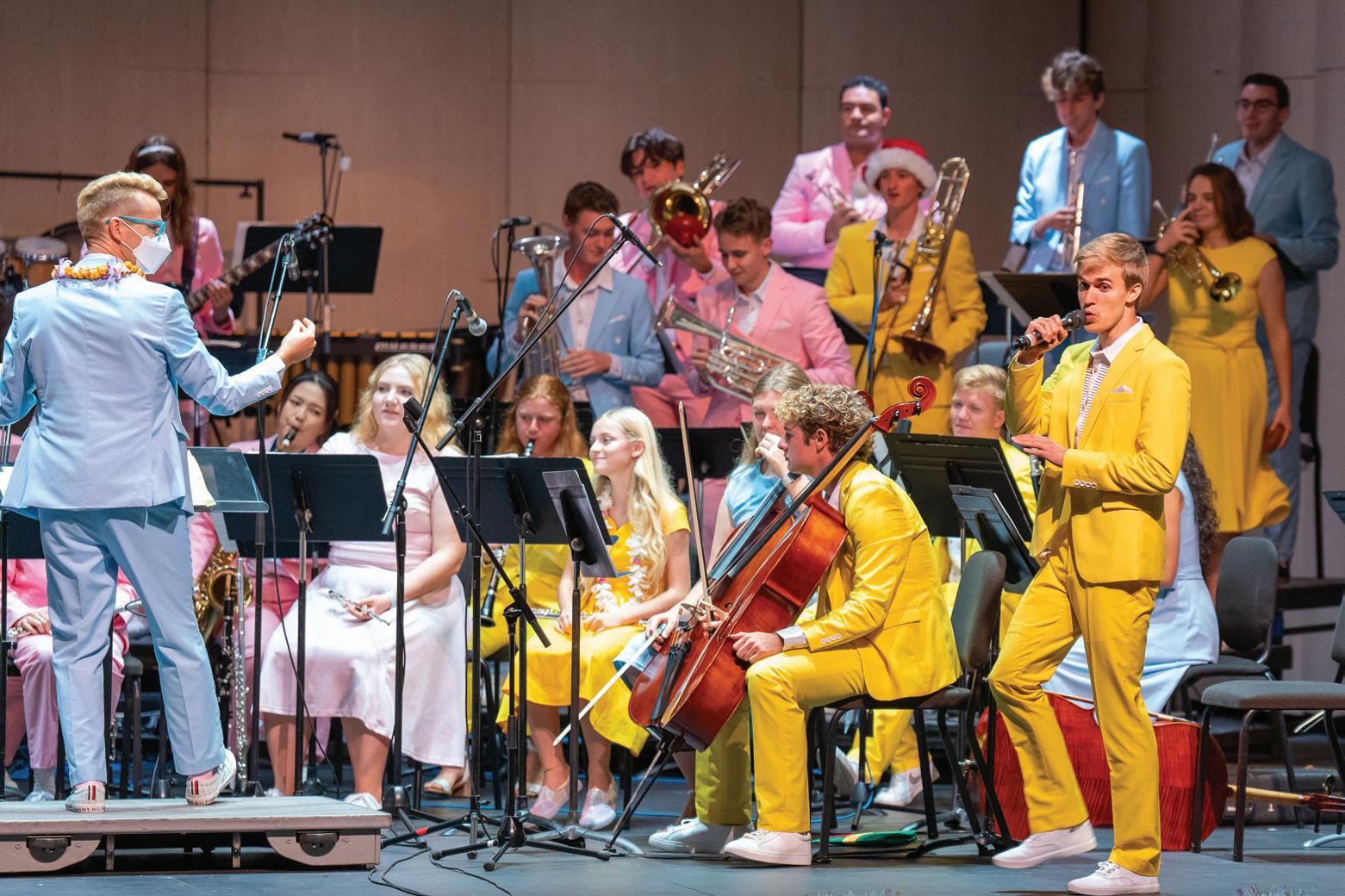
McKinney said some of his favorite songs to listen to have the message of experiencing the lows but also pushing through the hard times. He said one of the songs that does this he wrote titled “The Music” sang by America’s Got Talent’s singer Cody Lee.
“Sometimes my favorite part in music is when the sound goes away for a moment. It is just a very intimate moment and in that song [“The Music”] it went from lots of musical stuff going on to it just being the voice and the music,” McKinney explained.
Powell said some of his favorite songs that have powerful messages are from the cartoons “Steven Universe” and “Adventure Time.” The song “Be Wherever You Are,” from composer Rebecca Sugar, relays a message to be in the moment, he said. Powell explained, “I use [the song] whenever I get anxiety attacks. … I need to kind of calm down and refocus myself on the present instead of hyper-fixating on things of the future or the past, which I do a lot.”
Another one of Powell’s favorites is the song “Escapism.” He said the song’s meaning is, “escaping whatever trap you’re in, whether it was one you put yourself in or one that was forced upon you and finding your way home.”
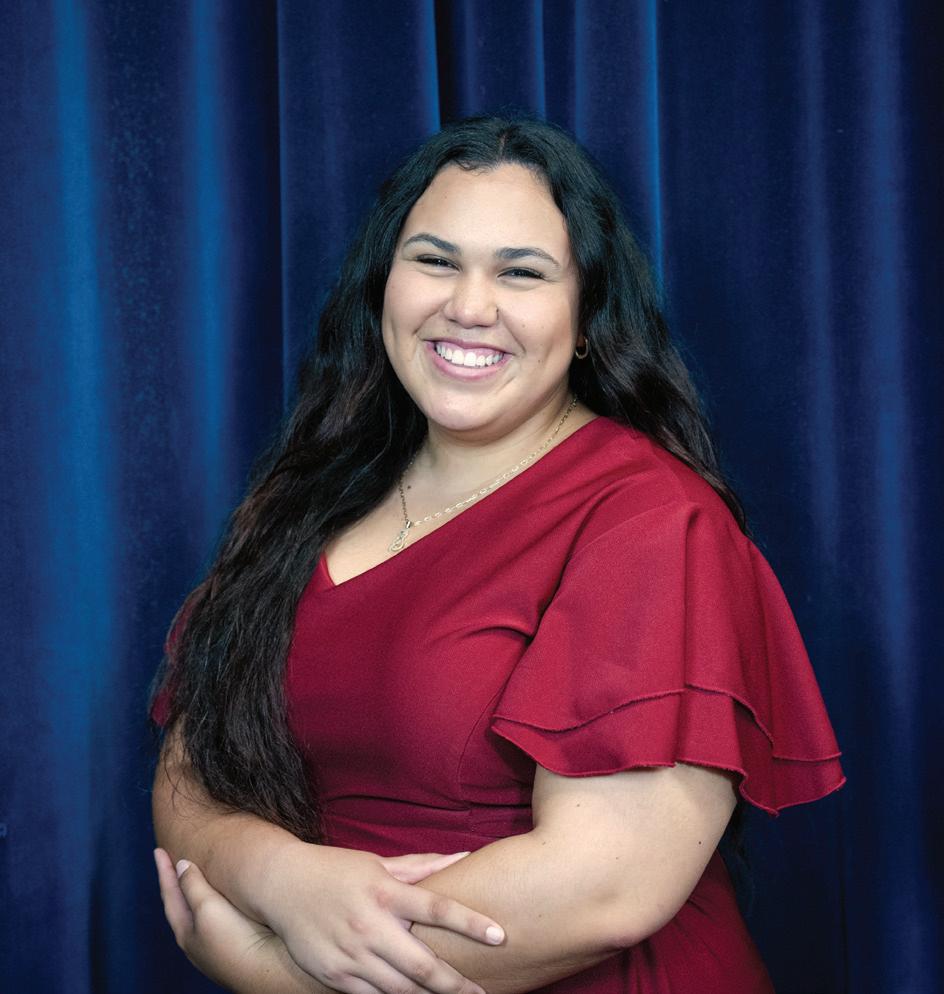
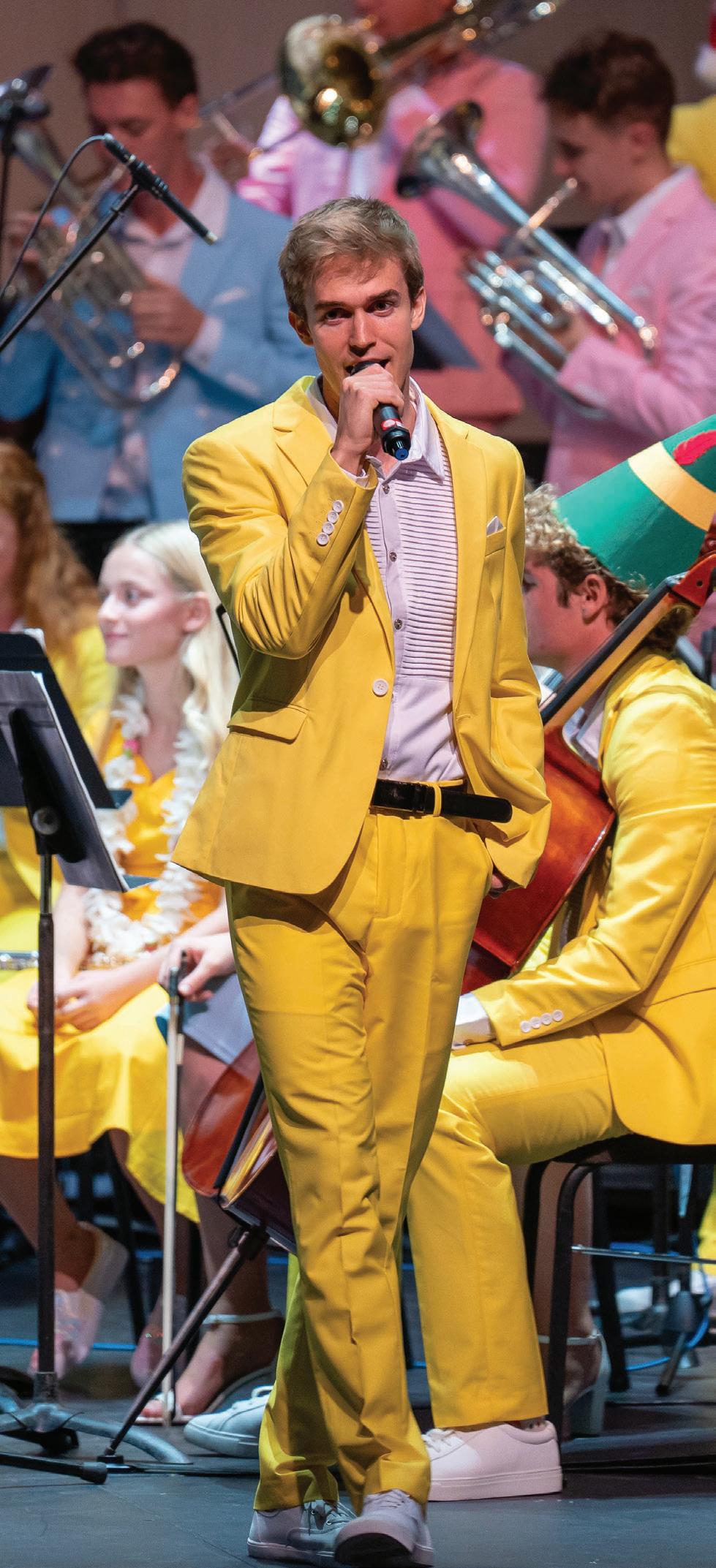
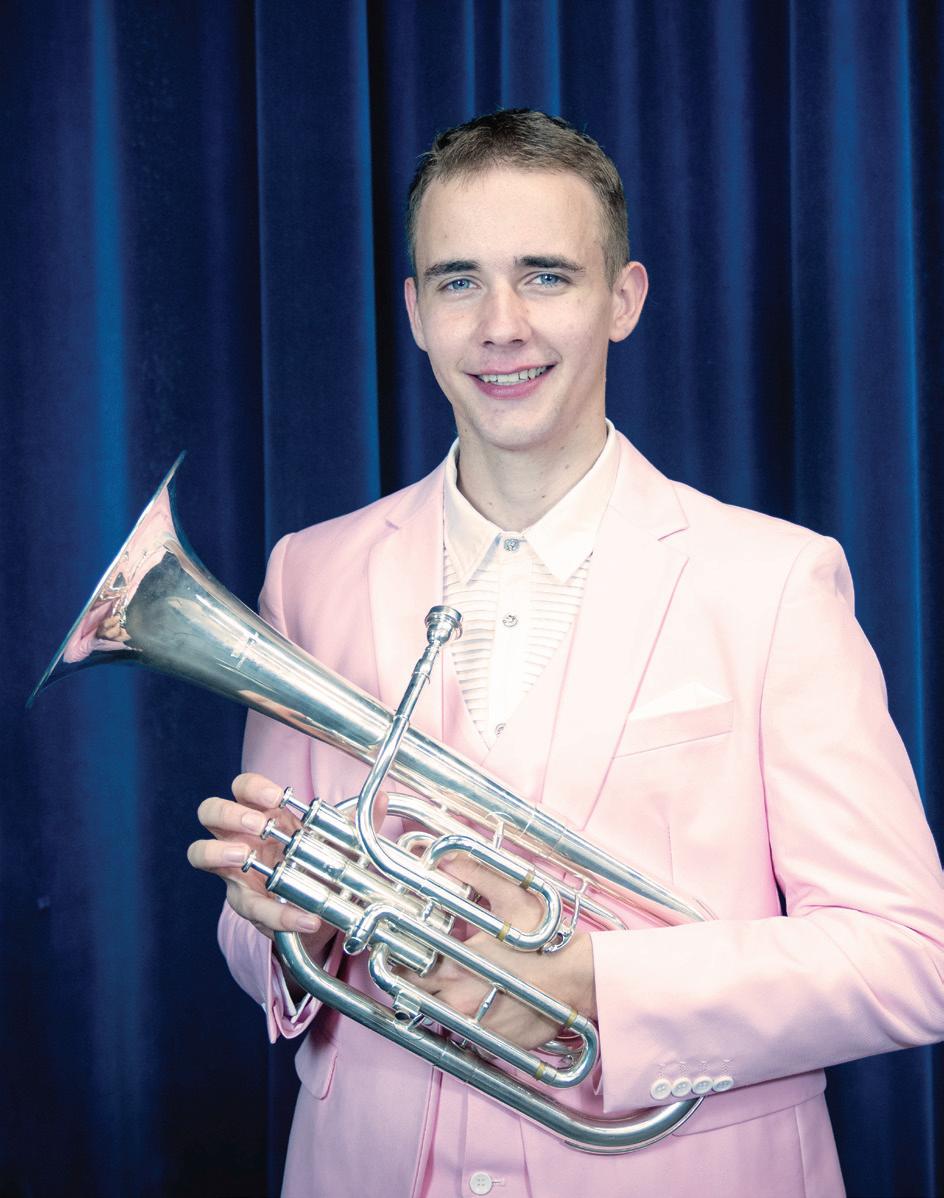
Andrade discussed how music conveys powerful messages. For example, she said, “The song ‘Man in the Mirror’ by Michael Jackson is one of many songs that talk about how change in the world starts with you. If we want to make a change in the world, we need to look in the mirror and start with ourselves. This kind of inspirational message is important to convey. Sometimes speeches and conversations are not enough, so a song is the next best thing.”
She continued, “There are also songs that offer you [the] reassurance that everything is going to be okay, and I think I like those the most. ‘Here Comes the Sun’ by the Beatles and ‘Landslide’ by Fleetwood Mac are two of those songs that have comforting messages.”
“People don’t have to speak the same language, have the same cultural background or be from the same place to enjoy the same music. Music is universal and it is special for everyone, no matter how different we all might be,” Andrade commented. She explained how music has the power to break down barriers and tension and instead connect and bring people together. She added some things are hard to say and can be expressed easier through song.
Andrade recounted a moment when she had felt her musical performance touched people. She said when the Ho’olōkahi Chamber Choir toured Hawaii Island they had several experiences where the “music touched the audience.” Andrade said, “One [time] in particular was when we went to Parker Ranch. One of the ranchers asked us if we could sing ‘Love At Home’ because the owner of the ranch loved that song. When we were singing,
she immediately burst into tears, along with many of the choir members and told us after that she could feel His spirit in the room with us.”
Ho’olōkahi means unity and diversity, Powell said. The message of the choir is having all these students from different backgrounds and different ethnicities all coming together in this choir and having one voice, he said.
He also recalled an experience from his trip to Maui with the choir. In the Hawaiian charter schools, the spirit was felt so strongly and there was unity between the schools and the choir, Powell reminisced. He said the choir started off with the Hiki Mai chant to ask permission if they can be there and in response, the Hawaiian charter school students sang their chant saying, ‘Yes you are allowed to be here.’
Powell said from his experience he felt a confirmation that “We are fulfilling this purpose in the mission our school has in going forth to serve, bringing others closer to Christ and sharing His spirit, His spirit of love and spirit of family.”
Andrade said, “I just want to share how important the arts are. Music and the arts in general allow people to be who they want to be and give people a space to be comfortable with themselves. One of my favorite quotes says, ‘Nobody comes to the theater to see you. They come to see themselves.’ I think we can apply that to any form of art. Whether it’s music, theater, paintings, pictures, dancing or any other art form. The arts inspire creativity and authenticity in each other and in the world.”
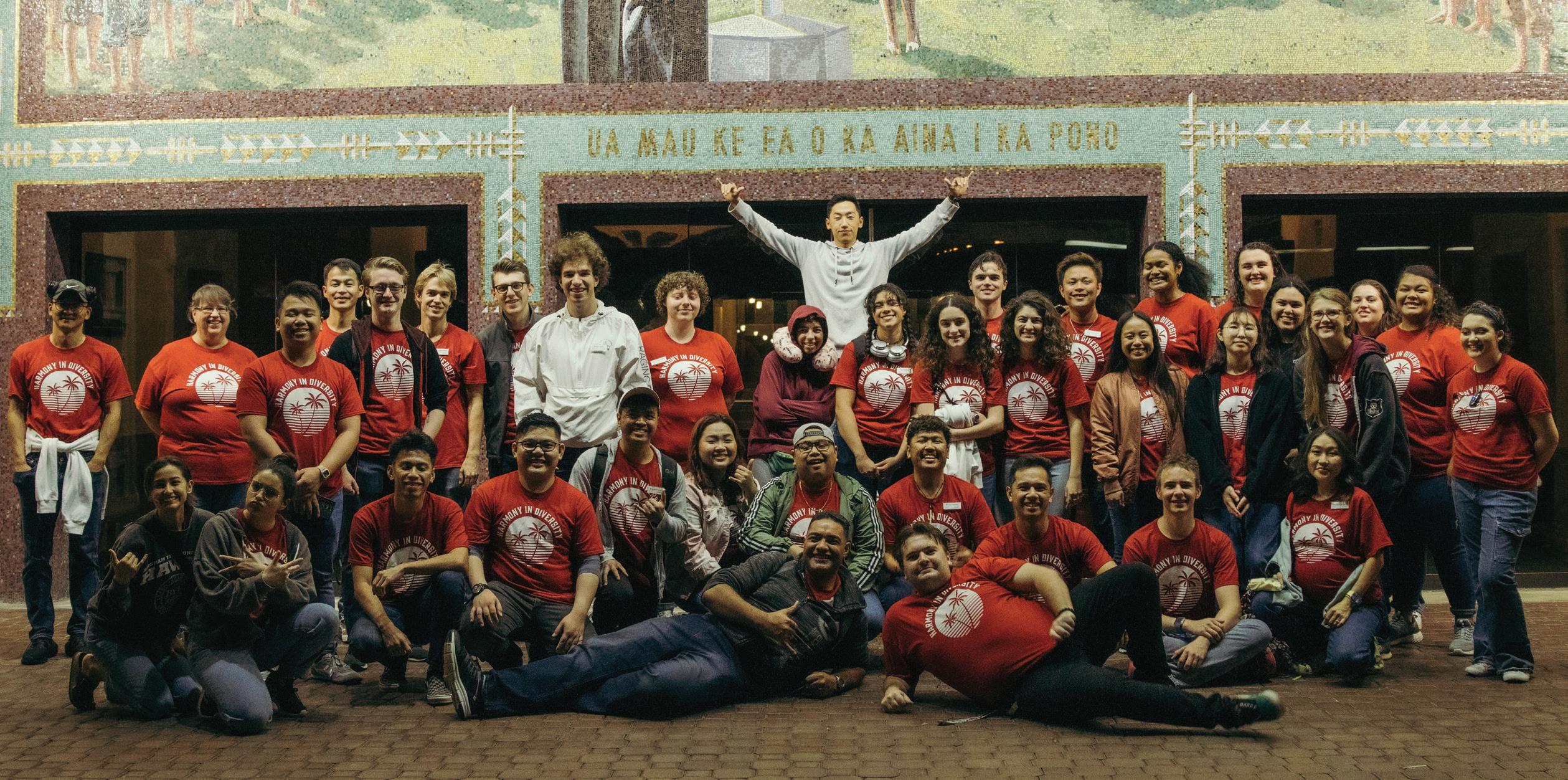
Powell attributed his love for music to his musically inclined family. “[Music is] always something that I did, probably because my family just all does it. That’s how my parents met. They met playing in an orchestra together. So they both played French horn and that also just happens to be the instrument that I play,” explained Powell.
He said he is the youngest of his six siblings, and all his siblings play stringed instruments such as the viola, violin and cello. He recalled, during the holidays, his family performed in mini orchestras, quartets or quintets.
Powell said he creates voice memos of different melodies that come to his mind, to express himself through music. These memos are a reflection of what he is feeling or thinking at the moment, he explained. Other ways Powell said he expresses himself is through instruments, especially through the French horn or brass. He said through those instruments he can be very expressive.
Like Powell, Andrade said her ties to music began through family. She said her mother first introduced and welcomed her into the music world. Andrade said her mother would always play music and musicals and take her and her siblings to see shows. Andrade said her mother worked at a performing arts school where Andrade was immersed in singing, dancing and performing, which developed her love for music and performing. She stated the program, “allowed me to be anything I wanted and definitely shaped me into who I am today.”
“I use music to express myself by helping me feel my emotions instead of burying them,” said Andrade. She explained music is a form of expression for her, because it allows her to emphasize the emotions she feels. She said through music, she can either emphasize what she is feeling or she can change her emotions for the better. “If I am in a sad mood and want to just sit in my sadness for a bit, I will put on some Adele. Or I could be
having a really bad day, but if I listen to a happy song or playlist, it can really shift my whole day for the better,” Andrade said.
McKinney explained his journey of beginning to play instruments. He said, “It was the summer, our air conditioner was broken, and I was laying down on the floor. I remember I had all these questions, ‘What am I going to do with my life?’ and then I heard my sister playing piano. I remember at that moment I knew that that was what I was going to do. I remember feeling peace.” From then on, McKinney said he had taught himself how to play the piano, ukulele and guitar.
McKinney said the way he expresses himself the most in music is how he writes his music. “The song comes to me as if it were already written. I start with the music [and] everything should be based on emotion. I’ll sit down at the piano and play different chords until it makes me feel something. Then based on the emotion, I allow myself to hear a melody that brings out that feeling,” he said.
He said he then would play with words until the lyrics and music felt right to him. He said the message is directly based on the music. Though the words play a part, he said, it is the feeling the music gave him that inspired him to write it.
McKinney said he had written over 160 songs since he used to work in the music industry in Los Angeles. He worked with celebrities like Ariana Grande, PrettyMuch, Polo G and NLE Choppa. He said some of the music he had written, can be heard ob Spotify like “Can I Hold Your Hand,” which his most-played song on the app, with “Party on My Own” following closely behind.
McKinney expressed gratitude for the opportunity to have gone on tour in Europe. He said his fans funded the trip, and he was able to perform in 10 countries in Europe in about 30 days. The countries he toured were Amsterdam, Germany, Switzerland, Italy, Spain, France, Belgium, Scotland, Luxembourg and the cities of Manchester and London in England. •
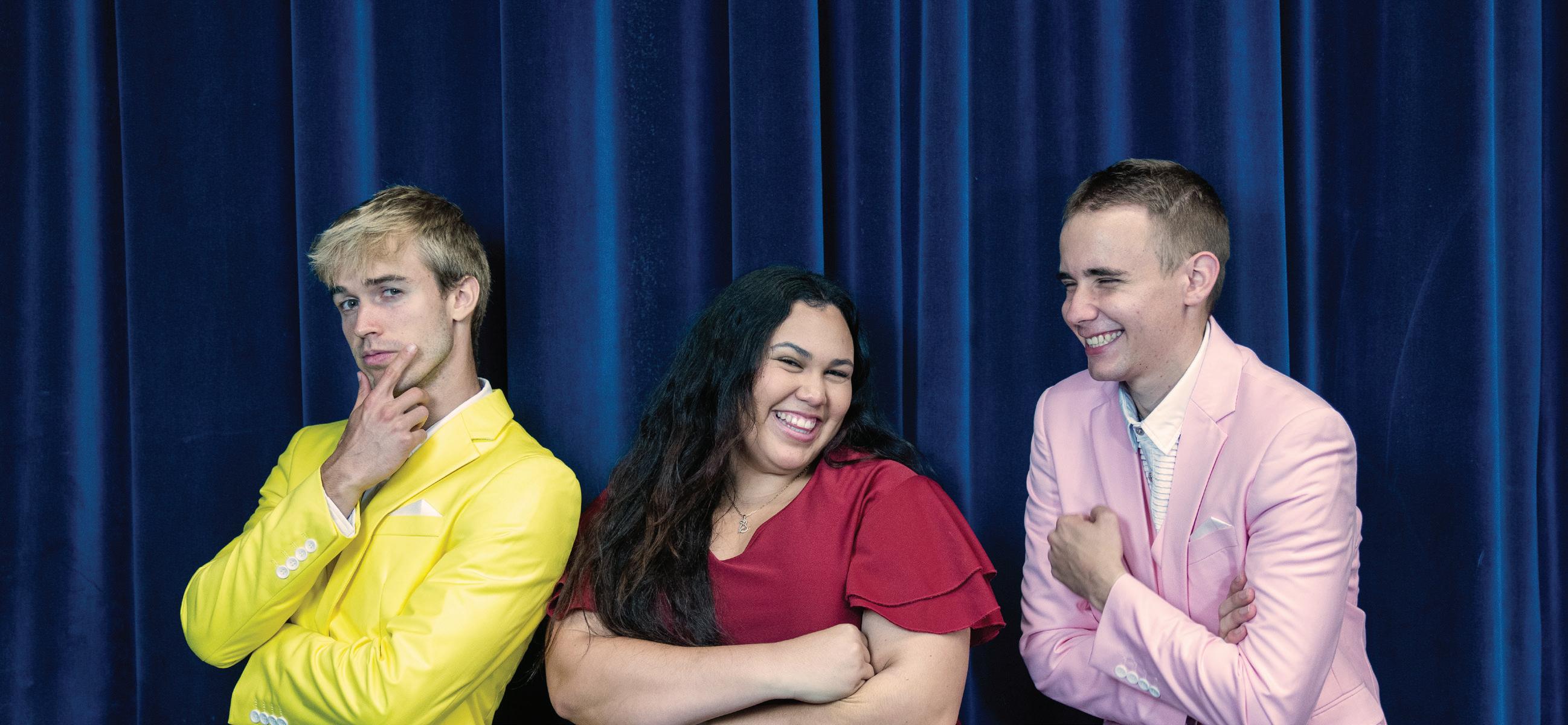




Mia Malit-Cruz captivated the crowd and offered a glimpse into her journey as a student, wife and mother through her performance in her senior vocal recital, held at the McKay Auditorium. With her unwavering dedication and ability to find balance among multiple roles, Malit-Cruz said, “Righteous passions are always worth pursuing.”
Malit-Cruz, a senior majoring in vocal performance from the Philippines, elicited excitement from her friends, family and fellow students who gathered to witness her musical journey. “I’ve been singing since I can remember,” she said, “and my parents enrolled me in pop voice lessons when I was 7.” However, she said she did not begin singing classically until she was 16 years old.
She said her musical style leans towards classical, with a preference for opera arias and songs in Italian, German, French and Filipino. Malit-Cruz said her personal life and experiences play an important role in the interpretation and internalization of the music she embraces. Malit-Cruz said among the pieces she performs, two songs hold particular significance to her: George Frideric Handel’s “Piangero la Sorte Mia,” or “I Will Mourn My Fate,” and Clara Schumann’s “Er ist gekommen in Sturm und Regen,” or “He Comes in Storm and Rain.”
Malit-Cruz explained Handel’s song represents Cleopatra’s grief over her untimely death, which resonates with her own moments of vulnerability and the need to mourn in order to move on. “Although I am not currently mourning over the same fate, there have definitely been times in my life when everything felt out of my control, and mourning was the first step in order to move forward,” she said.
Malit-Cruz said she aspires to leave a profound impact on her listeners. She said she believes her music serves as a reminder to individuals that they possess the ability to achieve anything they set their hearts and minds to. Malit-Cruz shared her firm belief life is too short to harbor self-doubt and neglect the pursuit of one’s passions.
BYUH student and mother shares the importance of striving for one’s passions despite challenges or self-doubt
Her harmonious voice echoed through the auditorium to those who witnessed her performance. Mason Bitter, a freshman majoring in psychology from California, was among those who attended her recital. “I loved her performance,” he said, “and she is very talented and gifted.” He said he is musically inclined and appreciates music and talented individuals. “It was an amazing experience,” he added.
Vanessa Bahin, a freshman majoring in elementary education from Canada, was also present during Malit-Cruz’s recital. “It was beautiful, and her voice is magical,” she said. “She’s really gifted, and I could feel the spirit throughout her performance.” Malit-Cruz’s performance, she continued, was not only amazing but also touched the hearts of everybody present, including hers.
Malit-Cruz’s performance featured pianist Stacy McCarrey, an adjunct faculty member of the Faculty of Culture, Language & Performing Arts and also a number of students who accompanied her in various pieces. Ryo Oshiro, a community member from Laie and a bass singer who participated in Malit-Cruz’s performance, said, “It was an honor to be a part of her recital and to watch it as well.
“Her personality is very lovely and friendly, and we always hang out after class,” he added. “It will be a sad time for the [BYU–Hawaii] ohana when she leaves.” He also expressed his admiration for her ability to remember several of her recital songs in other languages and applauded her for a job well done.
Malit-Cruz said she prepared for her performance simply through practicing. “There is no other way.” She noted as she practices, she investigates the composer’s intentions, finds out what a piece means to her and considers how she would respond if

it were her in the scenario and circumstances she’s singing about. “During live performances, I try to connect with my audience authentically. … I want to offer my entire raw, vulnerable self, and my audible voice is just a medium for that,” Malit-Cruz explained.
As a music major, Malit-Cruz actively participates in the Ho’olōkahi Chamber Choir. She said it had a performance of Mozart’s “Requiem” in Honolulu in May with the Hawai’i Symphony Orchestra. She said she was also invited to sing and perform at the Filipino Community Center in Waipahu in celebration of Philippines Independence Day on June 12. She will also be guest-performing in BYUH student Aubree Whiting’s upcoming junior voice recital on June 14, she said.
With her schedule brimming with exciting artistic endeavors, Malit-Cruz said balancing multiple roles has never been easy for her. “Every day is filled with a lot of planning, communicating, acting and lots and lots of praying,” she said. Though living thousands of miles away from their families, Malit-Cruz said her and her loved ones feel the constant support, love and prayers that serve as a foundation for their endeavors. Despite her busy schedule, she said, “We always make time for our families, and in turn, they always make time for us.”
“Embracing the roles of a wife and mother has unleashed a whole new world of emotions and thoughts for me,” said Malit-Cruz. She said balancing numerous responsibilities comes with challenges, particularly when unforeseen circumstances arise. “It only takes one loose screw for a machine to fall apart,” she quoted. She said she reevaluates her priorities during such setbacks, placing the well-being of her loved ones above all else.
In balancing multiple roles, Malit-Cruz acknowledged the feeling women sometimes have to put themselves last and the guilt that often accompanies prioritizing personal needs over those of their spouses or children. However, she said, “If we realize that our happiness directly affects our family’s happiness, it would be easier for us to allow ourselves to do the things that make us happy and healthy.” She encouraged women to embrace their strength, power and intelligence, emphasizing the world needs their influence now more than ever.
Within the challenges and triumphs of her musical career, she said she cherishes the support of her husband, who stands by her side, patiently listening to her list of goals and attending all of her performances. Malit-Cruz said he exemplifies unwavering support and takes on the responsibilities of a loving father when she needs time for rehearsals.

Malit-Cruz said her favorite part of any performance is when her husband and son run up to give her kisses and flowers at the end. “It makes me feel loved, appreciated and validated. It is my hope that as my son grows up seeing his mom perform on stage, he will learn early in life that he can become anyone and anything he wants to be, as long as he puts the heart and effort into it,” she said.
“Righteous passions are always worth pursuing,” said Malit-Cruz. She said she believes pursuing righteous passions is not only worthwhile but also aligns with her role as a light on a hill, shining her talents to uplift others and glorify her Heavenly Father. She added, “If you ever find yourself in a position where people are critical of you, be the first one to see the positive in people, including yourself.”
Malit-Cruz encouraged married individuals to communicate their passions, life goals and ambitions with their spouses. She continued, “Righteous partners will always support righteous goals.”
She said she feels God wants women to have positive impacts on their families, communities and beyond. “The world needs our influence now, as it has always done since the time of Adam and Eve,” said Malit-Cruz. •
worldMia Malit-Cruz Mia Malit-Cruz with her husband and son. Photo by Enkhtuvshin Chimee (TJ)



 Top left: New York traffic at night.
Top right: A yellow cab in rainy New York.
Bottom left: Chrysler Building from the view of the One Vanderbilt Tower.
Bottom right: Street goers in Times Square.
Photos by Enkhtuvshin Chimee (TJ).
Top left: New York traffic at night.
Top right: A yellow cab in rainy New York.
Bottom left: Chrysler Building from the view of the One Vanderbilt Tower.
Bottom right: Street goers in Times Square.
Photos by Enkhtuvshin Chimee (TJ).
To kick-off of Asian American and Pacific Islander Heritage Month in May on campus, Michael Ligaliga, an assistant professor in the Faculty of Culture, Language & Performing Arts, said, “It’s time to reflect on the migration stories [of the first Asian American and Pacific Islanders] and celebrate their courageous efforts to leave the confidence of their native homes to navigate in unknown political, social, environmental and cultural identities, [starting with] the first documented Asian Americans who arrived in America in 1597.”
The exhibition was organized by Line-Noue Kruse, a Pacific Studies associate editor and coordinator in the Faculty of Culture, Language & Performing Arts, and curated with the help of Jacob Jackson, an associate professor in the Faculty of Arts & Letters. For this exhibition, four Pacific Islander artists Elijah Lemusuifeauali’i, Julius Tafiti, Malositoa Teo Tafiti and ‘Ulise Funaki displayed their cultural works.
Ya Yun Lin, a senior majoring in fine arts from Taiwan, also displayed the work she created for the annual Bachelor’s of Fine Arts exhibition. Lin created her 29 painted differently-sized portraits of women smiling by combining both acrylic and oil paints.
Community member Malositoa Teo Tafiti said he started making Polynesian drums three years ago and exhibited two of his recent toere or pake drums, which are slit log drums he made using Pacific rosewood or milo wood. “The milo wood is a red ochre wood, but with

time it will turn browner,” he said as he explained the difference in the color of the two toere displayed.
Malositoa Teo Tafiti shared, “I have been drumming at [the Polynesian Cultural Center] since I was younger. So I just figured it [out] all myself, because I know what it’s supposed to sound like [and how it] looks like. So I just did it [and repeated the process].”
Malositoa Teo Tafiti said there are different sizes of drums, such as the lomo that is 70 feet long, or the Cook Island drums. However, he said he chose to make the Tahitian toere because it is commonly featured, especially during Tahitian performances with fast dances.
‘Ulise Funaki, an adjunct lecturer in history, anthropology and Pacific Island Studies, presented four fangufangu, or nose flutes. He said one of them was made by Semisi Fakatava, another one was carved with the legend of Maui and one had symbols from his family village of Fua’amotu, Tonga.
Funaki said he learned how to make a fangufangu from Semisi Fakatava, a worker in the Tongan village at the PCC.
“[A few years ago,] I would volunteer in the Tongan village and take the opportunity to learn more about my Tongan culture. Semisi taught me a lot, showed me how to play the fangufangu and make one,” said Funaki. The fangufangu made by Fakatava served as a model to Funaki as he made his own and continues to play the instrument, he said.
Bamboo is used to make a fangufangu, said Funaki, and the size of the stick is important. He said he spent two to three weeks making the
fangufangu with the legend of Maui, which took him the longest to create. “The bamboo stick I used for this fangufangu is very long, so shaping it and sanding it down to have the right look and sound was taking a lot of time. Drawing on it was long as well because it’s a burning drawing [which is also known as pyrography],” said Funaki.
Elijah Lemusuifeauali’i, a BYU–Hawaii alumnus and cultural specialist, displayed a Samoan siapo or tapa cloth he made in two weeks with “a lot of late nights for [an approximate] 100 hours,” he said. He also showcased Samoan necklaces, Fijian hair combs and five of his eight Fijian clubs, which he said took him a year and a half to make altogether.
Lemusuifeauali’i said all of his traditional art displayed was created in the last three years whenever he had time. “I’ve done a lot of studying and talanoa with different people, especially in the Fijian community, like Fijian experts and cultural experts. I was trying to make sure that these [Fijian weaponry and combs] are as authentic as possible,” said Lemusuifeauali’i.
He explained he used the ironwood found here in Hawaii, which is similar to the traditional wood normally used for Fijian clubs.
Lemusuifeauali’i added he watched his grandmother making siapo and experimented with making them by himself.
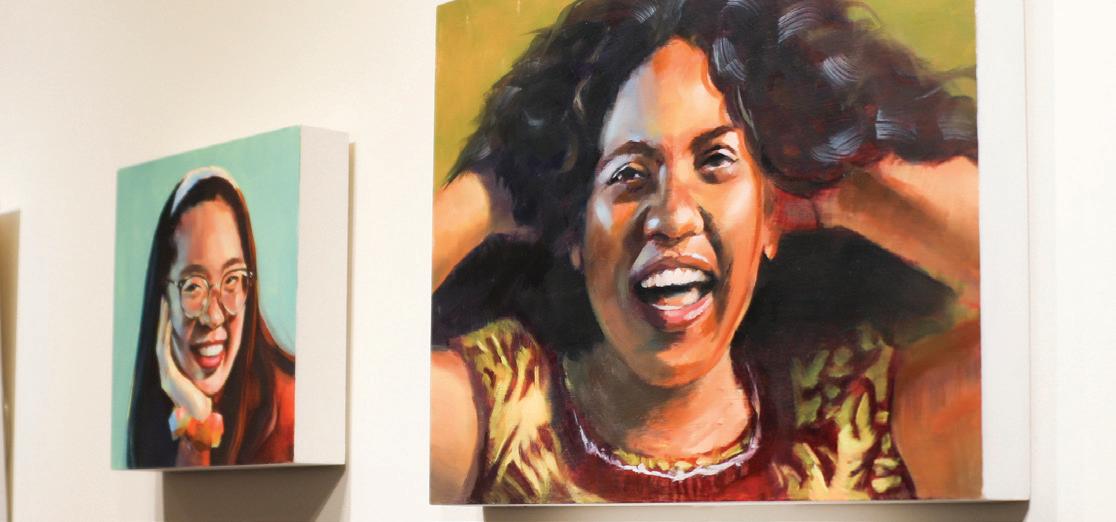
To make a siapo, Lemusuifeauali’i said he used the bark of a paper mulberry tree that he pounded, glued and assembled together to get the desired thickness, length and width. As for the designs, since the siapo displayed in the exhibition was an order from a lady in New Zealand, he said, “Each of the patterns is very specific to her and her family and what she plans to use it for.”

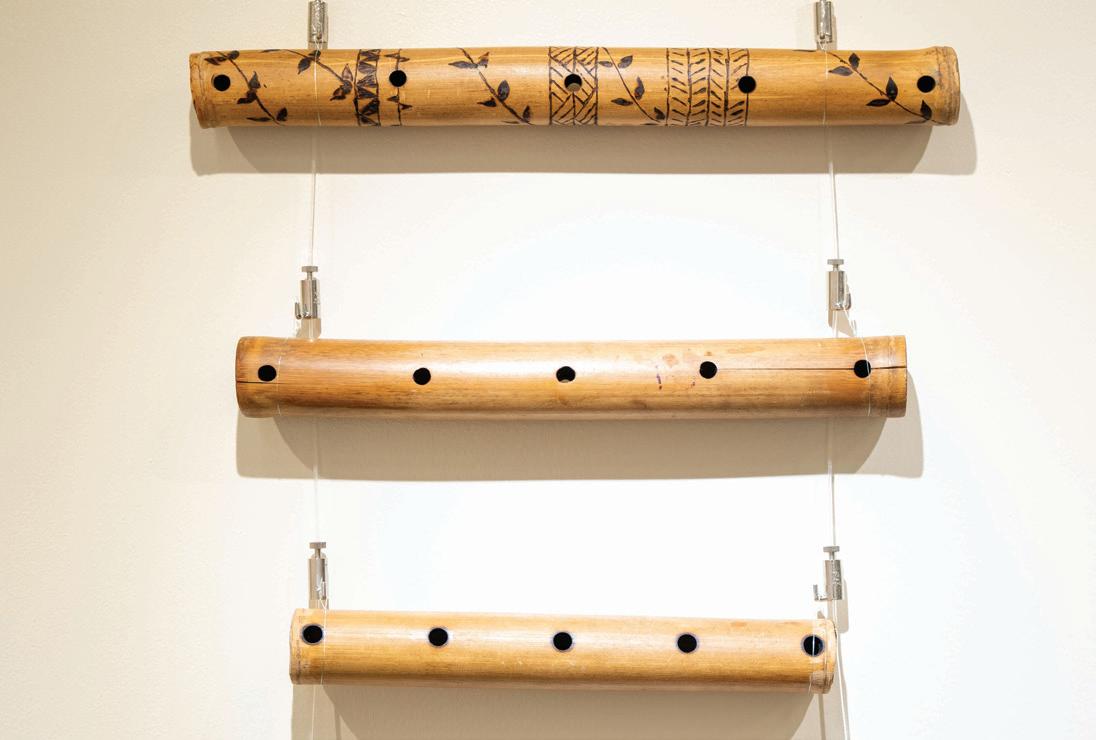
Lemusuifeauali’i explained the importance of understanding the designs and patterns throughout the Pacific, given their abstract representation. “It’s more of their perspective, the idea of how they see the designs and patterns and what it means to them, [rather than the actual copy of it],” he said.
Some of the patterns on the displayed siapo are the “ali ali au,” or black small triangles for the trochus shells, which represents wealth, status and unity, and a flower for the banana flower, which represents the connection to the land, said Lemusuifeauali’i.
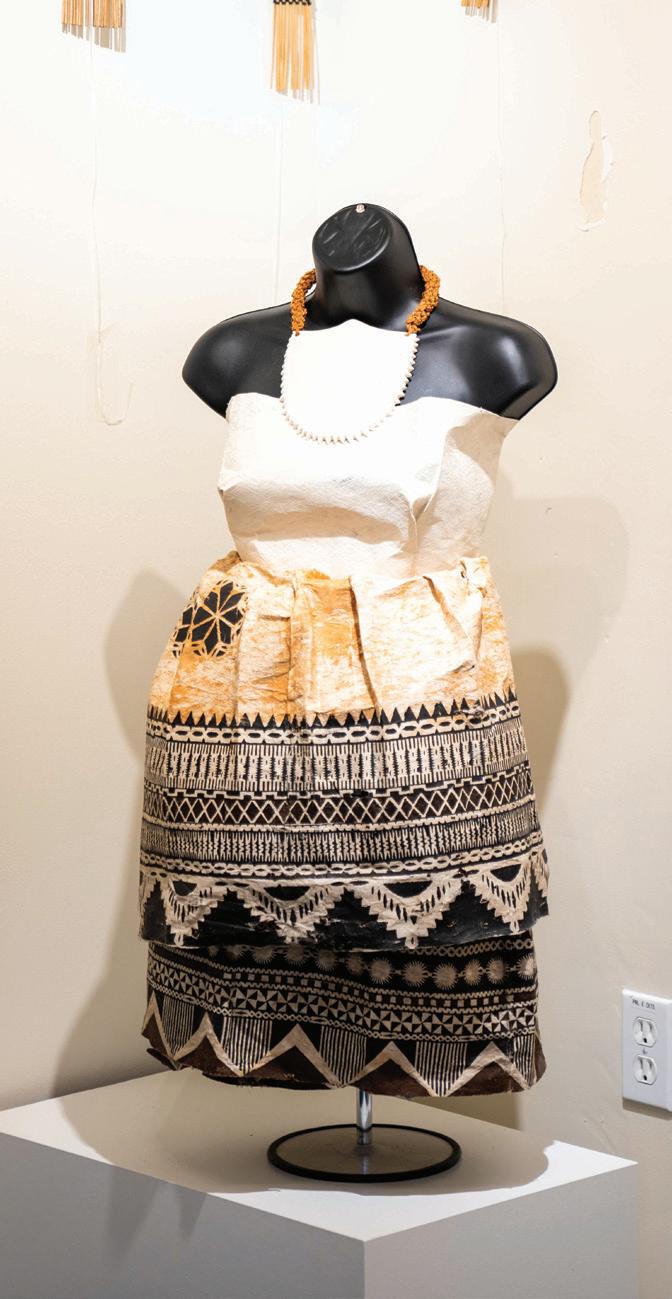
Julius Tafiti, a member of the community, displayed his single and double fireknives. He said, “[My dad] was one of the fireknife makers [in Oahu], so people would order them all the time. Growing up I got to watch him make them and now that he’s older, he kind of let me fill the orders.”
To make a fireknife, Julius Tafiti said takes him three to four hours in total. “I cut the knives with a grinder and shape the blade all by hand,” said Julius Tafiti. •

 Mark Owen’s sharing his experience with students.
Photo by Zane Saenz. Graphics by Sugarmaa Bataa (Kendra).
Mark Owen’s sharing his experience with students.
Photo by Zane Saenz. Graphics by Sugarmaa Bataa (Kendra).
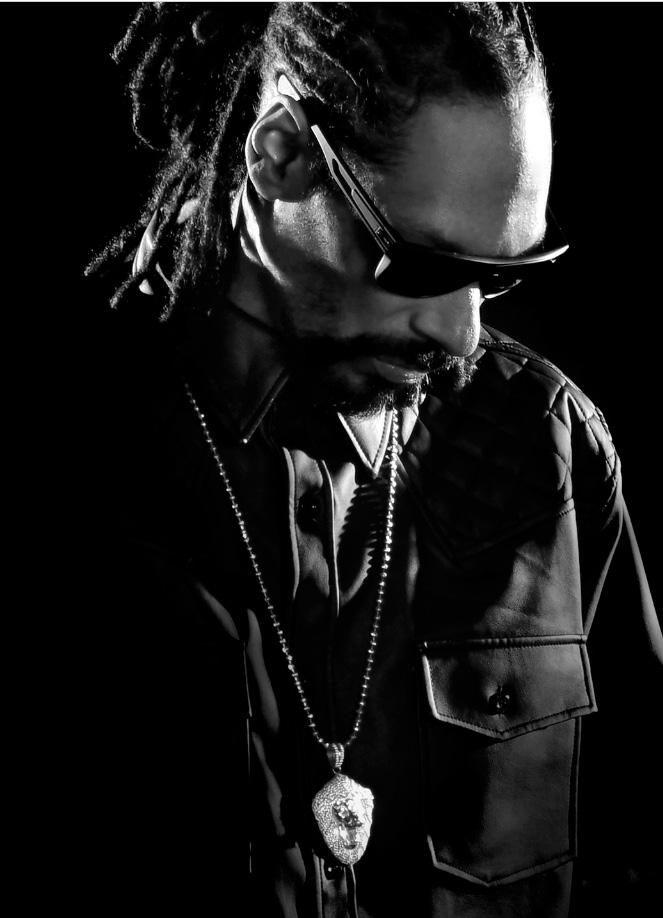
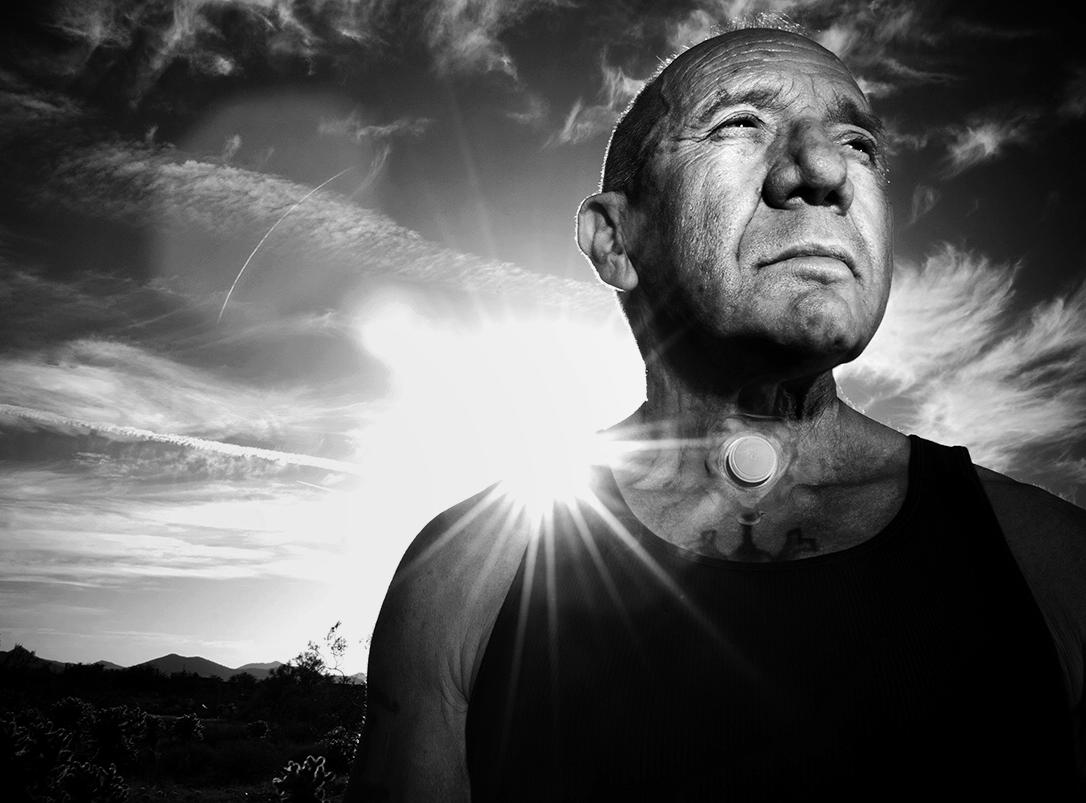
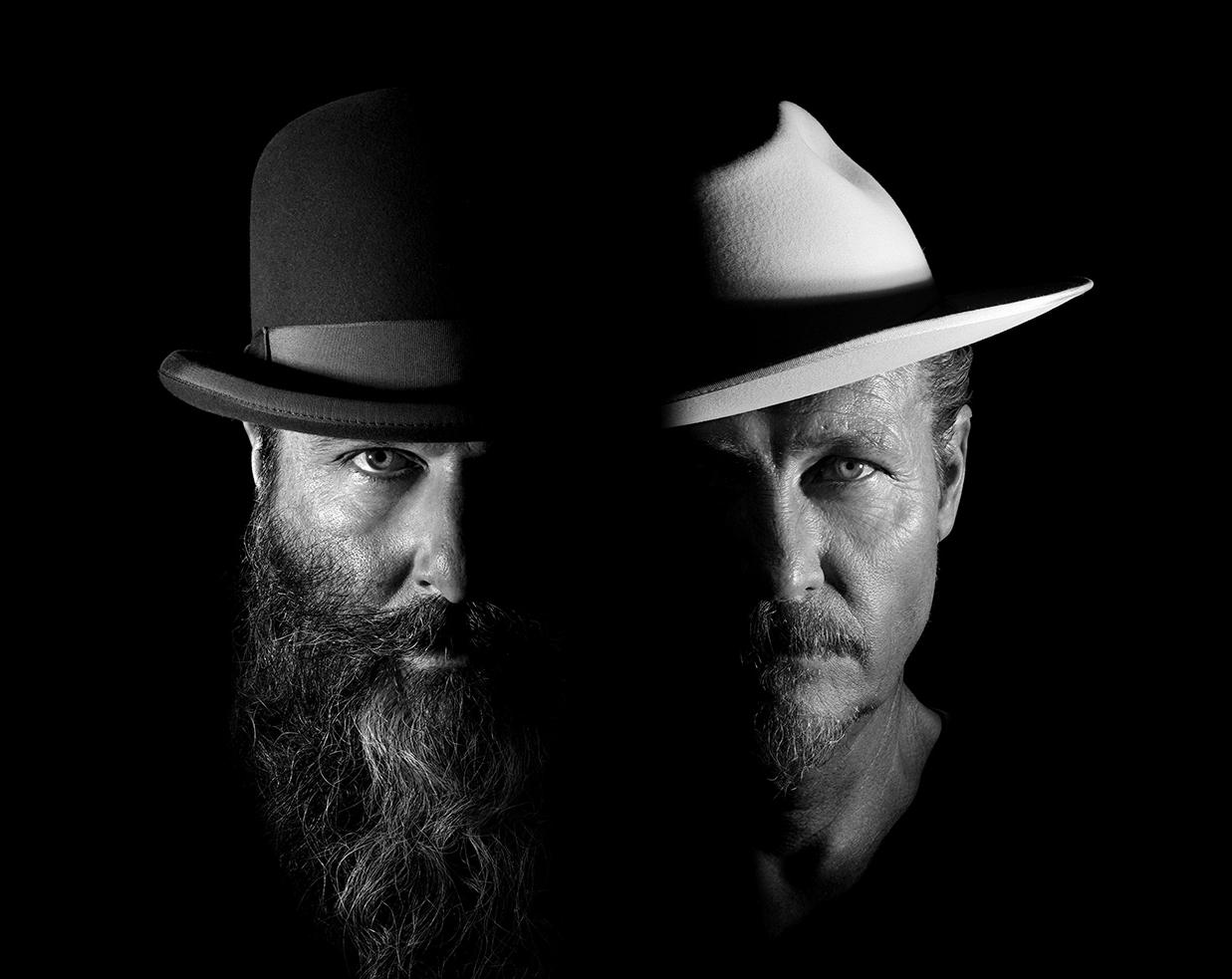 BY LINDA LAULU
BY LINDA LAULU
Mark Owens, a well-known portrait photographer from Walnut Creek, California, was featured as the guest speaker for visual art students, under the invitation of BYU–Hawaii’s University Photographer and instructor in the Faculty of Arts & Letters Monique Saenz. The opportunity to hear Mark Owens was made available to any students majoring or minoring in art, and those who were interested in developing photography or illustration skills.
Owens said he attended BYU in Provo and then served a mission for The Church of Jesus Christ of Latter-day Saints in Quito, Ecuador. After, he returned to school and earned a degree in English. Although he was interested in photography, he said, “I did not have a visual arts degree. In fact, I have [done] all kinds of stuff, such as writing for a magazine and translating for a law firm. [I was] trying to figure out what I should do in order to pursue my interest in photography.”
Owens reviewed three main things he focused on as he prepared to chase his goal of photography. First, he said it was important for him to choose a career that sparked his interest, so he could be good enough to develop on-demand skills. Second, he said he needed to be passionate about it and work hard in improving those necessary skills. Lastly, he wanted to be a faithful member of the Church. He said focusing on these goals increased the opportunities he was given.
He said he was blessed with an internship at a magazine for which he would take pictures. “It was a very intense passion at that point,” Owens said. He said he was shooting products, locations, landscapes and was continuously improving. Owens shared with the students his experiences getting in contact with companies and people, who he said had kind and famous personalities. He said these people helped him through his journey of trying to reach his goals.
Eben-ezer Gonzales, a sophomore from the Philippines majoring in visual arts with an emphasis in painting and illustration, said, “It is extremely cool that Mark Owens shared [about] himself and the path he took. As someone without a degree in visual arts, [this] increased his
experience and knowledge by applying what he has and improving as he goes along.”
Gonzales continued, “I found it very important to apply Owens’ experiences to my life as a visual art student, because I see that he loves and enjoys what he’s doing. In fact, by listening to what he said, it gave me a huge mindset of hope.” Gonzales said hearing Owens speak and share his story, impacted his mind and soul. “I am willing to work hard and make sure to align my decisions as a visual art student with the things that are useful in the gospel relating to photography, art and illustration.”
“[Owens’ presentation] was enlightening and funny,” said Sheryl Giovanni Tania, a senior studying computer science from Jakarta, Indonesia. “He wasn’t rigid, but he cracked jokes about the struggles he faced as a photographer. In fact, he kept it real,” she added with a giggle.
Recalling what she learned from Owen’s presentation, Tania said, “I have learned that if you are working at any type of job that requires producing something for a brand, you shouldn’t feel too possessive of your work.” She continued, “Once you hand it over to the next team, such as the marketing team, it no longer becomes your art and instead becomes a marketing tool. They can edit it in a way that you might not like, but that’s just how it is.”
Tania said she hopes in the future to be persistent in her artistic endeavors, and to hear more from experts who share their experiences in photography.
Saenz said she hopes to have another opportunity to host Owens at BYUH. Students who attended said Owens’ presentation was full of inspiring motivation, significant ideas and great advice on achieving one’s goals to become a photographer in the future.
“Mark is such a great photographer and speaker,” Saenz said. She continued, “He has generously done a few guest lectures for our students over the years and the students particularly love to hear from his personal experiences.” •
After discovering the healing power and testimony of Christ through painting, Macey Cobabe, a senior from California, said she chose to study visual arts as her major. Unlike other visual arts students who may have prepared to be artists since an early age, Cobabe said her decision to focus on art came later in her second year of college. She said her confidence in her art grew after she got accepted into the visual arts program through her portfolio of artwork. Cobabe said she began to recognize her painting abilities while she was serving as a missionary for The Church of Jesus Christ of Latter-day Saints. She explained she had a hard time on her mission because she was still expecting to gain personal spiritual experiences with God when the COVID-19 pandemic hit. As a way to deal with isolation and the feeling of lacking of testimony, Cobabe
said she took a little time at night before bed to meditate and paint Jesus Christ with watercolors. “The only thing that helped me grow closer to Him was having a visual picture of Him. By seeing Him, [my testimony in Christ] was more permanent, like he was actually with me,” said Cobabe.
“I always thought in order to be a painter, you need to be talented, but I realized that it’s a learned talent. … Everyone can do it,” said Cobabe as she shared her experience. She explained in her effort to develop her painting skills, she does not always like to look back at her final result, but she loves how the painting process always validates to her that art can heal and cure. Cobabe said whenever she loses her passion in some of her classes, she knows everything will be okay as soon as she goes to the art studio.
“Because art could heal me, I know that it can heal others. So, I think that’s where my purpose lies,” Cobabe said.
Senior art major says painting pictures of Christ on her mission during the pandemic strengthened her testimony and learn about arts ability to heal

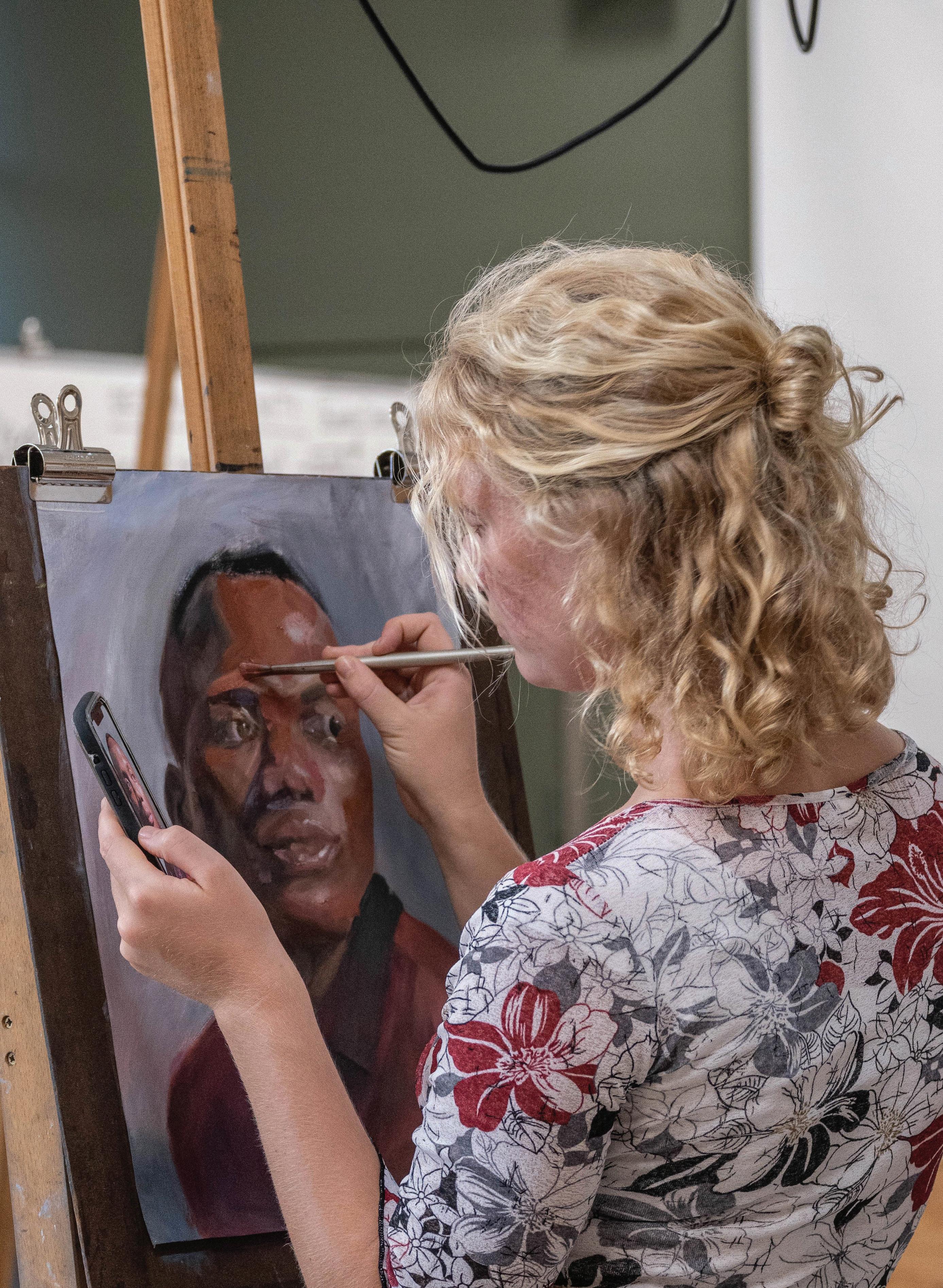 Macey Cobabe painting and her paint palette.
Photos by Joseph Ariono.
Macey Cobabe painting and her paint palette.
Photos by Joseph Ariono.
After she graduates, Cobabe said she wants to move out of her comfort zone by providing healing therapy through art, especially for emigrants or refugees who struggle to adjust to new, extreme environments.

Addison Allred, a senior from Virginia majoring in social work, said, “When I see Macey in the studio, I feel like she is in her element, like it is her place. You can just see it from how she is focused.” Allred said after
being friends with Cobabe from her freshman year, she has noticed how canvas is the medium for Cobabe to pour out her emotion. Allred continued, “She is one of the most genuine and authentic people that you could meet, and I think that comes through her artwork. She expresses her feelings and emotions through her artwork. When you see her artwork, it’s pretty much like meeting her.” •

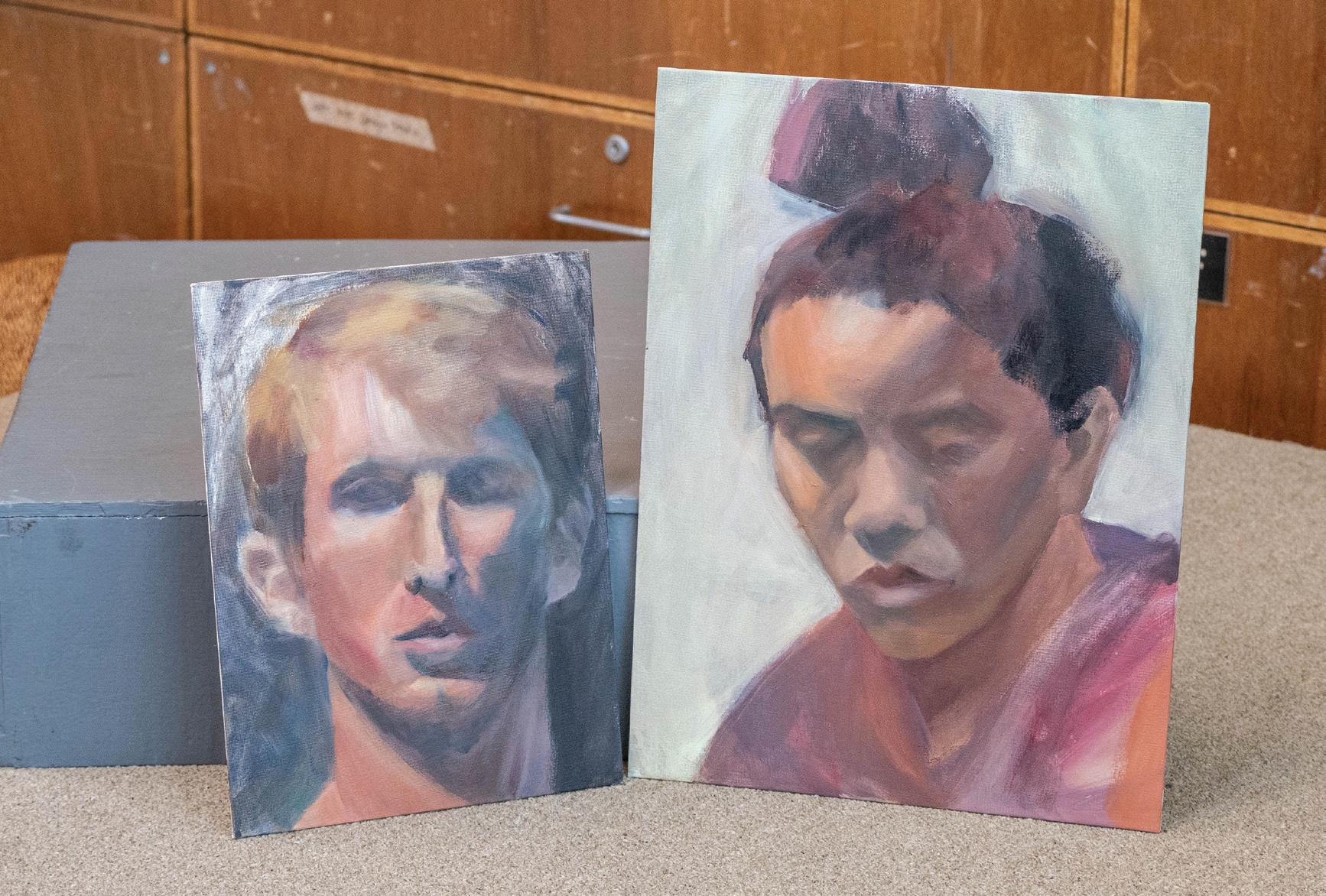

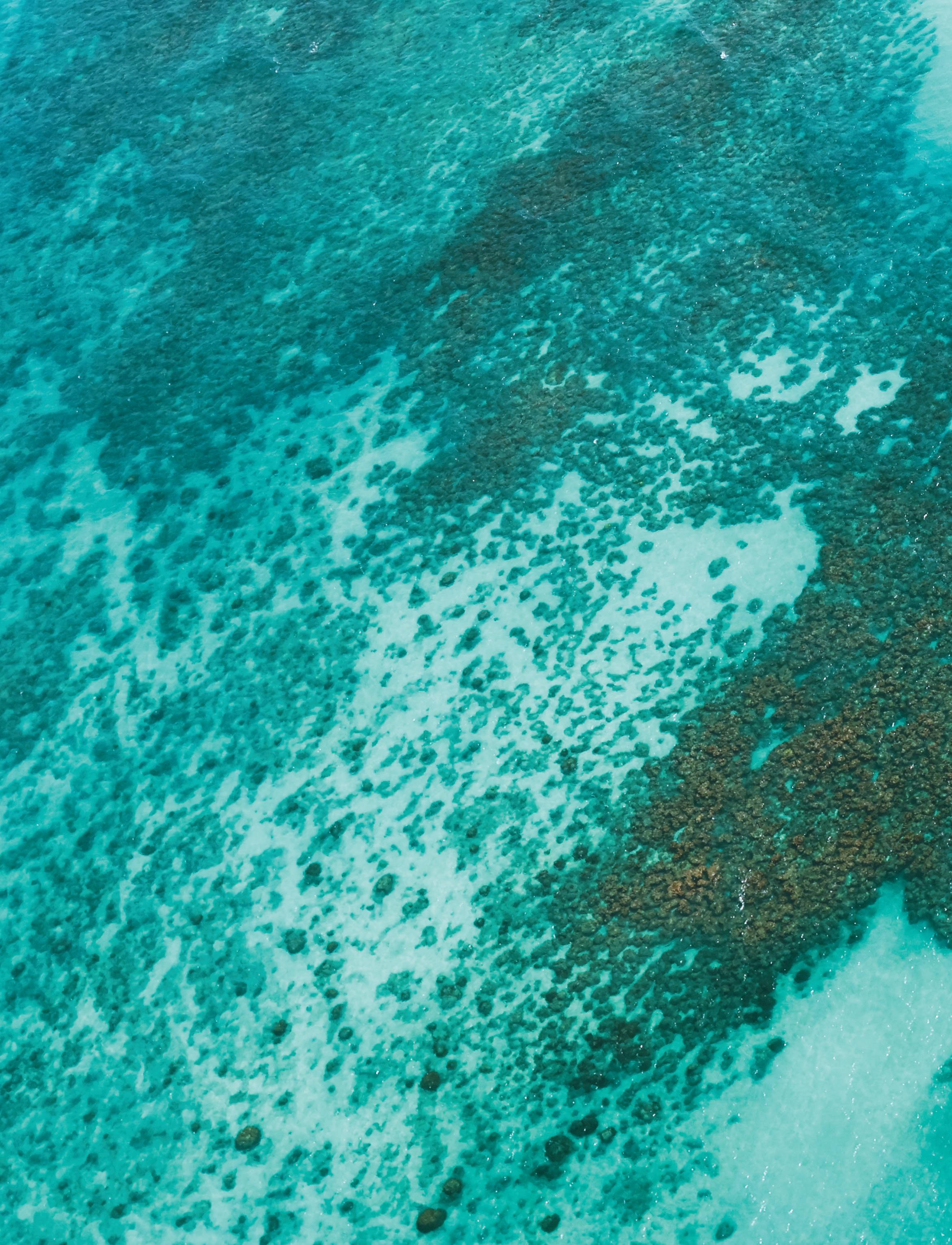 Large photo: Reef at Kaneohe Bay.
Left photo: Ariel shot of Hanauma Bay. Photos by Zane Saenz.
Large photo: Reef at Kaneohe Bay.
Left photo: Ariel shot of Hanauma Bay. Photos by Zane Saenz.
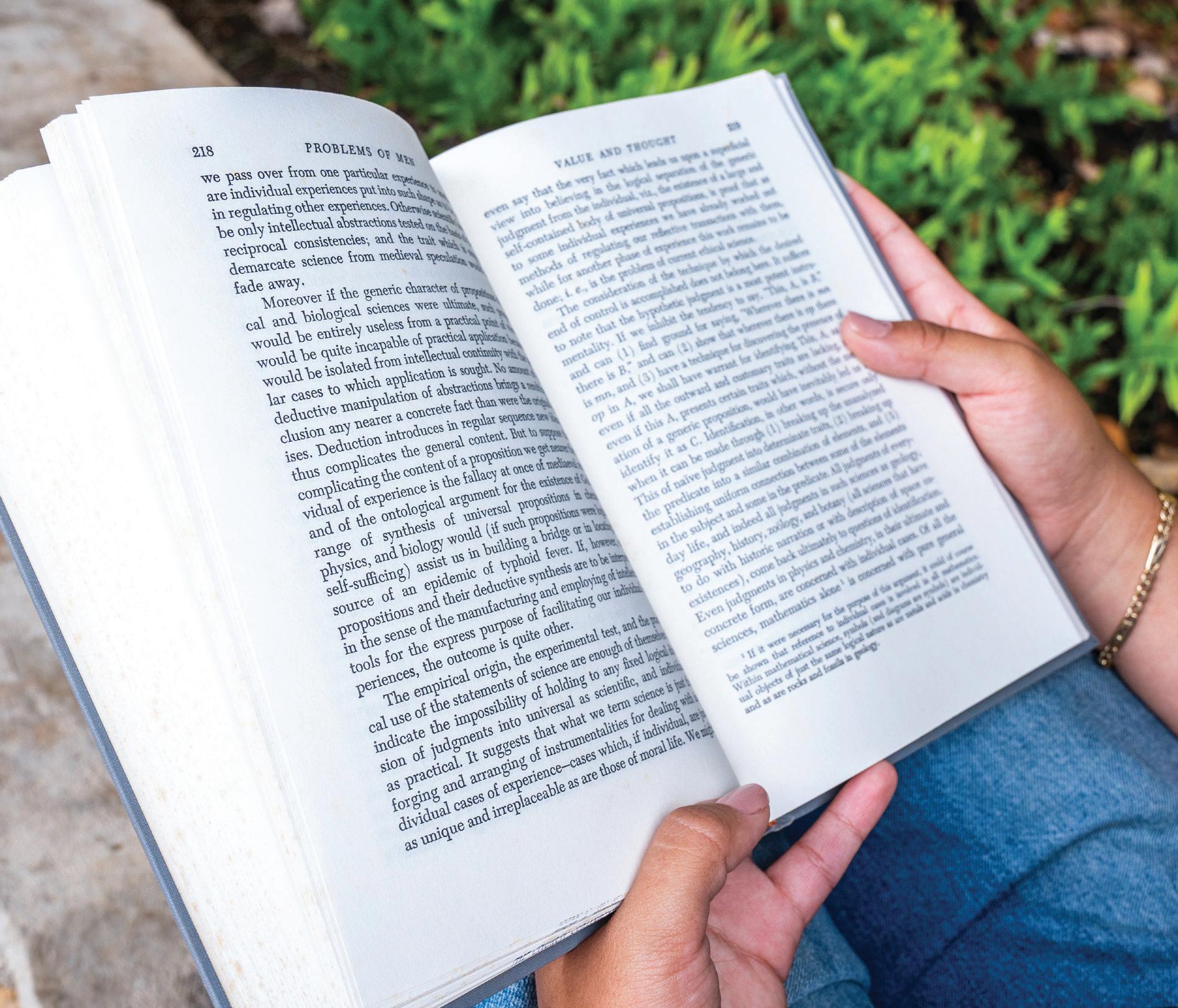
 BY CHENOA FRANCIS
BY CHENOA FRANCIS
Catalina Hernandez-Andrade said although people usually view art as something solely visual, literature is another form of artistic expression.
“To me, art is supposed to feed the soul. It’s supposed to be something greater than you, and literature can do that,” said Hernandez-Andrade, a junior from Colombia double majoring in psychology and English.
Hernandez-Andrade said literature is “an abstract way of translating one’s feelings and thoughts.” She explained similar to a painting, where the artist uses different paints, brushes
and tools, the writer’s tools in literature are words, pen and paper.
Maile Batchelor, a senior from Chicago majoring in psychology, said, “Art is any sort of human expression that makes you feel something. I think literature is definitely a form of art, because writers can make you feel such powerful emotions.”
She explained writers convey emotion through the way they arrange words or through the specific vocabulary they use. Batchelor said if the author does a good job, images pop up in her head and she feels
emotions when she reads the words on the page, making literature art.
“Literature gives us a window into the person,” said Camila Aguado, a junior studying molecular biology from Arizona. She said art is defined as an expression, and literature is a person expressing themselves through a creation other people can read. She said in literature, a person can share their experiences, perspectives and what made them who they are.
“What makes literature a different form of art is how it is more applicable to ourselves. It is more introspective. As you are reading,
You can see ... how [what you are reading] applies to your life currently, rather than what someone was trying to convey,” Aguado said. She explained literature is an art focused on the individual. It is also an escape for people. A moment where readers can leave reality and experience a different perspective, providing an avenue to learn, Aguado said.
Hernandez-Andrade explained there are two phases in literature. First there are words on paper and second is what people do with those words, she said.
She compared literature to a portrait. In a portrait, people can see the colors, the emotions and the meaning, For literature, people read through it and find a way to connect it to what they already know or feel. Then they can begin to understand what the authors are trying to tell them, she explained. “If you don’t put in the effort to see the meaning, then you won’t know what greater things you can learn from it,” HernandezAndrade said.
Batchelor said it is fascinating to her how anyone can read a piece of literature, whether it’s poetry or a novel, and get a different understanding and perspective from it.
“I think literature is really cool because you have so much freedom to mold it to yourself, and to adapt it to your personal life and experiences. [You can] make it meaningful to yourself,” Batchelor said.
Smiling, Batchelor said she has come to love literature because of her parents who helped develop her love for stories. She explained they were both avid readers who read to her every night. Batchelor said she loved when her parents read to her, so much she started to memorize the books they read. “I just thought it was so cool that people could invent these amazing made-up stories, these amazing made-up places and how they could take you there with them,” said Batchelor.
She recounted times where she felt connected to her friends and family through literature. She said literature’s ability to connect people makes it universal. “I’ll read books about other people from different countries or different cultures, and this love is created. … It feels like you have this personal connection with them because [in the books,]
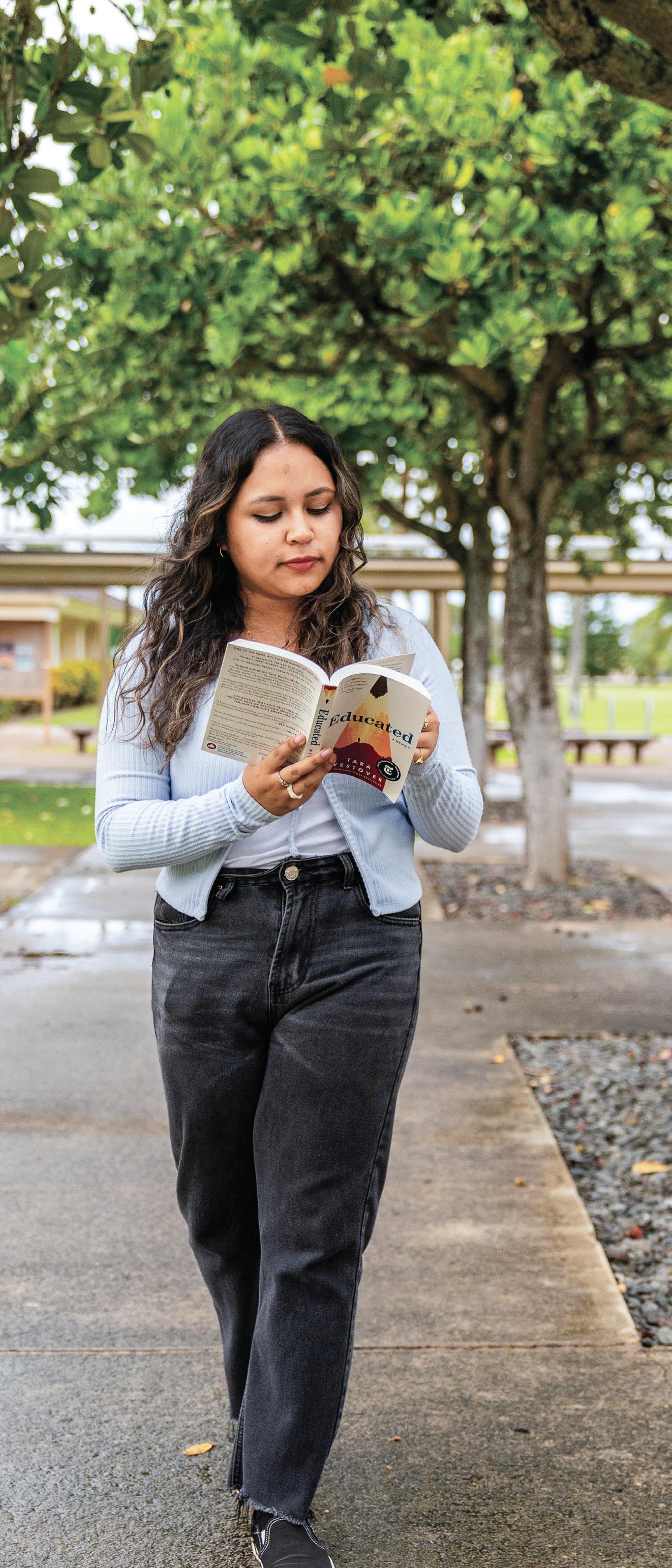
the characters become something real to you, [like] a friend.”
Aguado discussed how literature can create a sense of unity. She said she believes literature can cultivate understanding and empathy between cultures. “We can see when we read that their experience is similar to ours,” she explained. “It can even create the thought that we have never known about this kind of [experience,] which makes it easier to find that sense of unity. Seeing that this is a shared experience, we learn that we are not on our own,” Aguado said.
Aguado said her mother was the one who opened up the world of literature to her, and she learned to love it. One thing she said she loved about reading was the communication that occurs between the writer and the reader. “I’m not just getting to know them, I’m getting to know their experiences, their background, why they are the way they are. And I feel literature is a way to get to know someone through their writing.”
Hernandez-Andrade described her experience of entering the world of literature. She said what drew her to English and reading
was knowing she was good at something and that she enjoyed experiencing something new. She continued, “[Learning a new language] opened this door to a whole other world, because when you don’t speak English, you are kind of kept away from a lot of things like understanding literature or the originality of movies, music and books.”
“Perspective, empathy and solidifying relationships, ... literature can be intimate, especially when you share it with someone,” said Hernandez-Andrade, sharing her joy and gratitude for the relationships she has created and strengthened through literature. She said she strengthened her bond with her mother through reading and even met her best friend through their similar interests in reading.
Expressing her love of journaling, Batchelor said, “I write about everything. Whatever is weighing heavily on me is usually what comes out, and then as soon as I write in my journal ... it feels like everything evaporates.” Journaling gives her a chance to organize her mind and understand what’s
happening to her, said Batchelor. She explained it is an excellent way for her to process everything going on in her life. She said expression through literature is so powerful because of how people are able to explain things through writing. Batchelor said she feels it can give people a sense of bravery to write things that are hard to say.
Literature nurtures understanding between humans, said Hernandez-Andrade. “I think literature is the perfect way to connect, … because if you put in the effort, you can understand how it feels to be in that person’s shoes. It allows you to become a more empathetic person, having the ability to connect to people you may not know.”
Since her family moved often due to her father being in the military, HernandezAndrade said she experienced challenges with making and keeping friends. “Reading was a safe space,” she said, explaining reading provided comfort through times when she was lonely or struggling.
Literature is a form of expression, because “it is expressing your past experiences, the style that you choose to write in. It’s

a product of your background and your environment,” Aguado said. She said the author Virginia Woolf writes intricately in a streamof-consciousness way, which reflected her history, what she was going through and her thought process. Aguado added the author Mark Twain, also had a specific writing style. She said she believes his self-expression was a product of his life experiences.
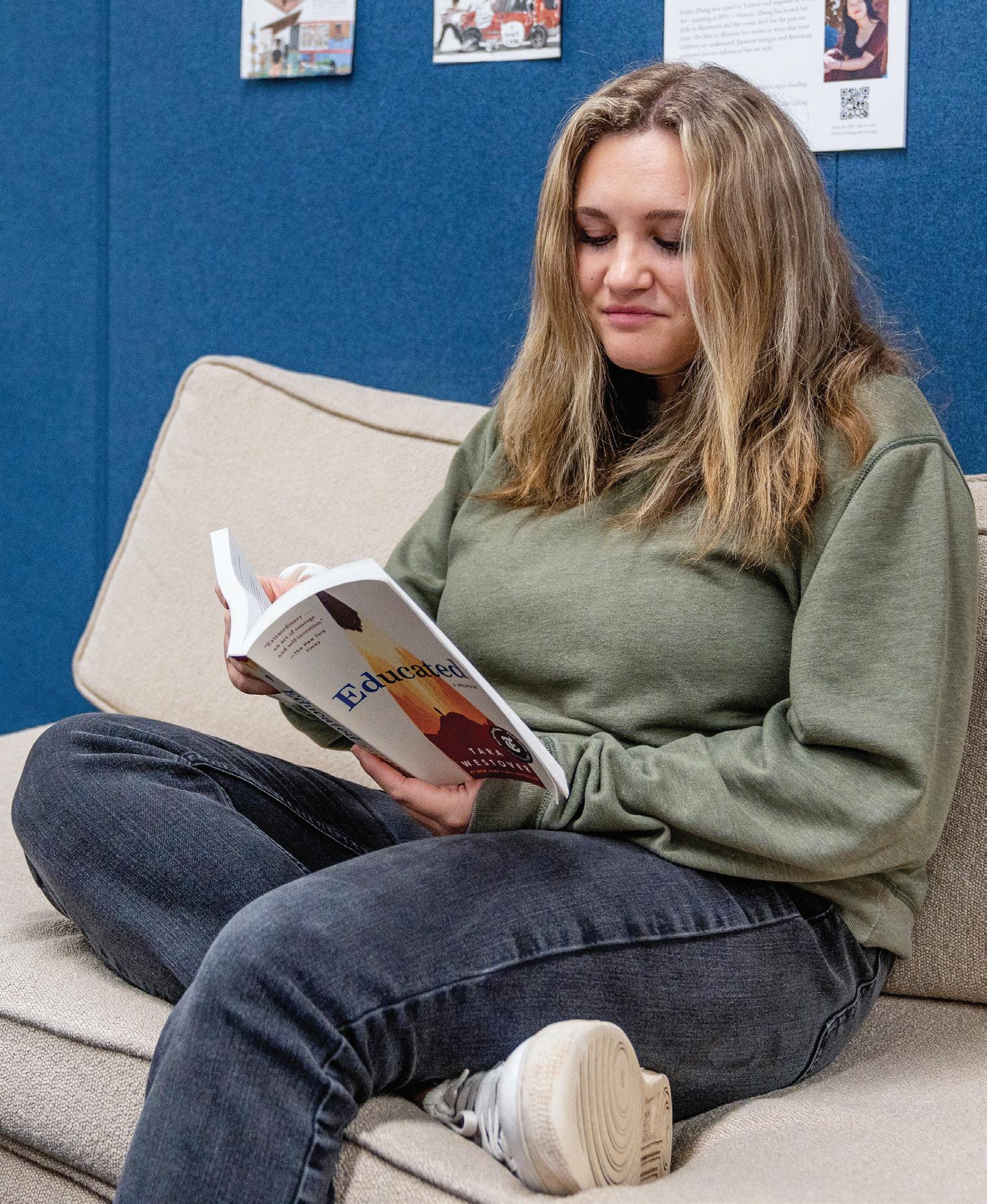
A powerful message Aguado said she enjoyed learning through reading was the duality of life. After reading the book “Being Evil” by Luke Russell, Aguado said she became more aware of the duality of things. She explained, “What I may see as good or bad is a product of how I was raised and where I was raised. And that kind of helped me stop passing judgments in my day-to-day life.” She shared she may see people doing things she doesn’t agree with but tries not to pass any judgments because, she said, they were raised differently and their moral beliefs may be different from hers.
Mia Malit-Cruz“A big theme I have pulled from reading is the power we have in our love for one another. That’s probably my favorite theme,” said Batchelor as she retells the story from the novel, “The Brilliant Life of Eudora Honeysett.” The novel is about an older woman who is coming to the end of her life and, with no desire left, she wishes to die. However, through human connection and the bonds she creates, she decides she wants to live longer.
Hernandez-Andrade shared, “Literature not only expands your knowledge but also puts you in a position where you can become a better person.” She said she learned from her parents and from reading that literature can expand emotional intelligence, perspective and self-awareness, as well as abilities in writing and language. She said, “Literature can seem very small, but it truly can help you become the best version of yourself.” •
“Art is any sort of human expression that makes you feel something. ... Literature is definitely a form of art, because writers can make you feel such powerful emotions,”
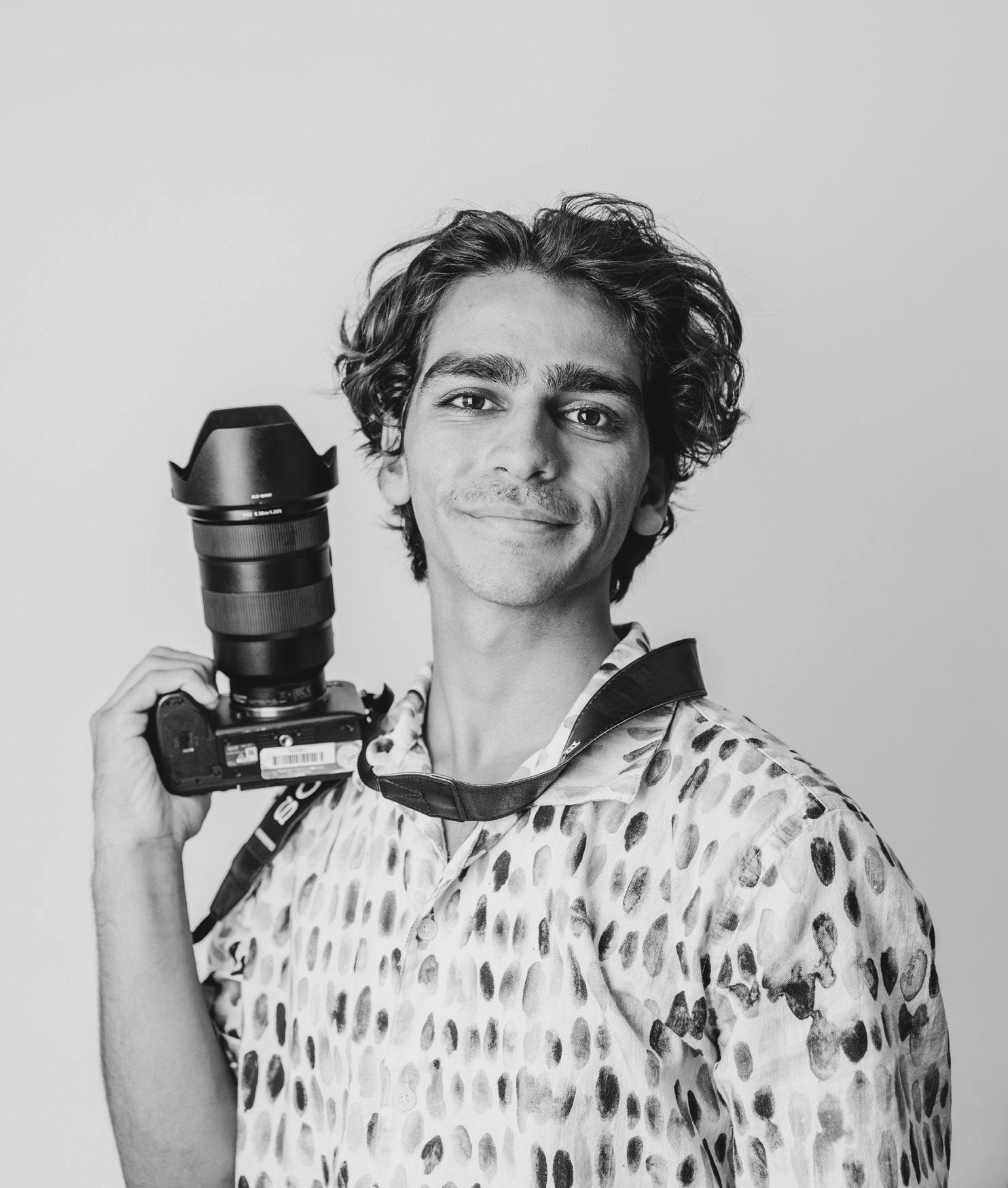

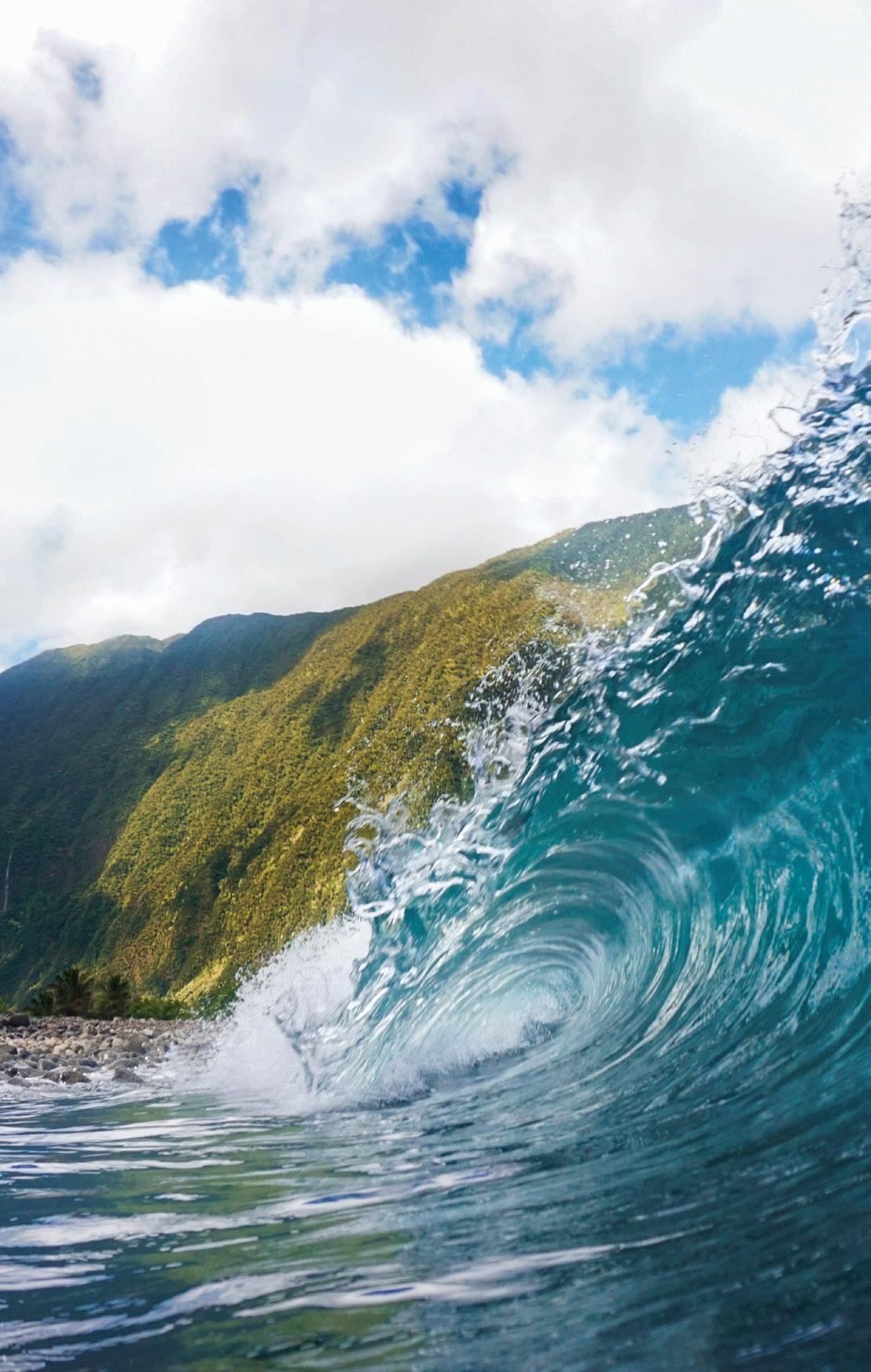
 Hibiscus floating in a pool. Photo by Emarie Majors
Hawaiian wave. Photo by Zane Saenz
Portraits of Zane Saenz (top) and Emarie Majors (bottom).
Photos by Ke Alaka’i photographer.
Hibiscus floating in a pool. Photo by Emarie Majors
Hawaiian wave. Photo by Zane Saenz
Portraits of Zane Saenz (top) and Emarie Majors (bottom).
Photos by Ke Alaka’i photographer.
Growing up with family members who are artists, two BYU–Hawaii students and one alumna said this influenced them to become photographers, with desires to share their unique artistic perspectives with the world.

“We all are artists in our own way,” said Emarie Majors, an alumna from Montana with a bachelor’s in political science. “Photography is my way of being an artist in my family,” which she said has many members who do creative work for a living.
Learning to be a photographer started with having a mother who is an artist, said Majors. She said her mother taught her to be creative and see the world through an artist’s perspective. Majors explained both of her parents, and many of her other family members, are artists and musicians. Since her dad was also a photographer, Majors said she would always go through her dad’s old films and photographs when she was young.
In middle school, Majors said she liked to do photoshoots with her friends and her sister using a digital camera, until she became more serious about doing photography when she was 20 years old. She said, “When I came home from my mission, I saved up all the tips I got at a café I was working at, and I brought a camera.”
After she got her own camera, Majors said she began to learn, practice and took photography classes. She said she also learned about photography from reading books and doing online research.
Aiyarat Buachaiya, a junior from Thailand studying communications, said his journey as a
photographer also started with his mother, who studied photography in college. “She took the class. She had photobooks. One day, I just went through her photobooks, and I [thought] this is really cool,” Buachaiya explained.
During middle school, Buachaiya said he got his first digital camera and began using it to take pictures for school events and sport activities. He said his mother also gave him a film camera and encouraged him to take pictures with it.
“[My mom] had been taking a lot of photos. She is really good,” he added. He said his mother had been a great supporter, teaching him techniques of how to use and adjust the camera.
Family can be a huge source of support as well, according to Zane Saenz, a junior from Hauula working towards a degree in interdisciplinary studies in art and film. Zane Saenz’s mother is a photographer. He said she has influenced and supported him and his interest in photography. “[My mom] has always been a photographer, and we always have a camera to take pictures. So, she is definitely a big influence,” said Zane Saenz. He said he began his journey as a photographer by doing water photography and using the waterproof camera his mother, Monique Saenz, gave to him as a birthday gift when he was 14 years old.
“I always try to support all my kids in anything they are interested in. I feel that [Zane] has a great eye for photography, he has talent, and he is good at learning new things. … He grew up around cameras his entire life,” said Monique Saenz, a BYUH alumni who works as the BYUH university photographer and instructor for the Faculty of Arts & Letters.
Through seeing her son’s creativity and love for the ocean, Monique Saenz said, “I gave him a water camera when he was very young, and he would be shooting pictures of the waves in the water for hours. He would get so excited when he captured a good shot. I knew then he would become a great photographer.”
She said she had been taking pictures since she was in high school. “I was in art technical high school and started learning photography on black and white manual film cameras. We had to learn how to develop our own film and make our photo prints in the dark room, so I got hooked with photography and was always taking photos around of people, buildings and [scenery],” she explained.
“I have my own style, and I feel like my style is just shooting random things. It can be an object, plant, building, architecture, a person [or] nature. Mainly, it’s just street photography,” said Buachaiya. He explained photography is his comfort zone and the way he can express and convey himself to others.
Buachaiya said, “I love to take a walk and just taking photos. I want people to see what I see when I take a walk. You just need to spend time with [your camera], and you will find out what type or style [of photography] you will be fit.”
He added his photography style also falls into travel and documentary photography. He said, “[I want to] travel around the world and take pictures of life, animals and everything.”
Majors said, “Fine art photography is my favorite. So, when I’m thinking about that and creating it, it definitely comes from a very deep emotional and religious place. I think it’s just inspired by spiritual experiences [and] interpretation of scriptures.” She said fine art photography is more about creating an art piece than just taking a picture.
According to the Adobe website, “Fine art photography is the intentional use of photography as your artistic medium of choice, used to further your conceptual idea.”

Besides doing fine art photography, Majors said she also likes to do the fine art still life photography. “It’s the way I can express different emotions I feel that I don’t have words for,” she added.
According to the Pixpa wesbite, “Still-life is a type of fine art photography, more akin to a painting than to what most people think of as taking a photograph.”
Along with doing fine art photography, Majors said food and travel are other forms of photography she is passionate about.
Starting from shooting ocean waves with a GoPro camera, Zane Saenz shared his favorite type of photography began with water photography. As he grew up and started working as a photographer, he said his photography style has changed to taking pictures of the moment people interact with nature and cultural events. He added he can feel the energy and powerful moment through capturing people performing their cultural dancing or events.
“I like capturing action and real moments. Shooting in

“Shooting in the studio is fun. I like it, but I feel like it’s not my favorite as much as shooting actual [and] real moments,” Zane Saenz explained.
Monique Saenz also shared her passion for photography style.
“After high school, I started working for an airline and traveling the world and experiencing different cultures, photographing portraiture as I traveled to these new places, [this] became my passion,” she said.
Then as a student at BYUH, she said she started doing photoshoots and taking pictures everywhere on campus.
“My main thing is being at the right place and at the right time and then all the camera setting stuff is after that,” said Zane Saenz. He explained he makes sure he waits and is ready to capture the objects he finds interesting.
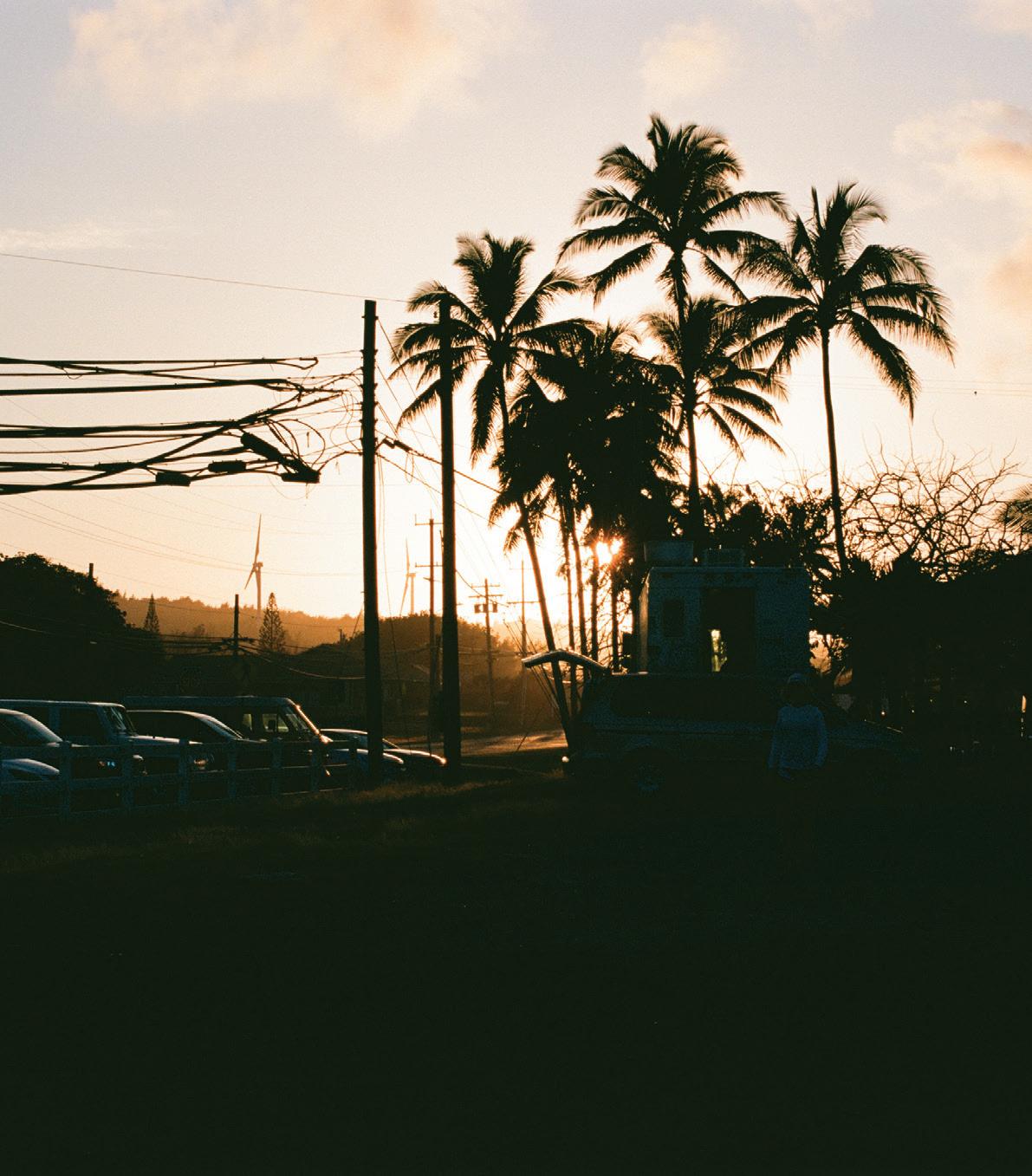
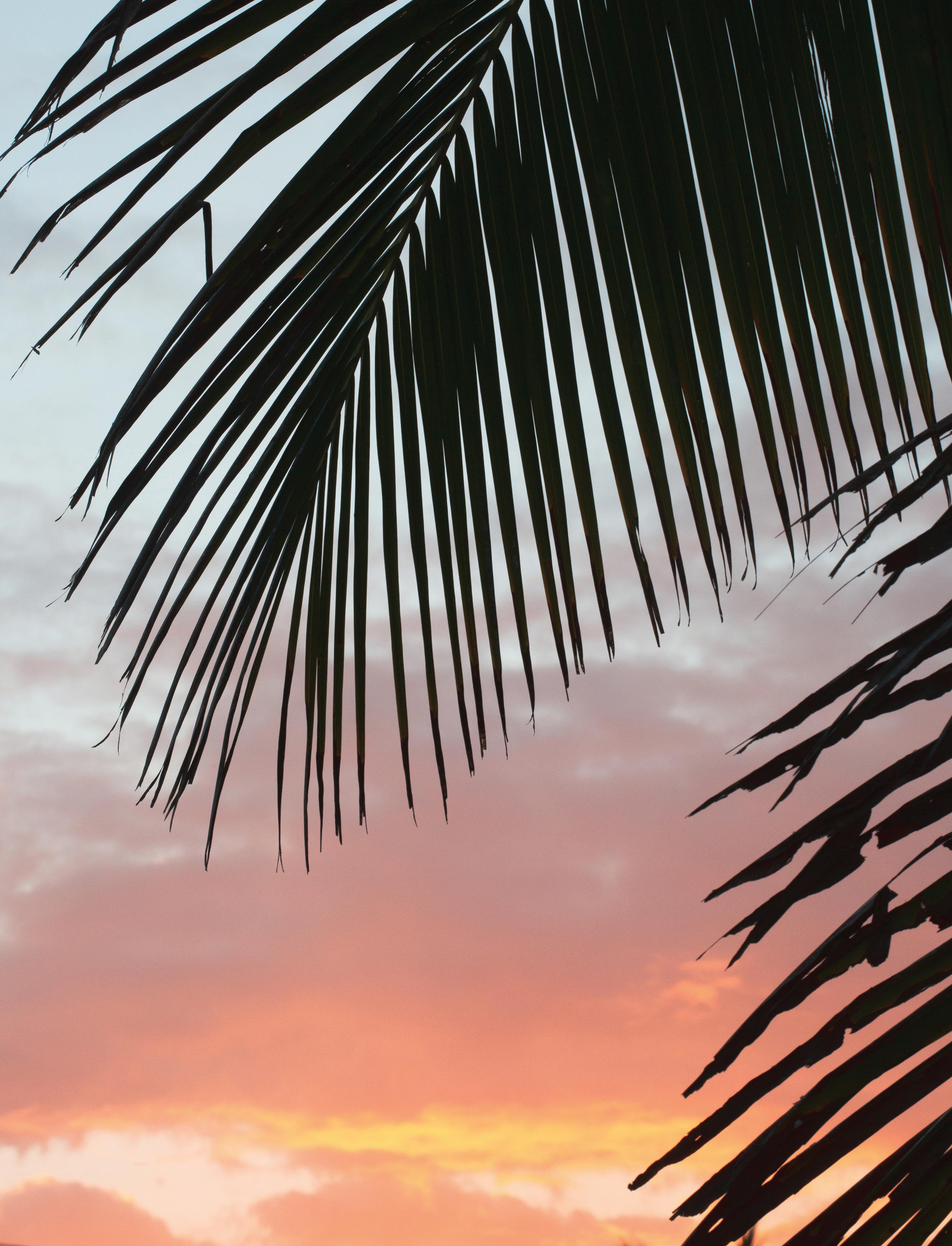
To capture the ocean waves and action shots, Zane Saenz said while everyone runs away from the wave hitting them, he will stand and stay there until the wave comes so he can capture the good shot. “You will always have to just watch because you never know what’s going to happen. ... Be ready to be at the right place. If something crazy happens that you don’t expect, you have to be ready for it,” he explained.
Buachaiya said one of the techniques to create good photographs is to keep practicing. “I will suggest that [you] just keep shooting. Keep taking photos.” He said he started by not thinking too much about being right or wrong, but he just keeping taking pictures wherever he goes until he learns good techniques and found his styles.
Besides learning photography skills through using digital camera, Buachaiya shared he developed his photography skills and techniques through using a film camera and asking for suggestions from his mother.
“Every time you want to shoot or snap, you really need to pay attention to what you see through the view finder and think about every detail and also the technical things too. If anyone has interest in photography, you can start with [learning from doing] film photography. It’s a good start,” Buachaiya said.
For those who want to do general or fine art photography, Majors shared the techniques she uses to produce a great photo. She said, “You need a tripod, and you need a remote clicker so that you can hit the shutter.” Majors added she also relies on a wire to connect her camera to her computer screen to see the camera screen in a larger size.
She said to develop a person’s own unique photography styles, it is good to begin by finding inspiration from the internet or an artist to mimic their works, learn their techniques and compositions.
She added the term taking a photo was translated as making or creating a photo in the Dutch language, which she said made her realize the true meaning of taking pictures. Majors served a mission for the church in the Netherlands and learned the language. “As a photographer, you’re not just like taking shots. It’s like you’re making a crystallization of a moment. It’s like you were part of making [the photo],” Majors said.•
Photo by Emarie Majors. Photo by Aiyarat Buachaiya.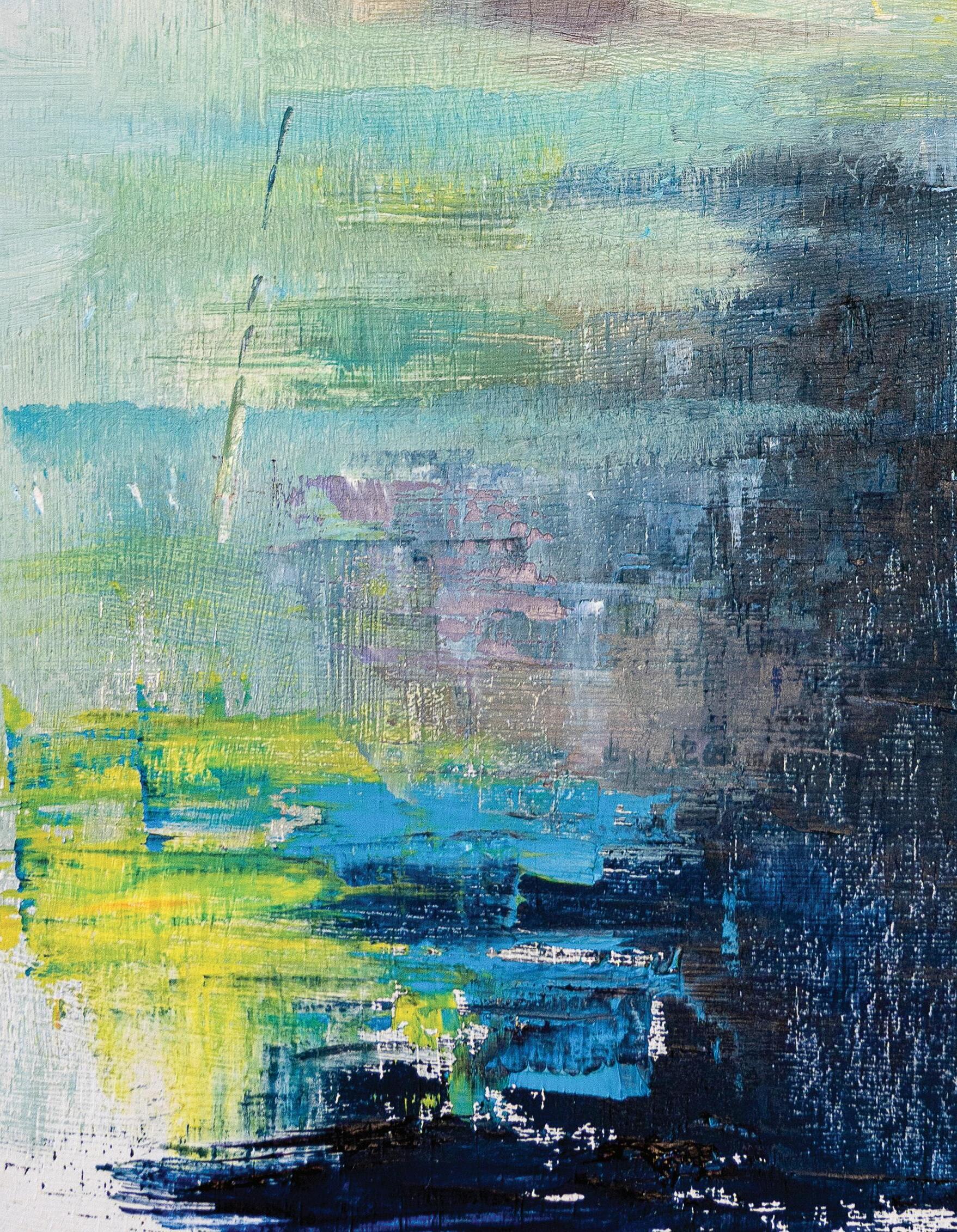
Art should be something that
- Keith Haring -
“